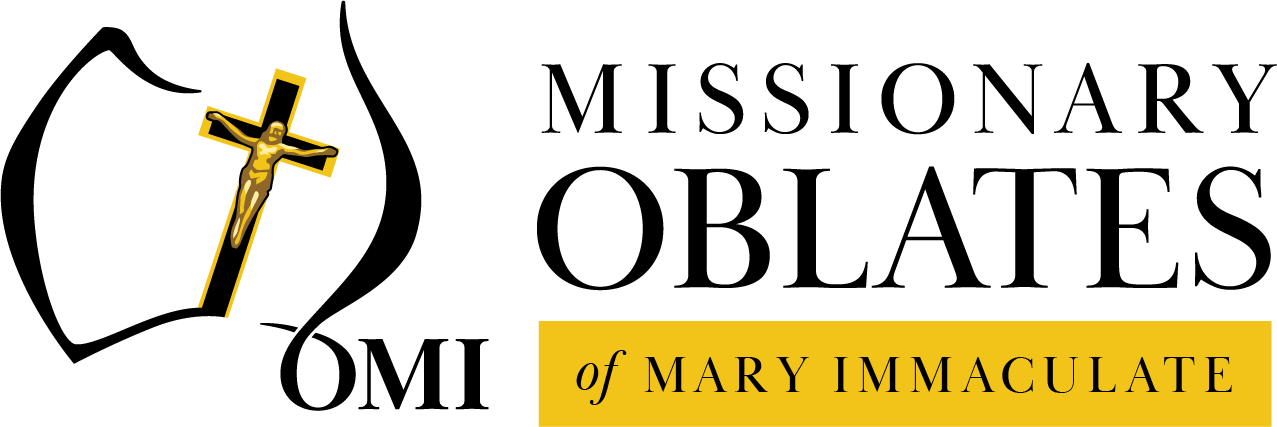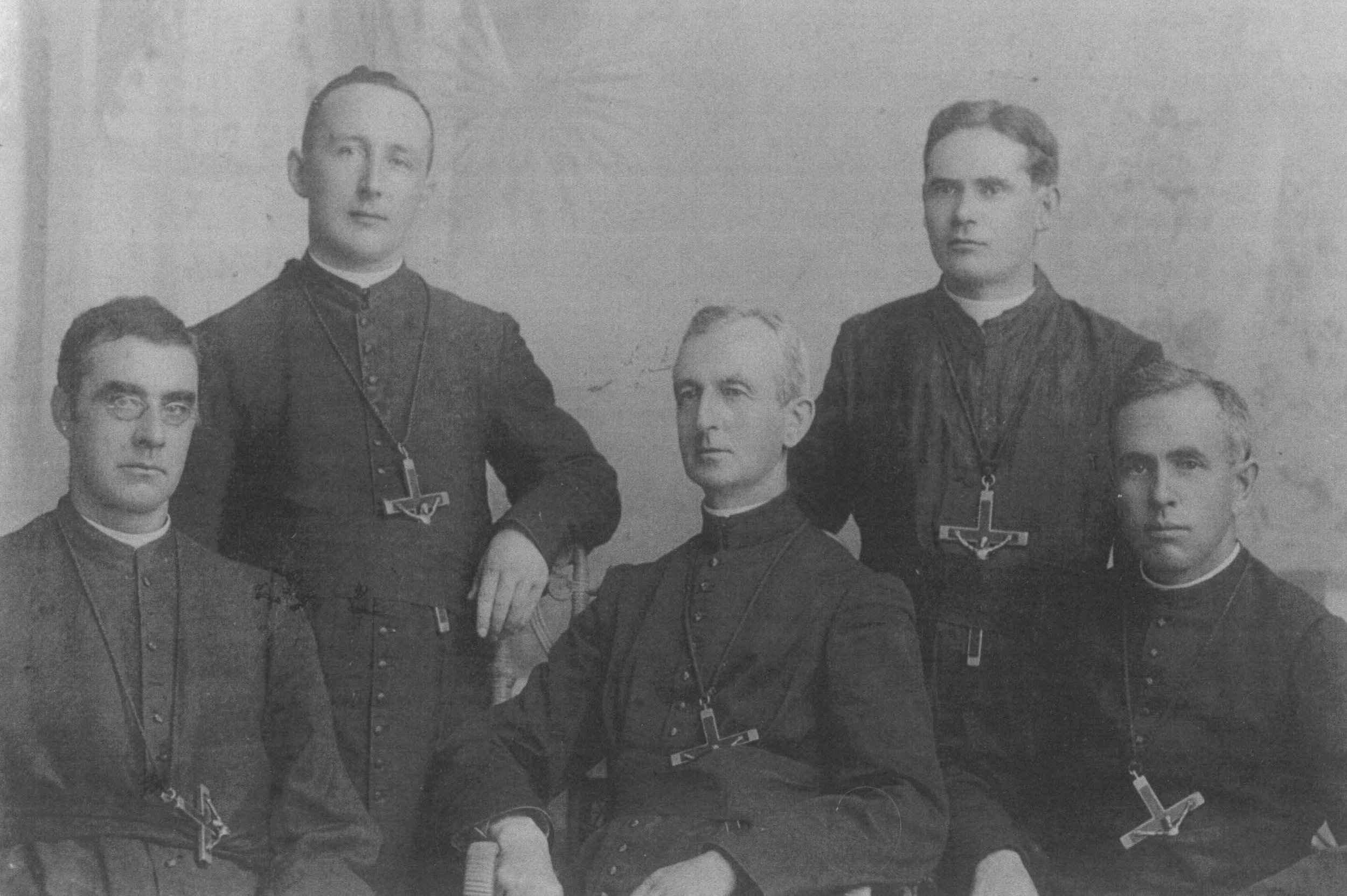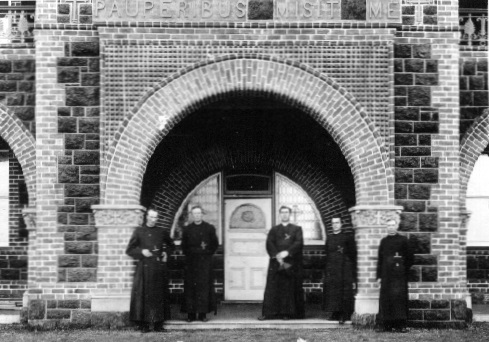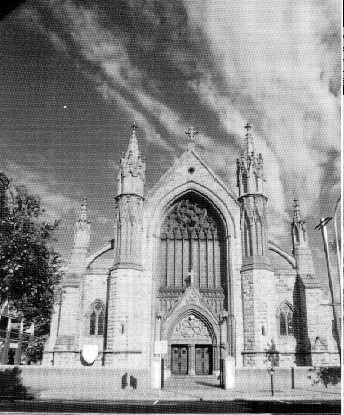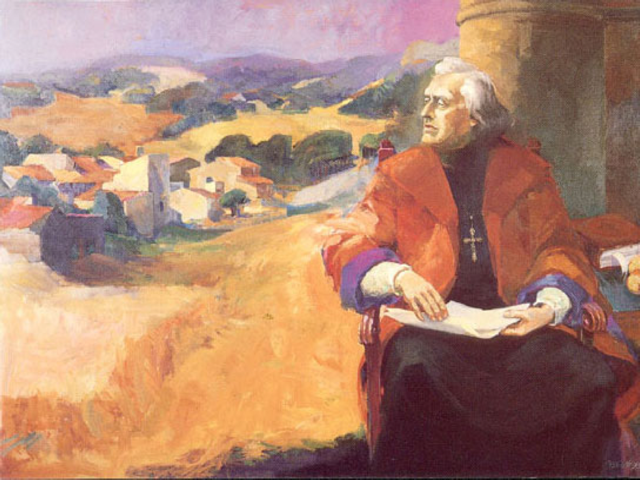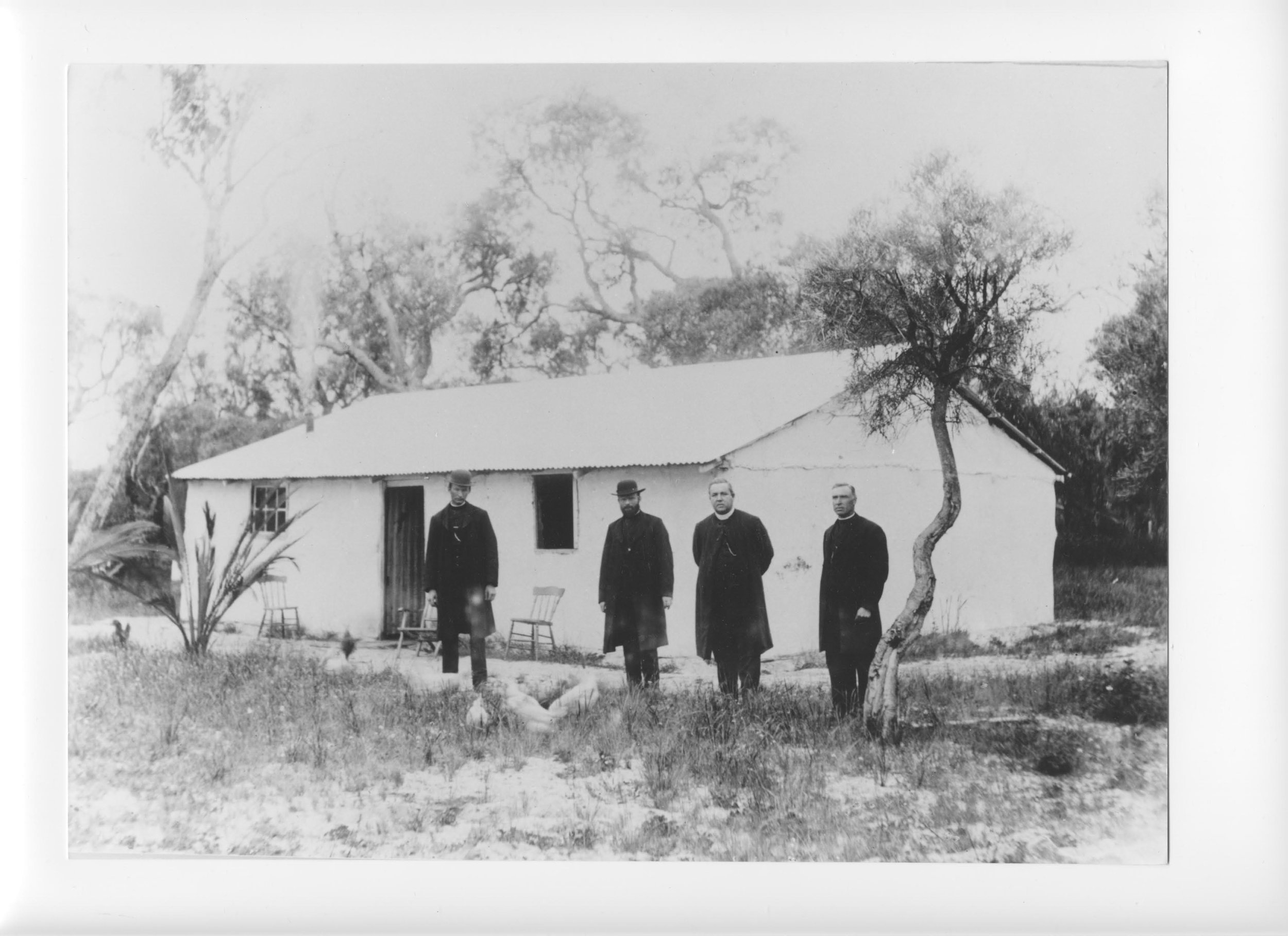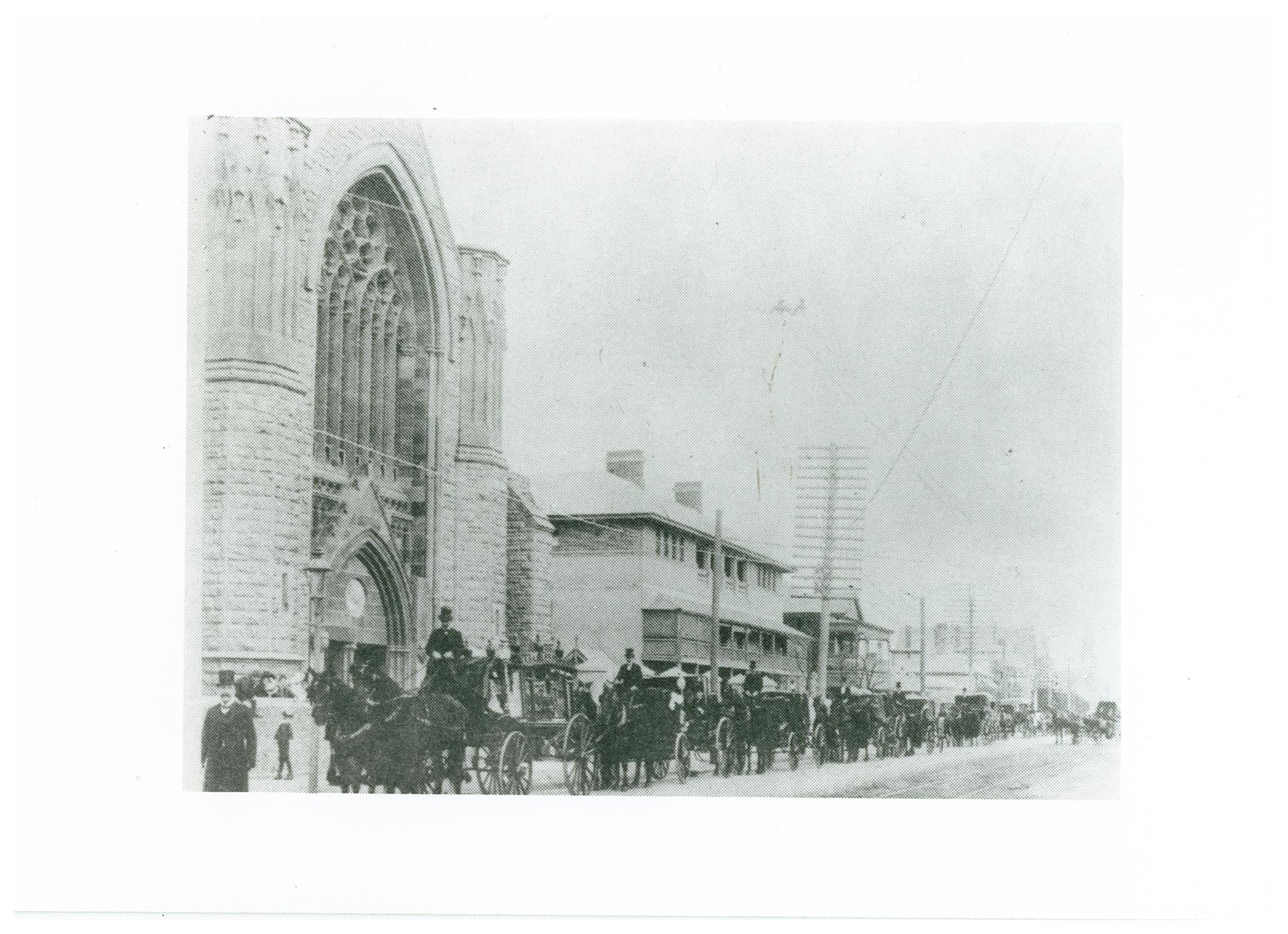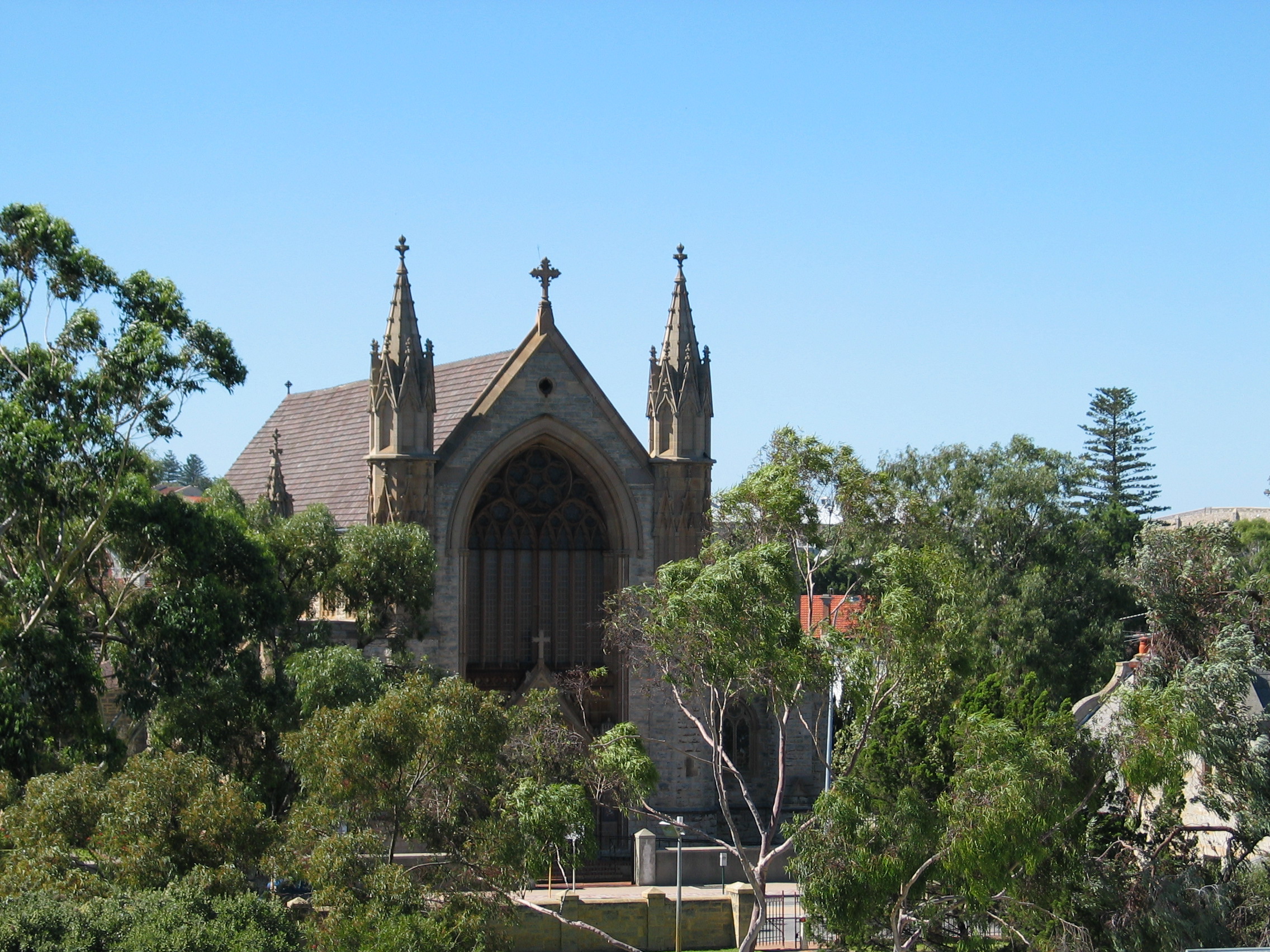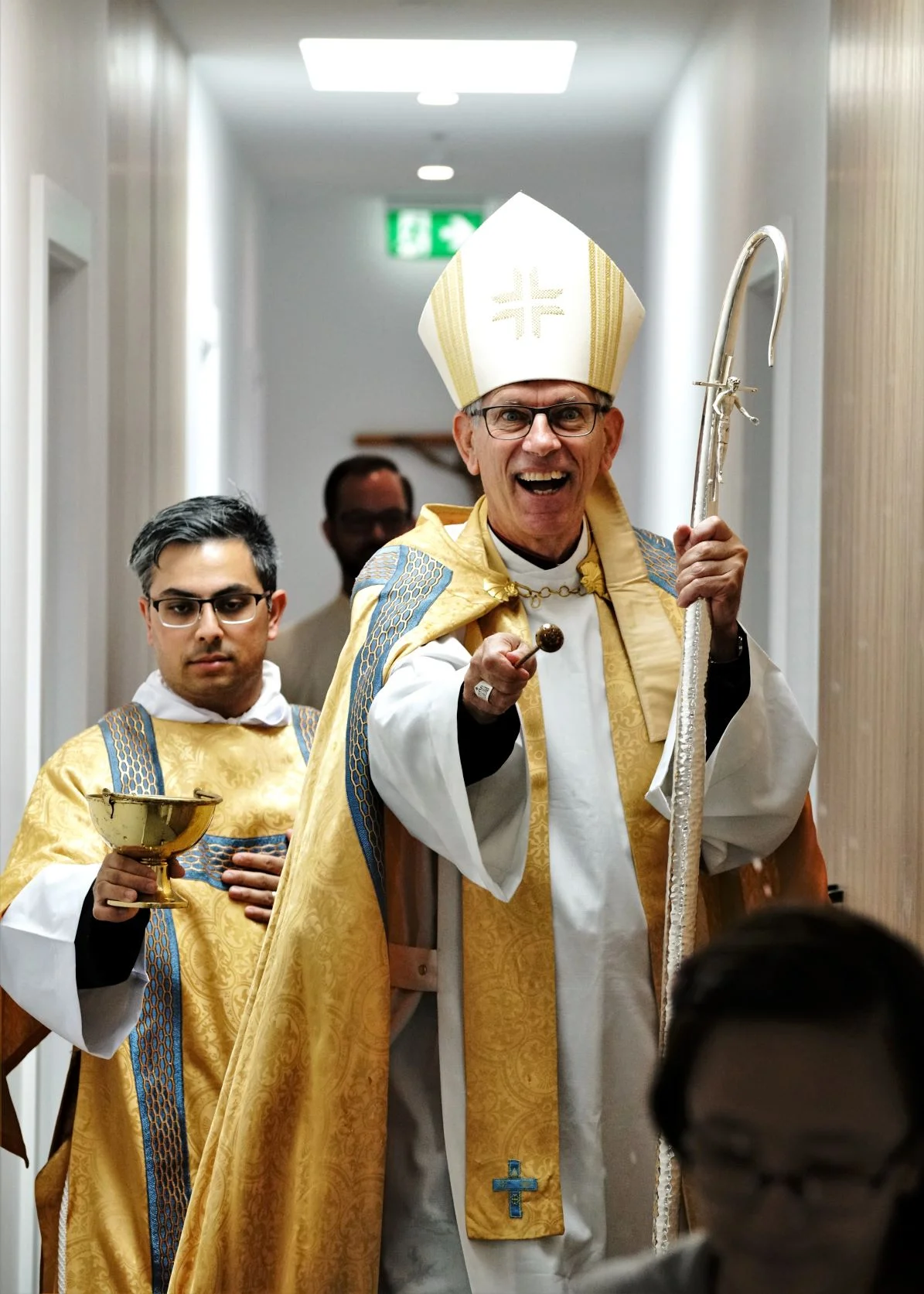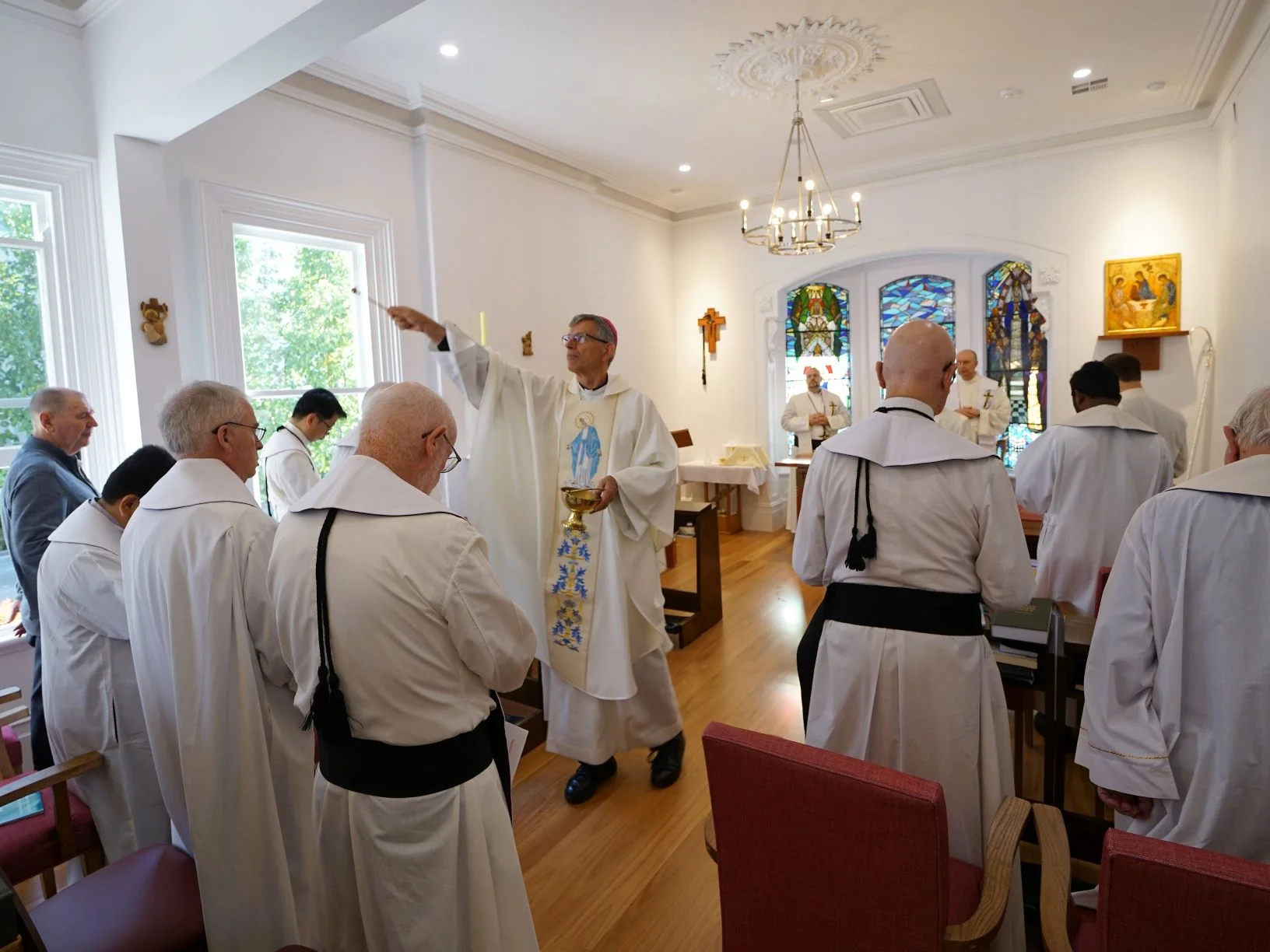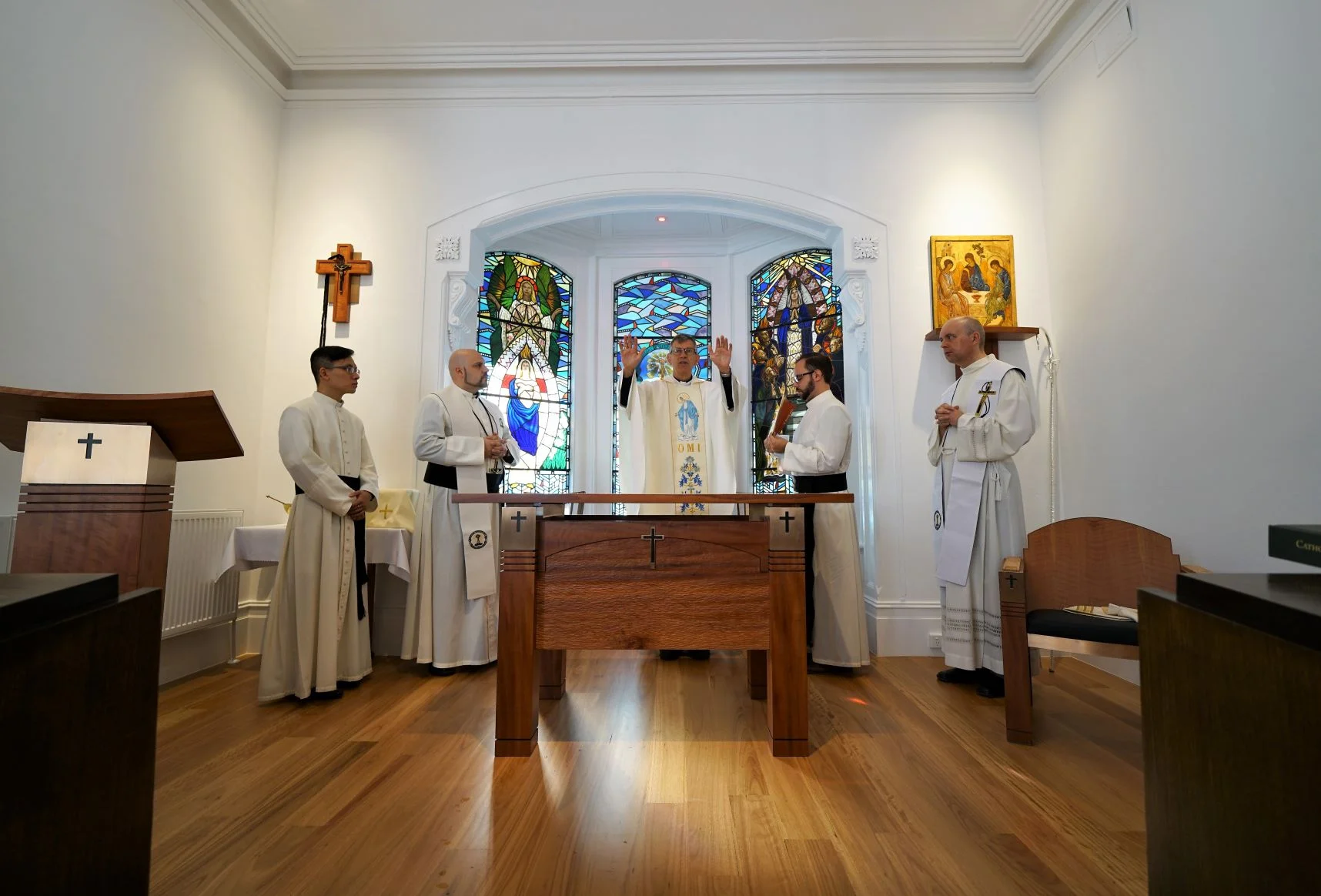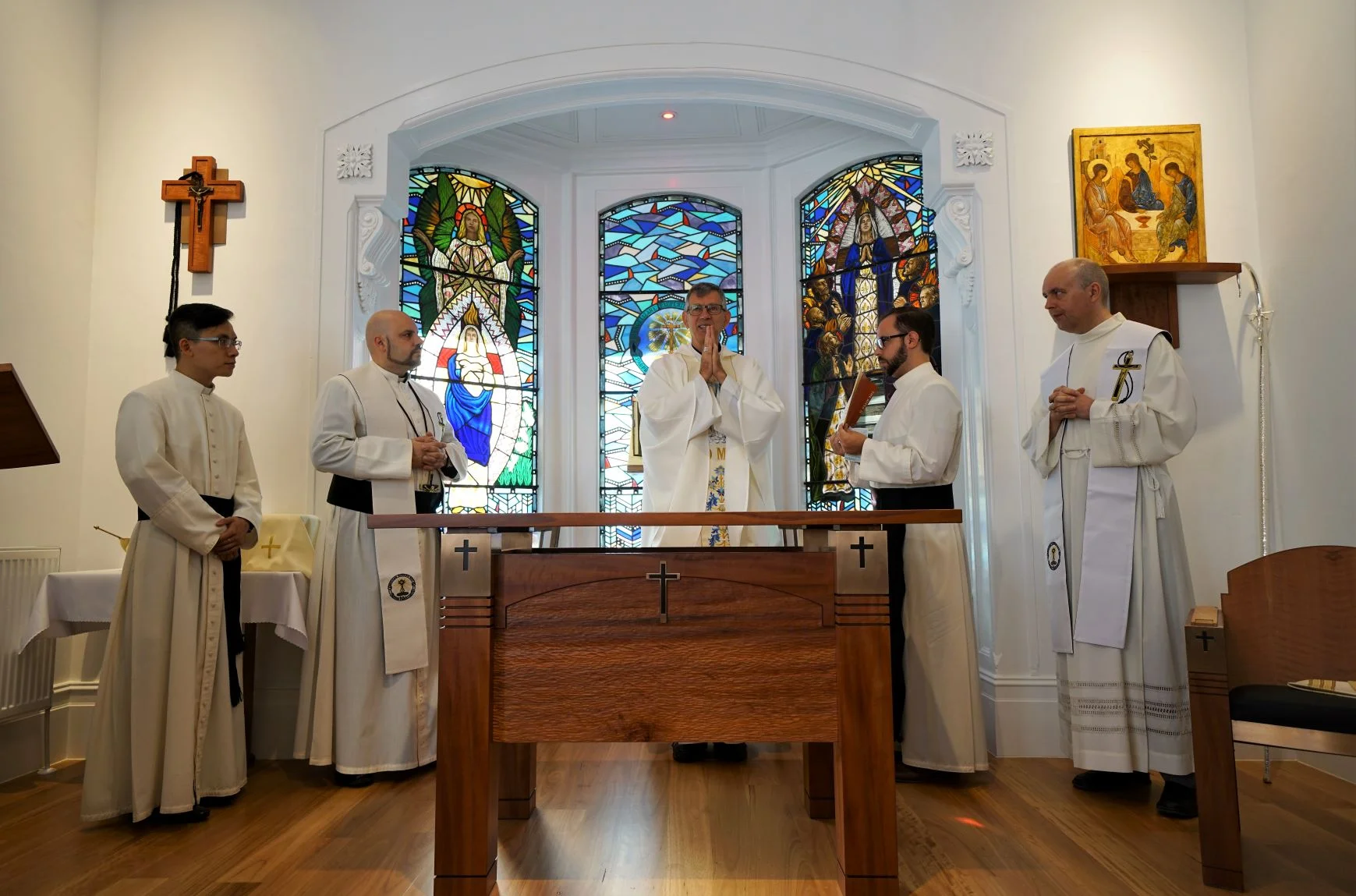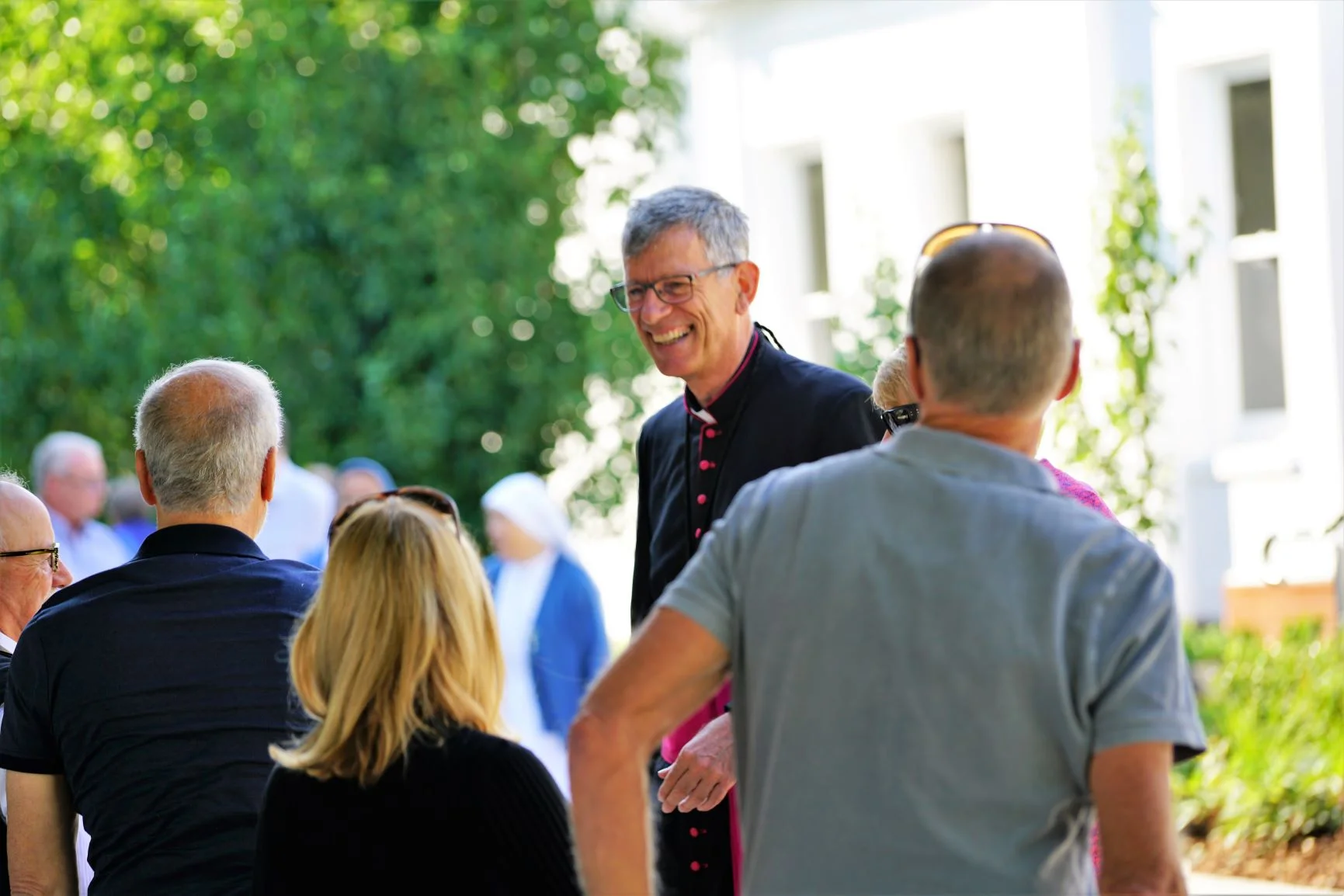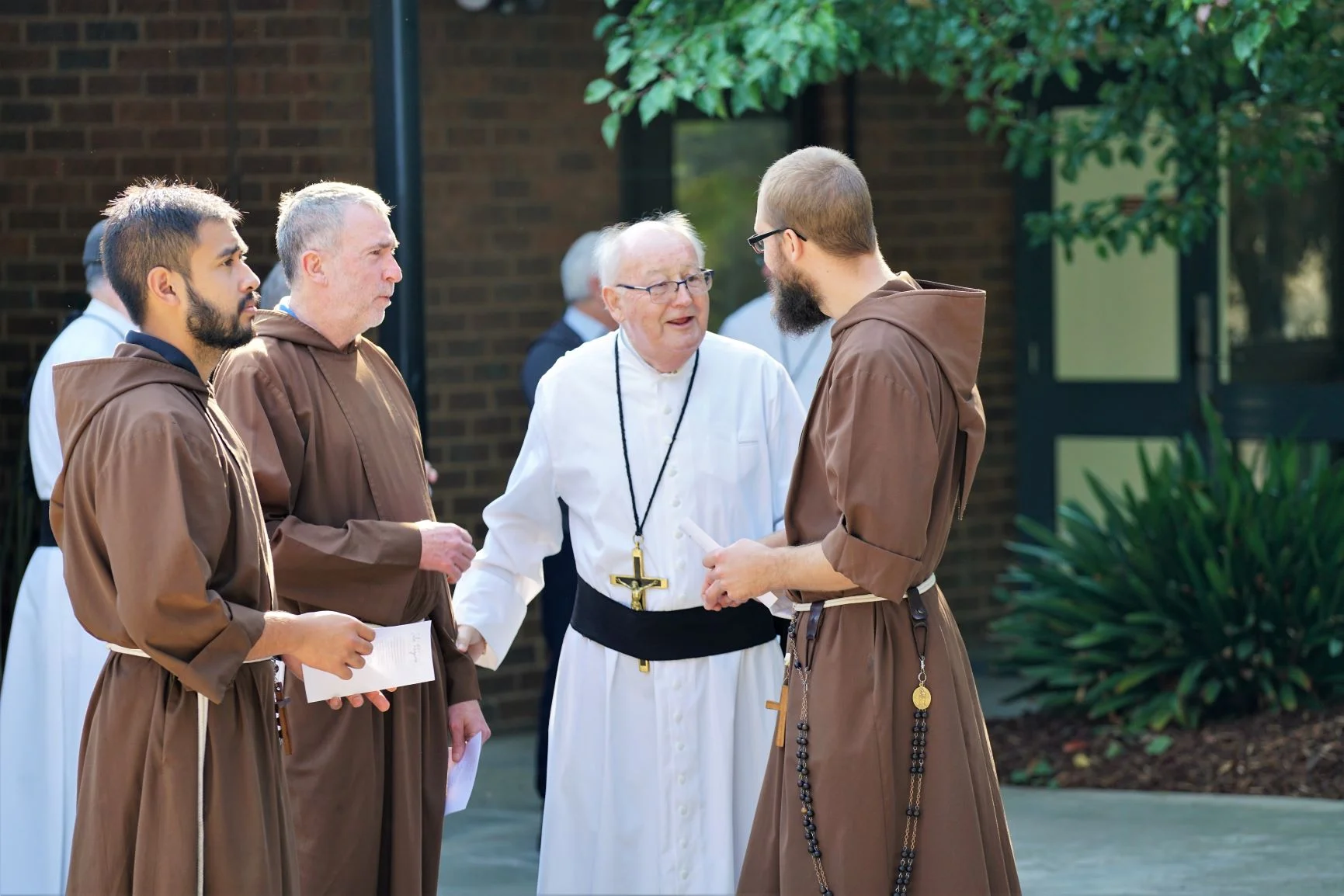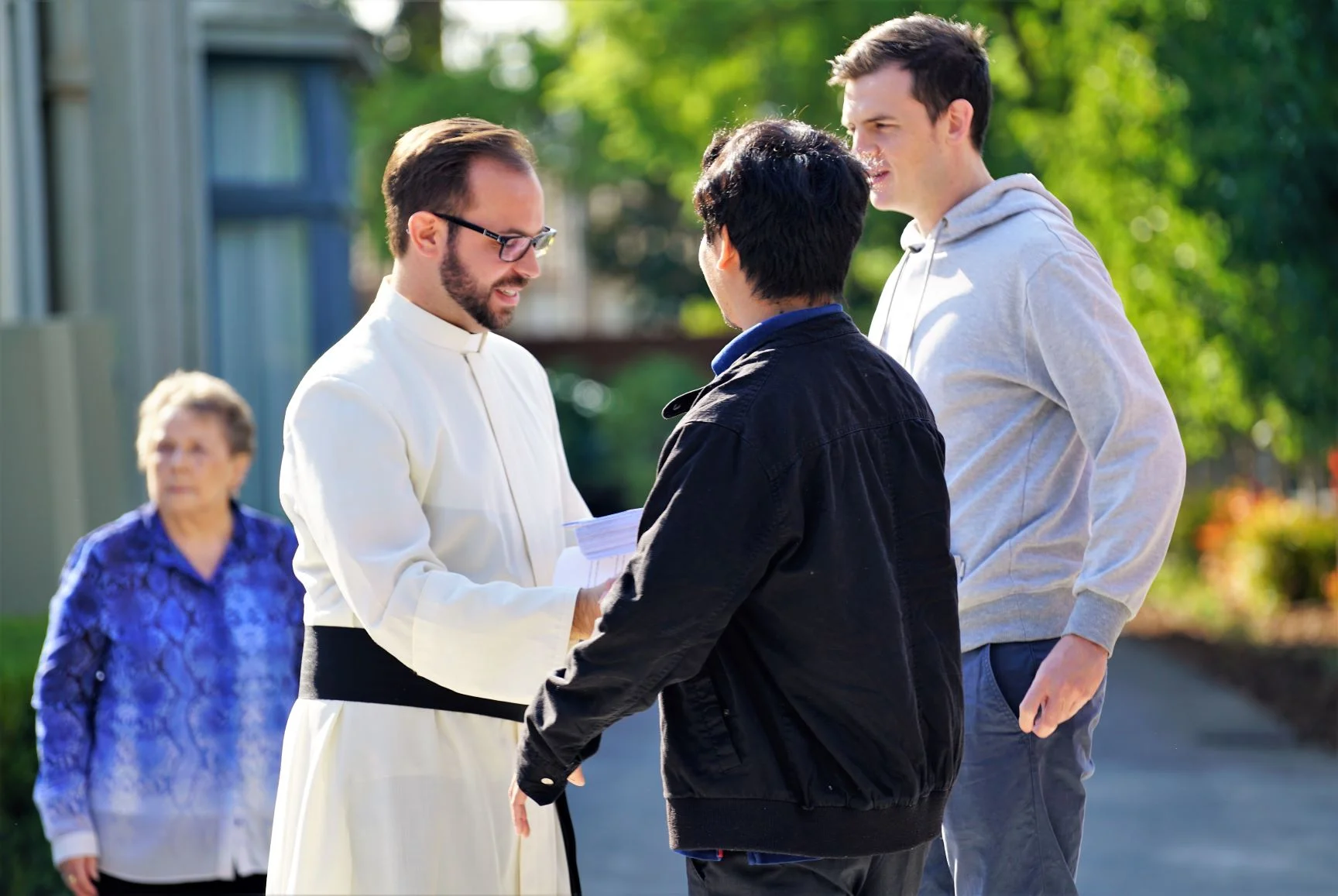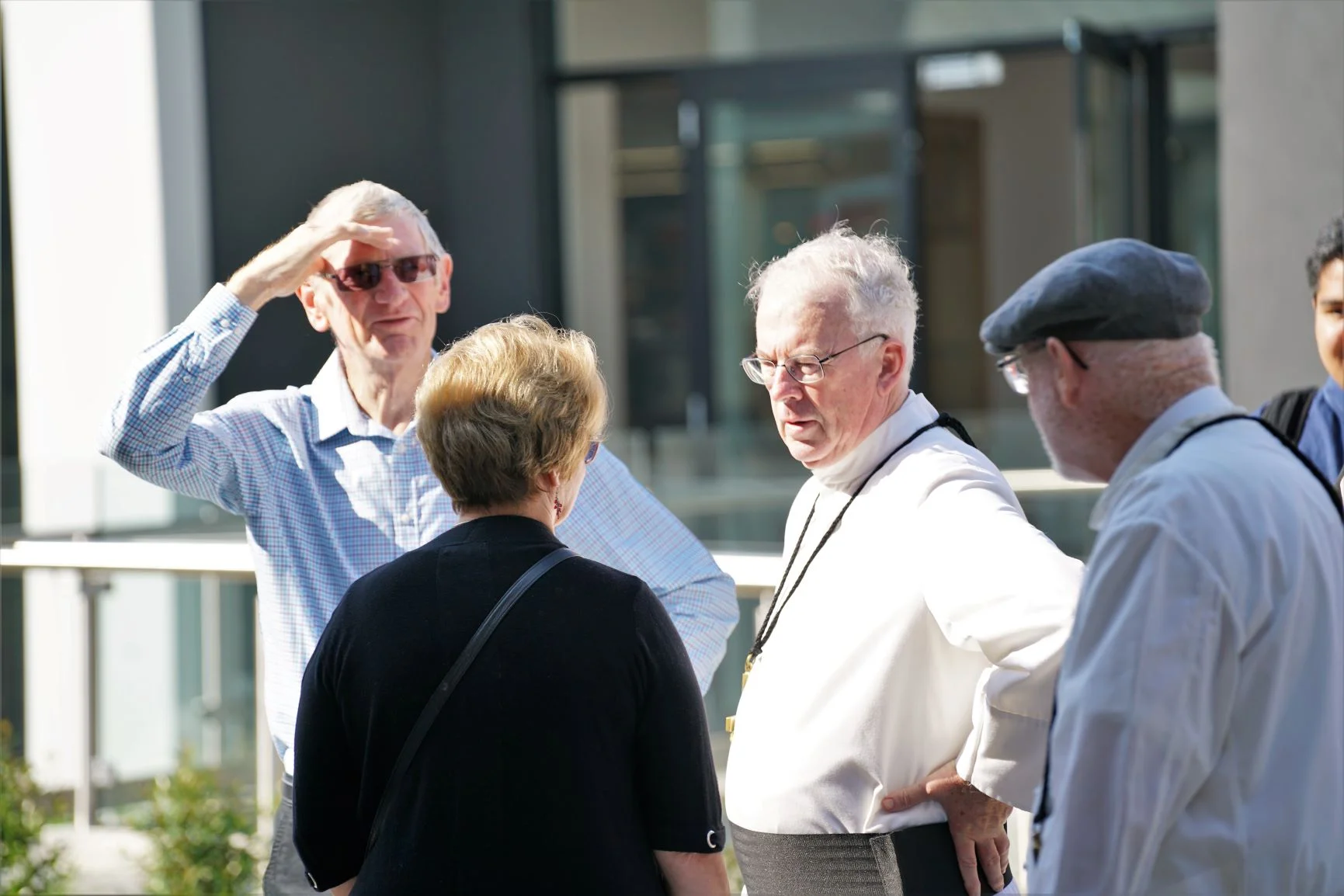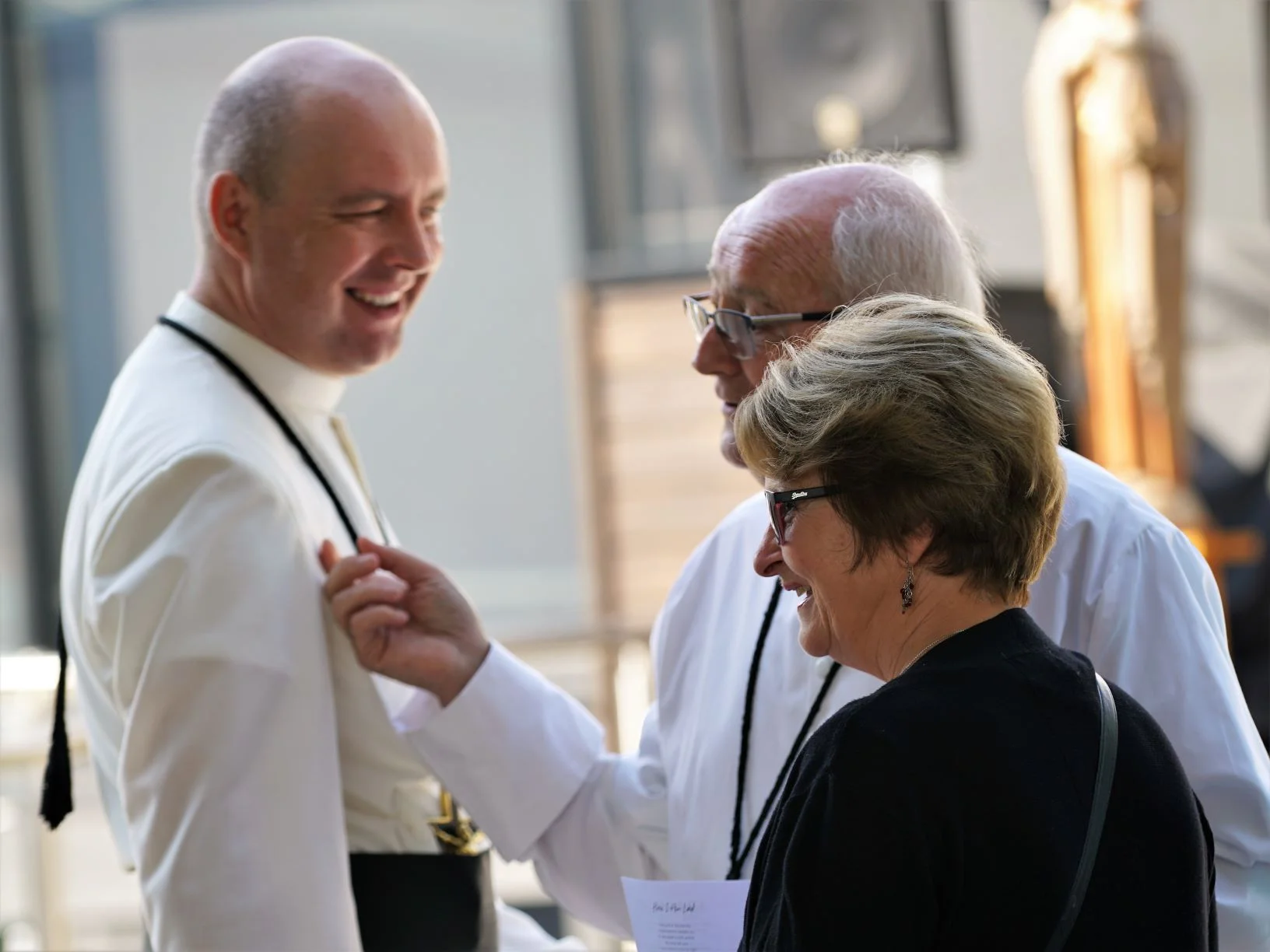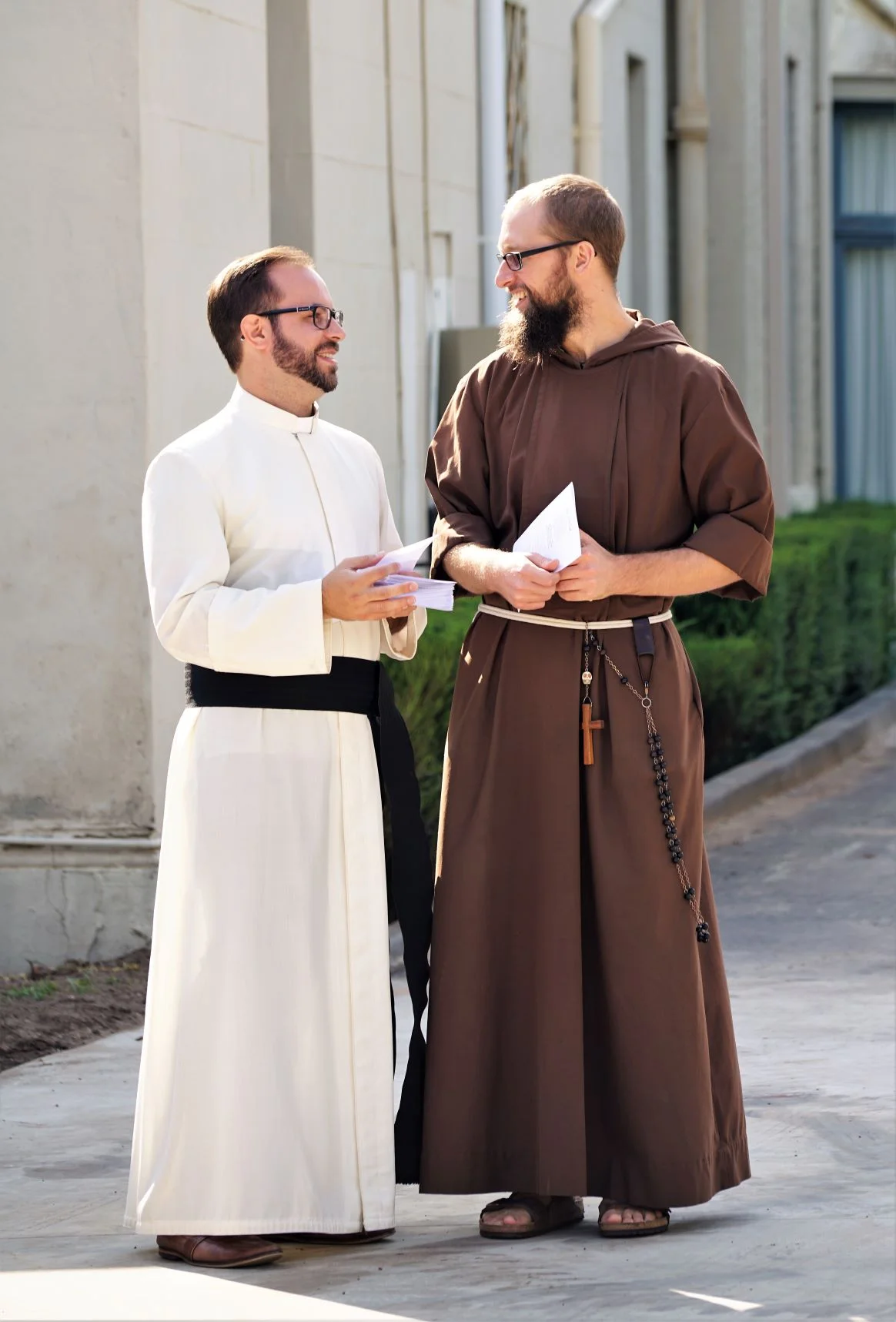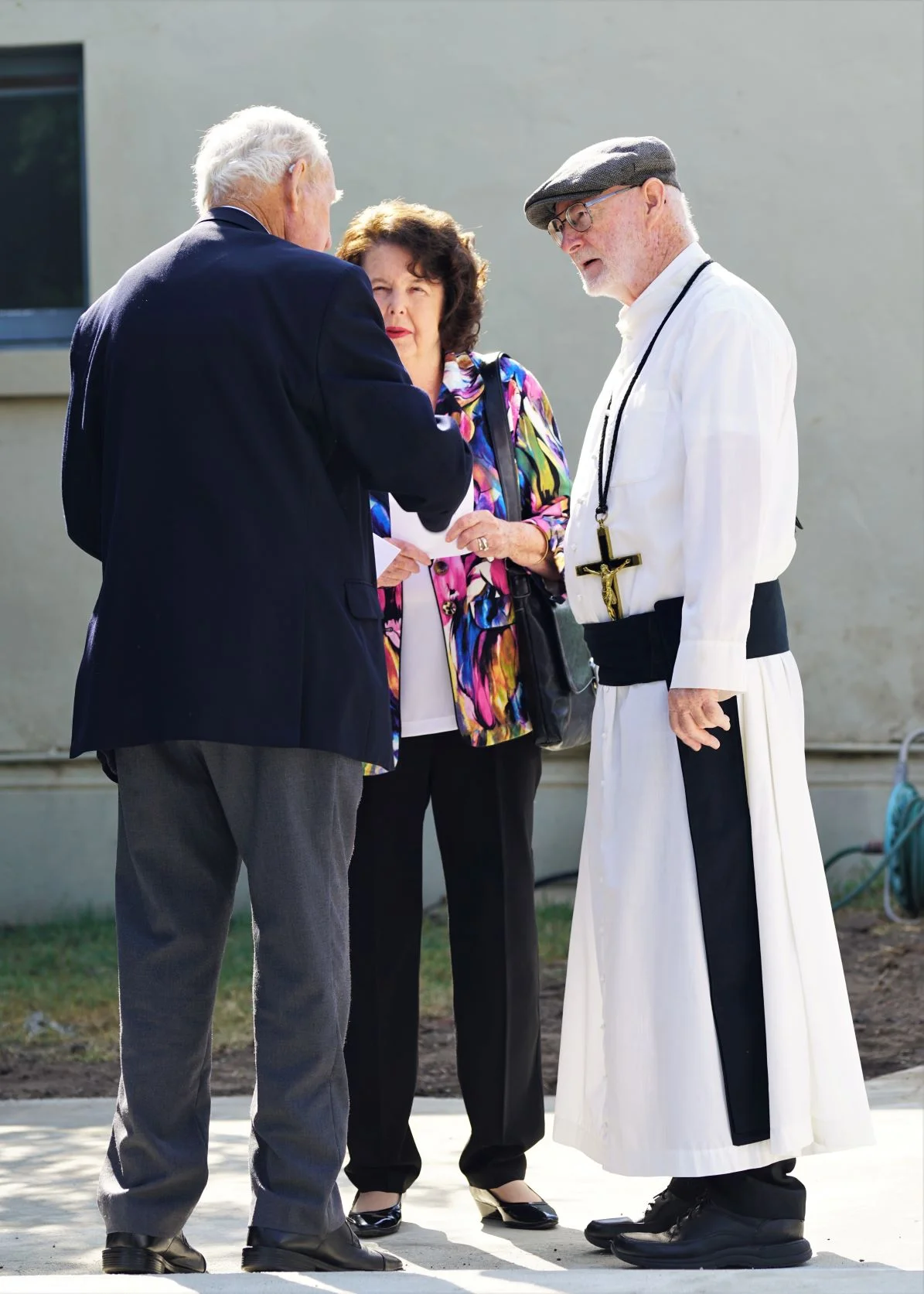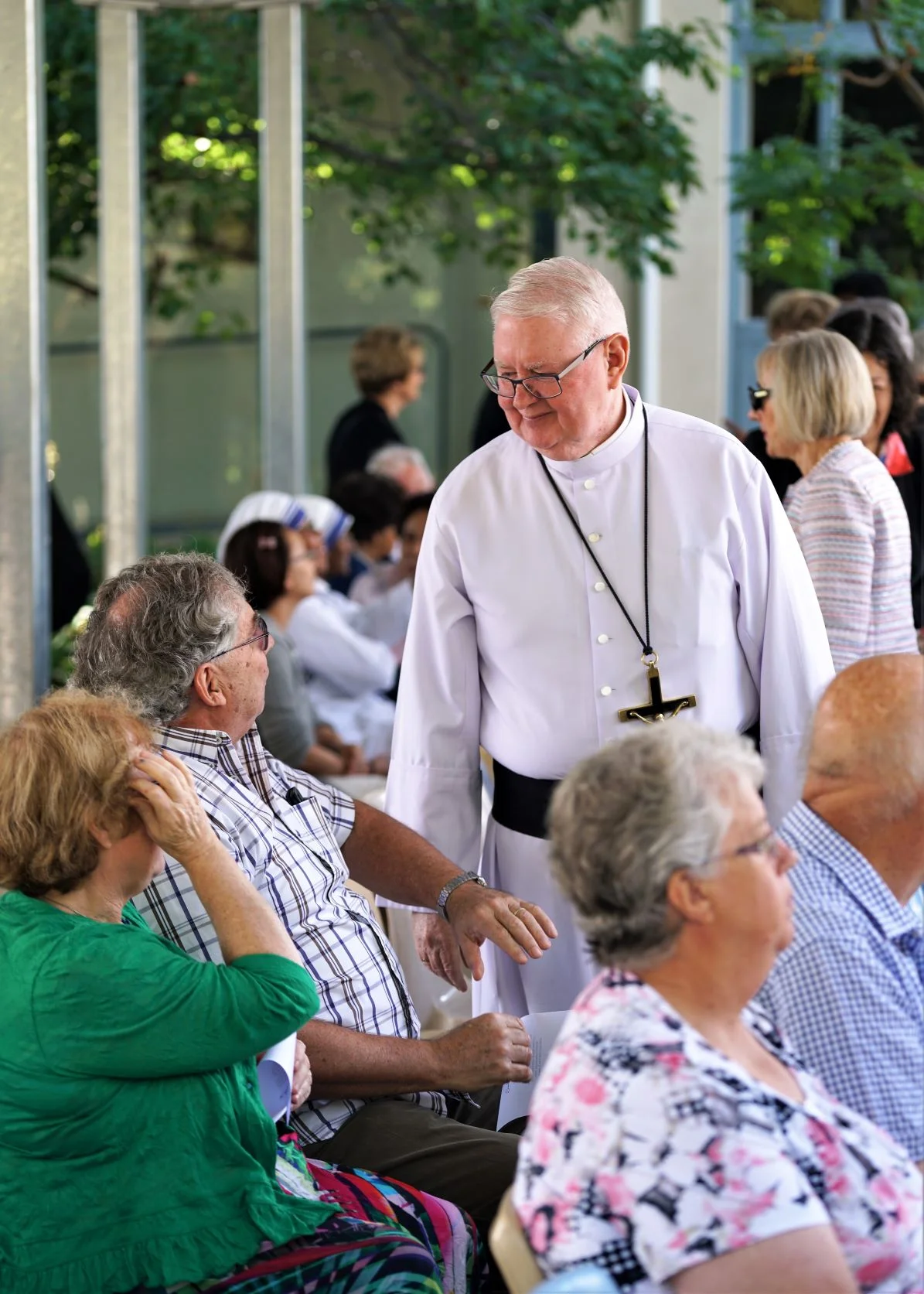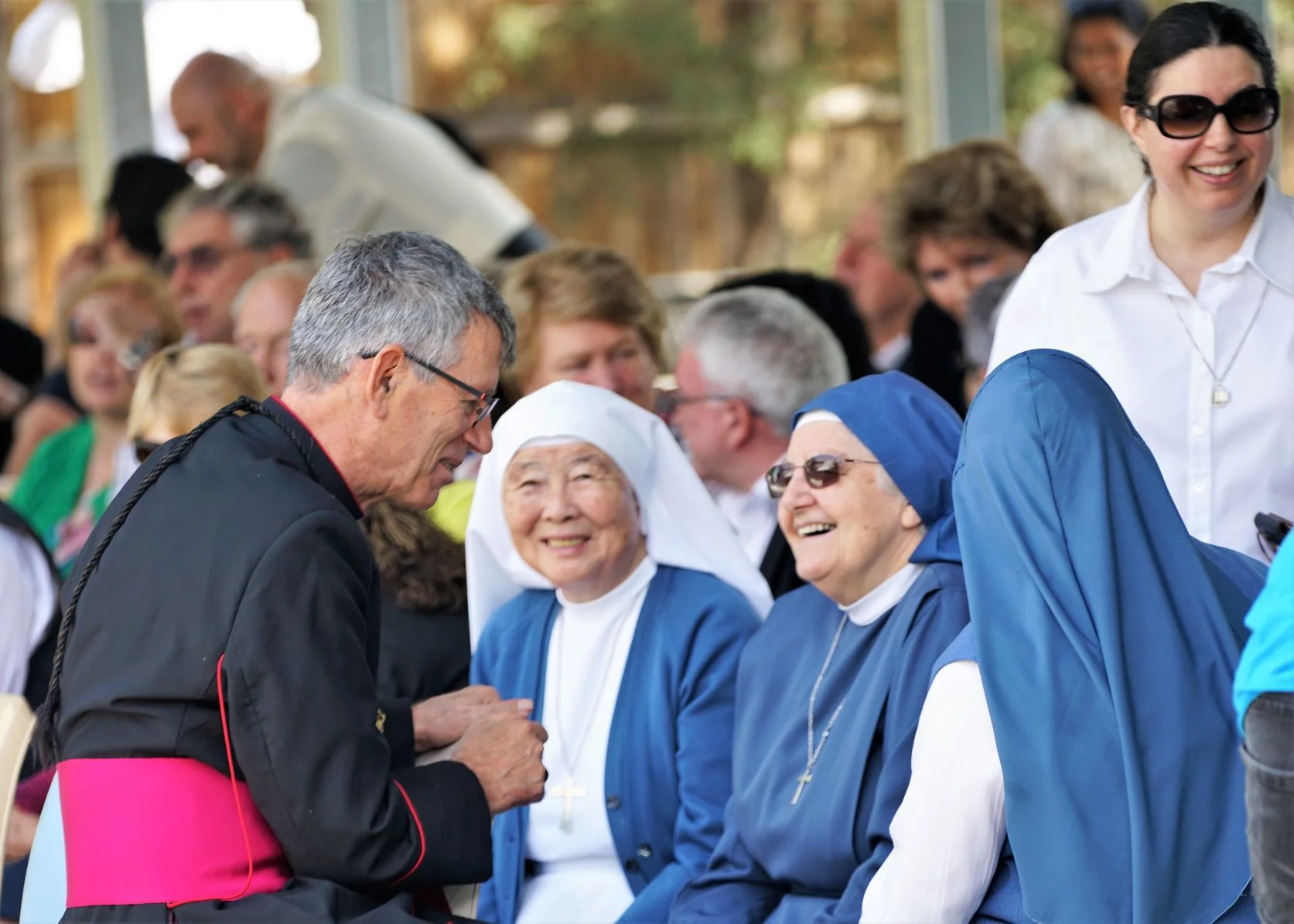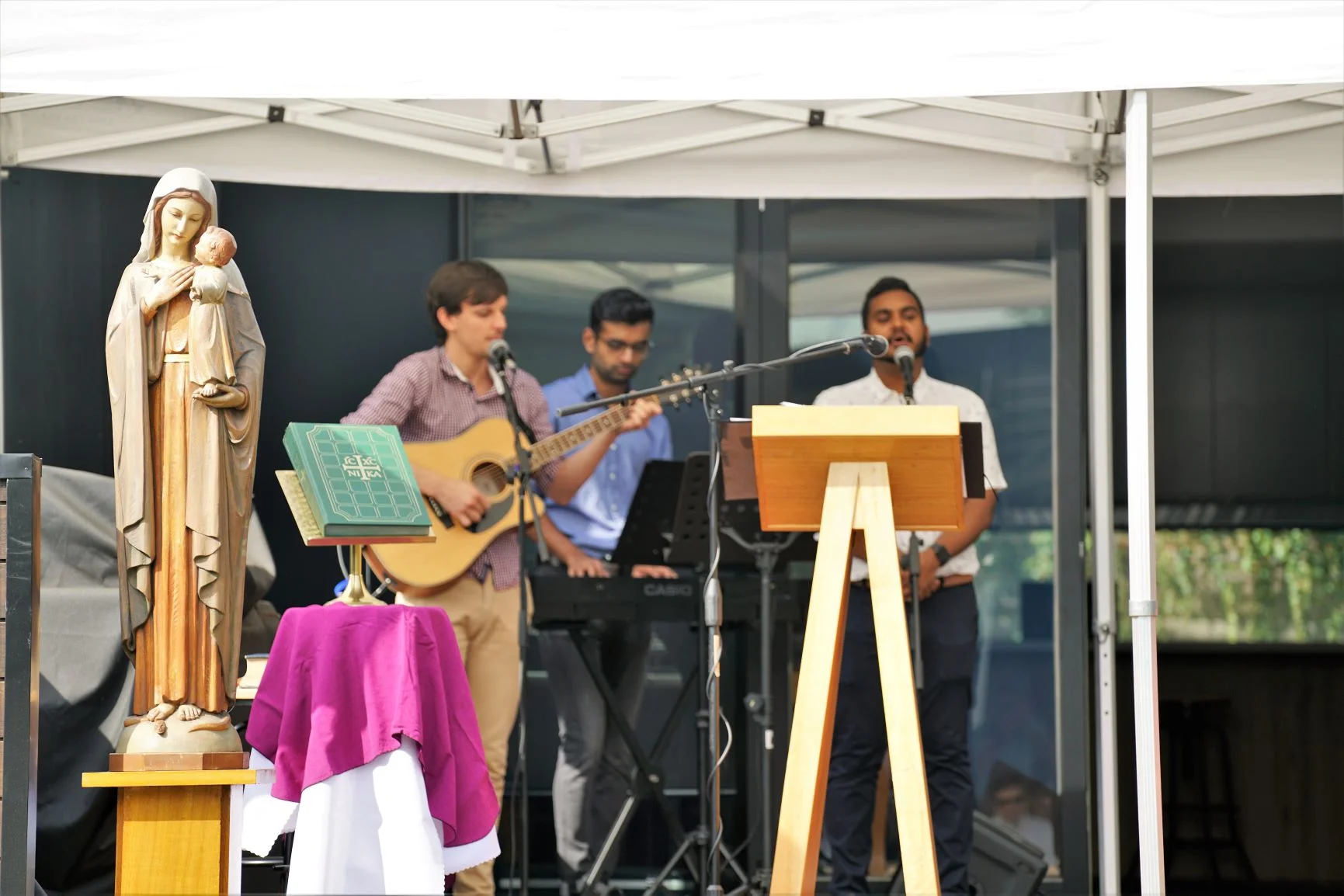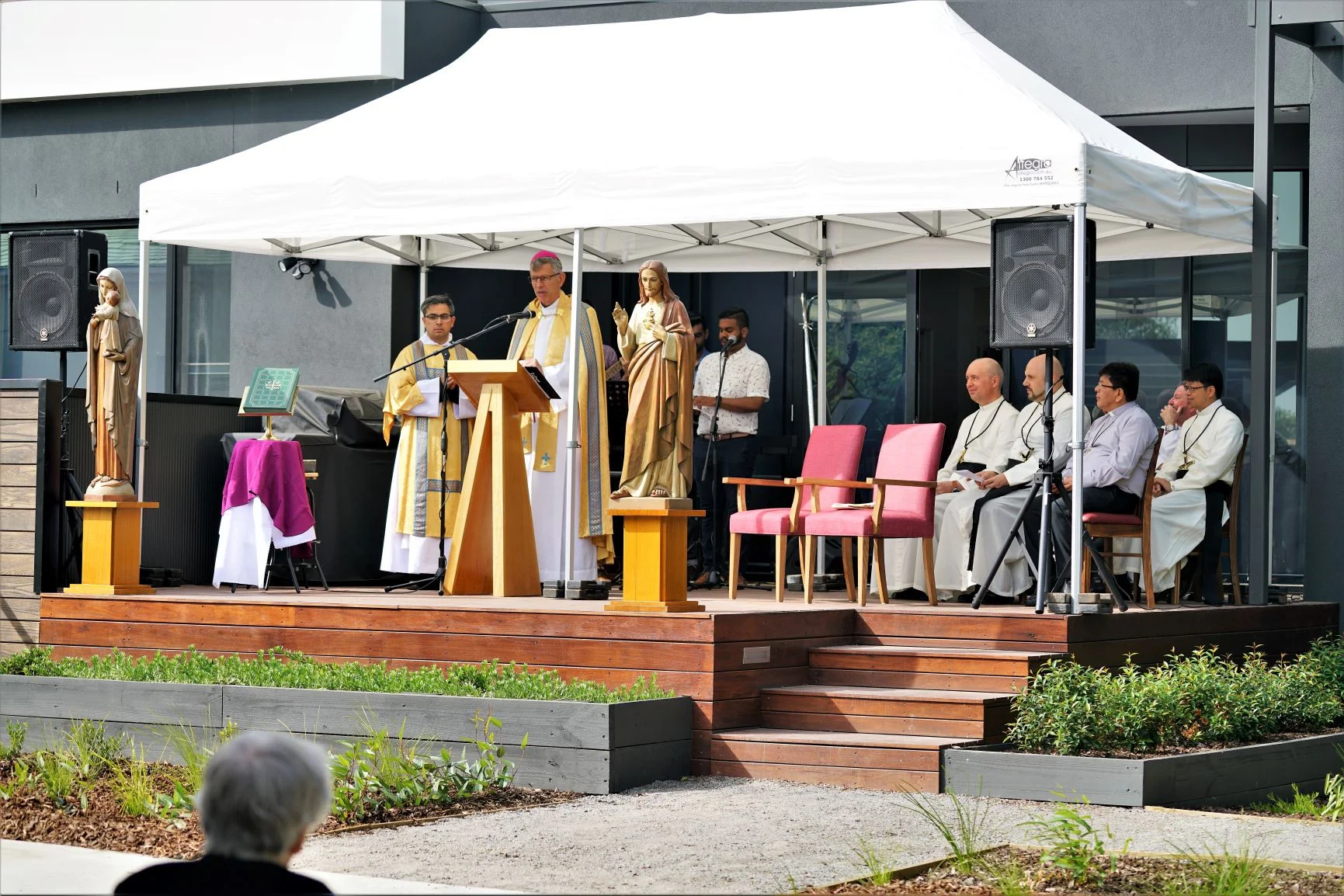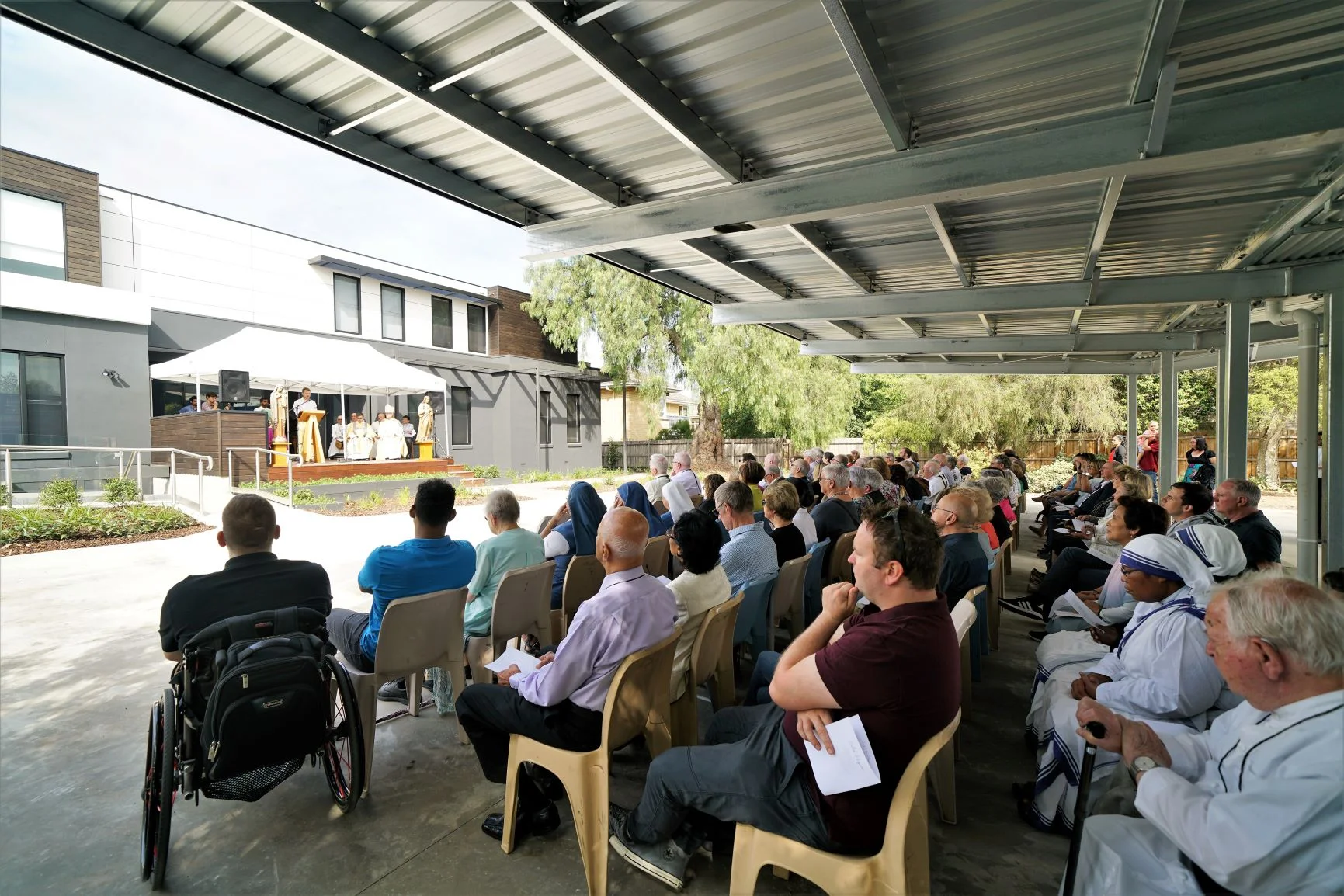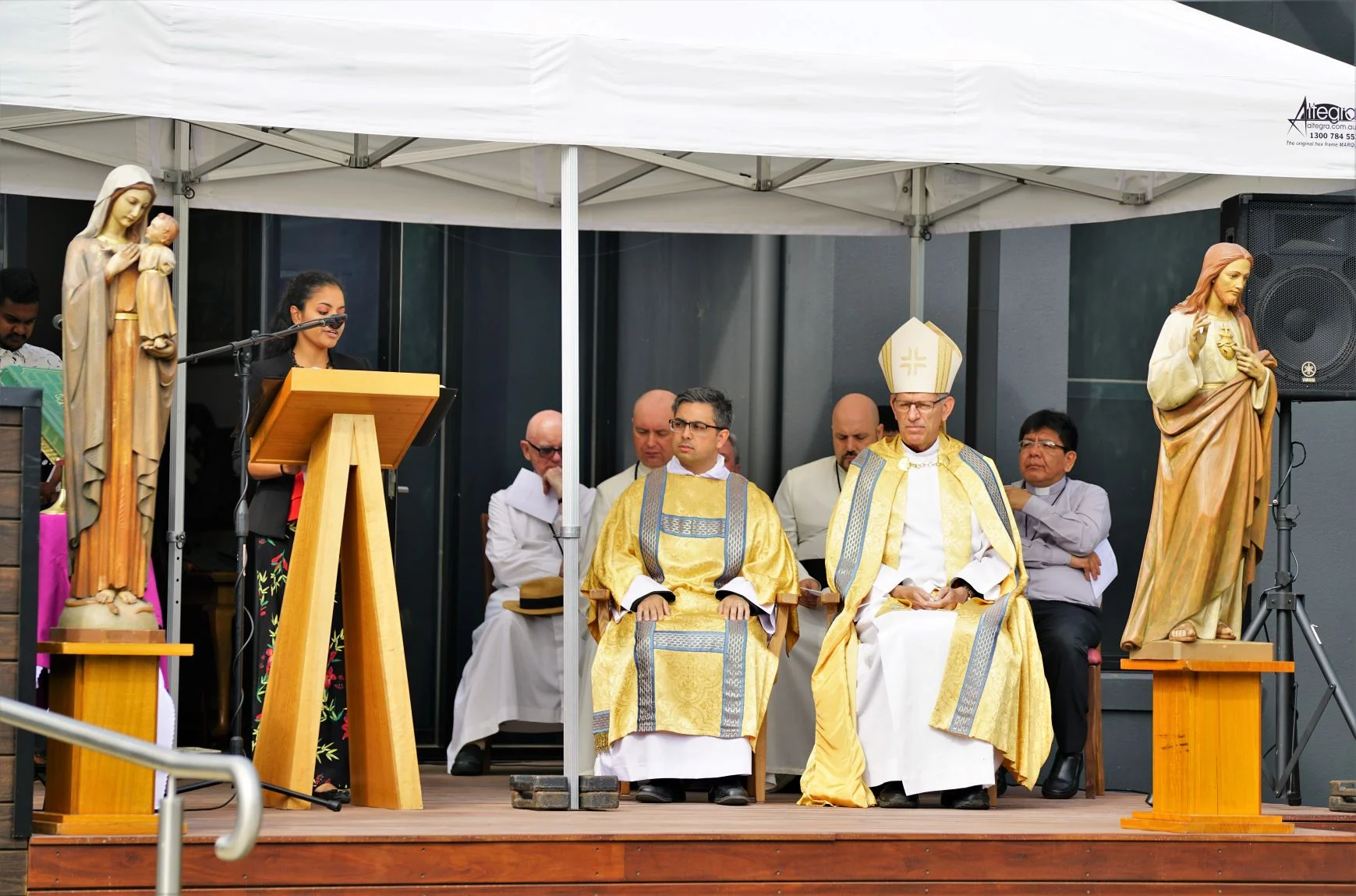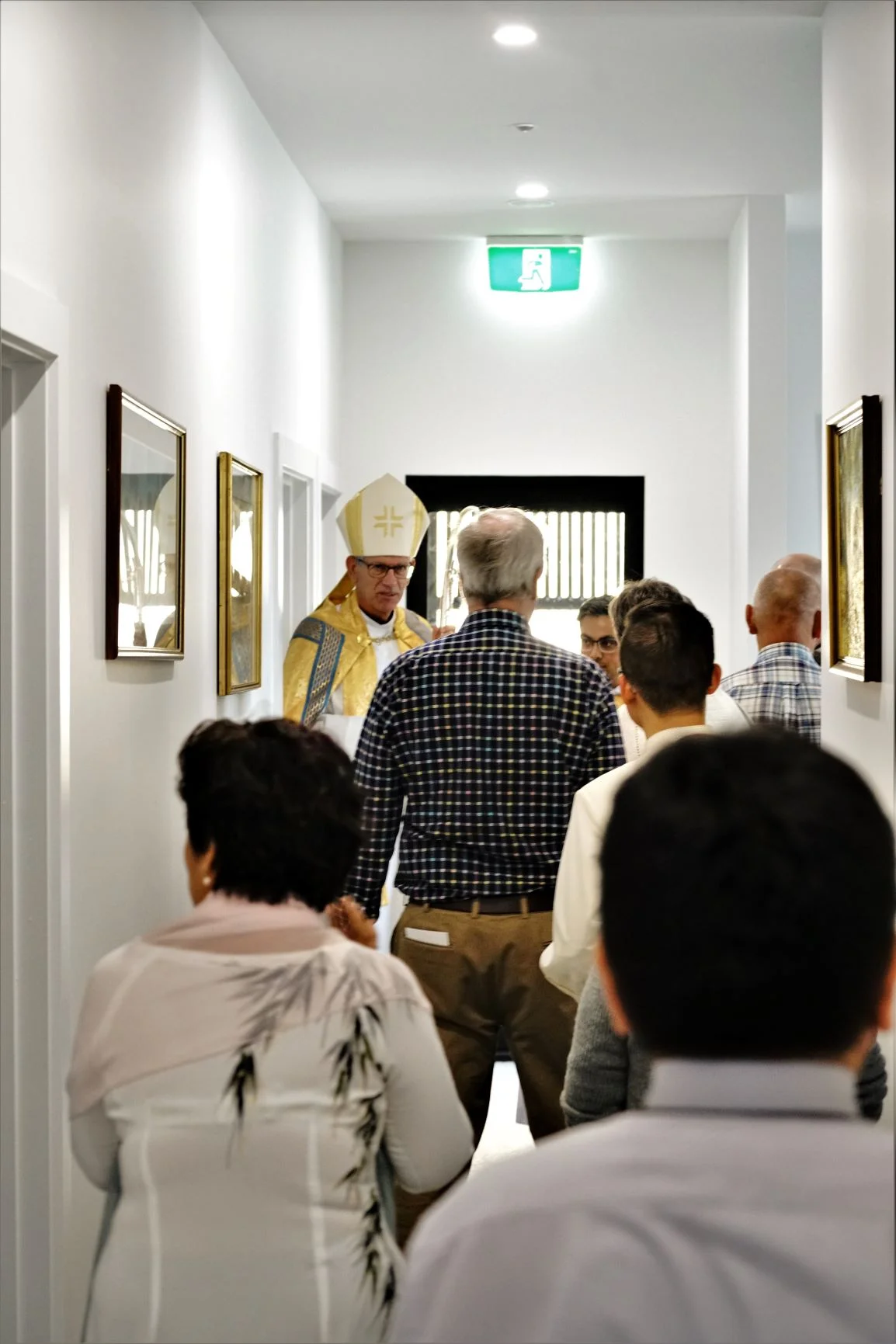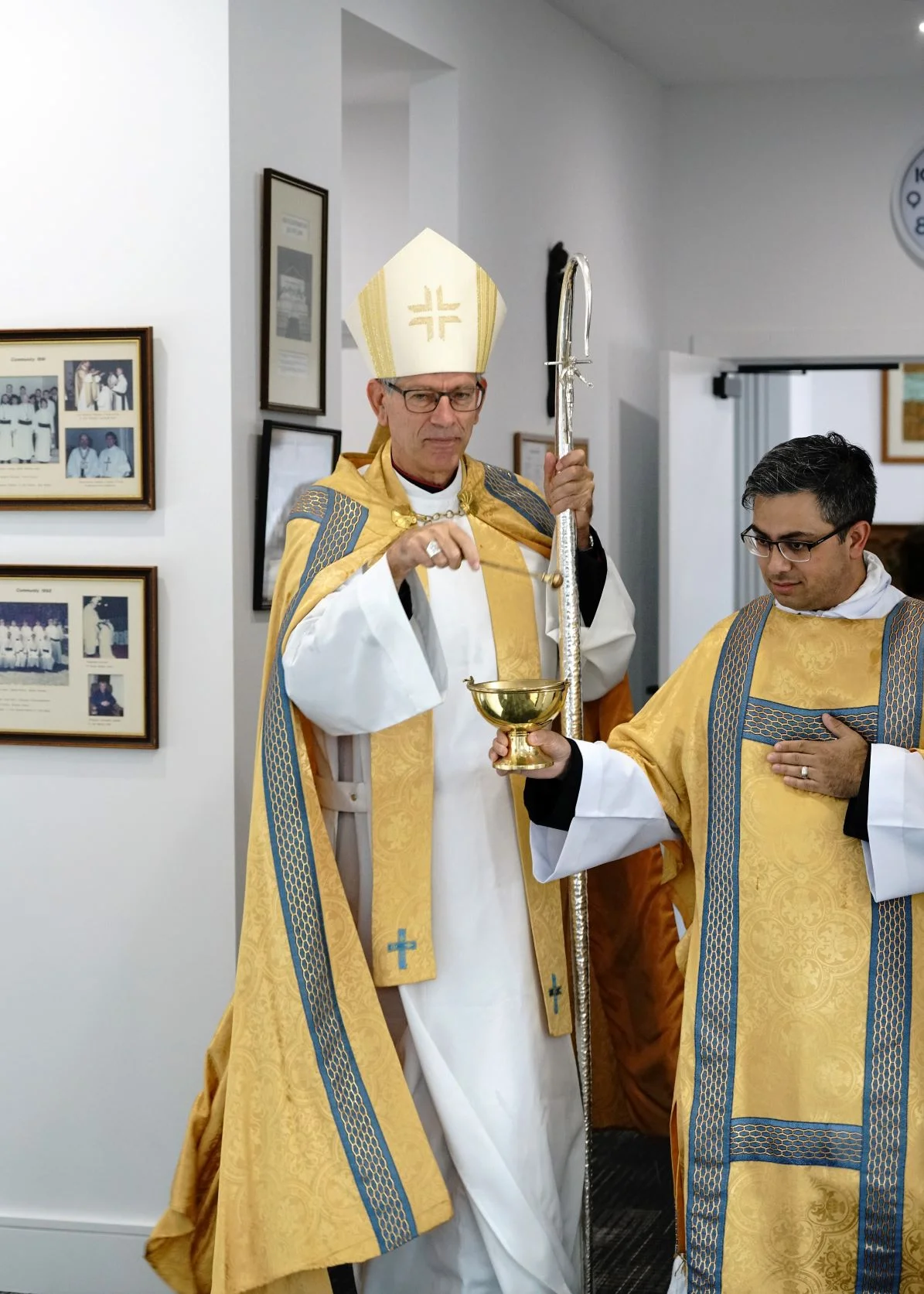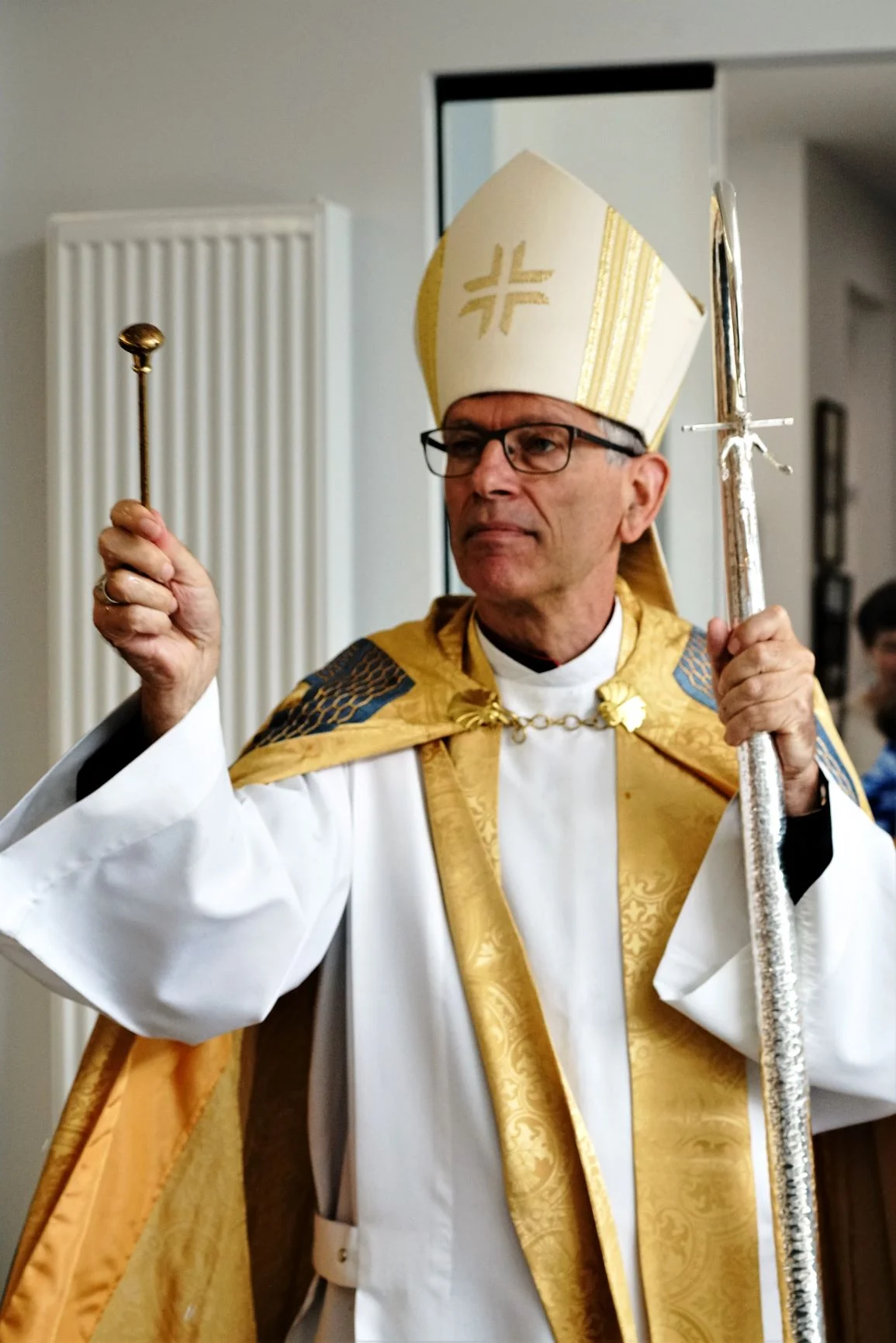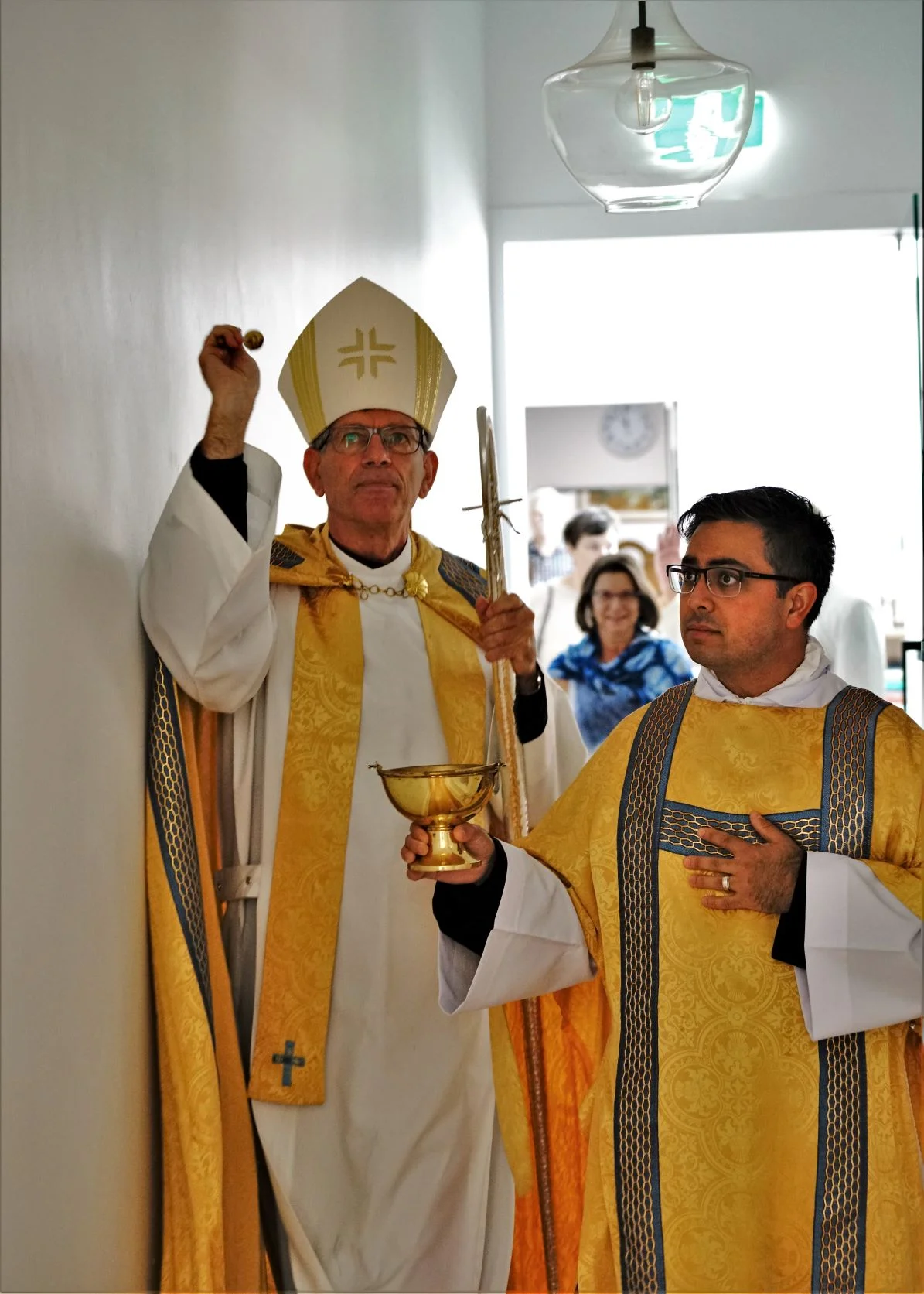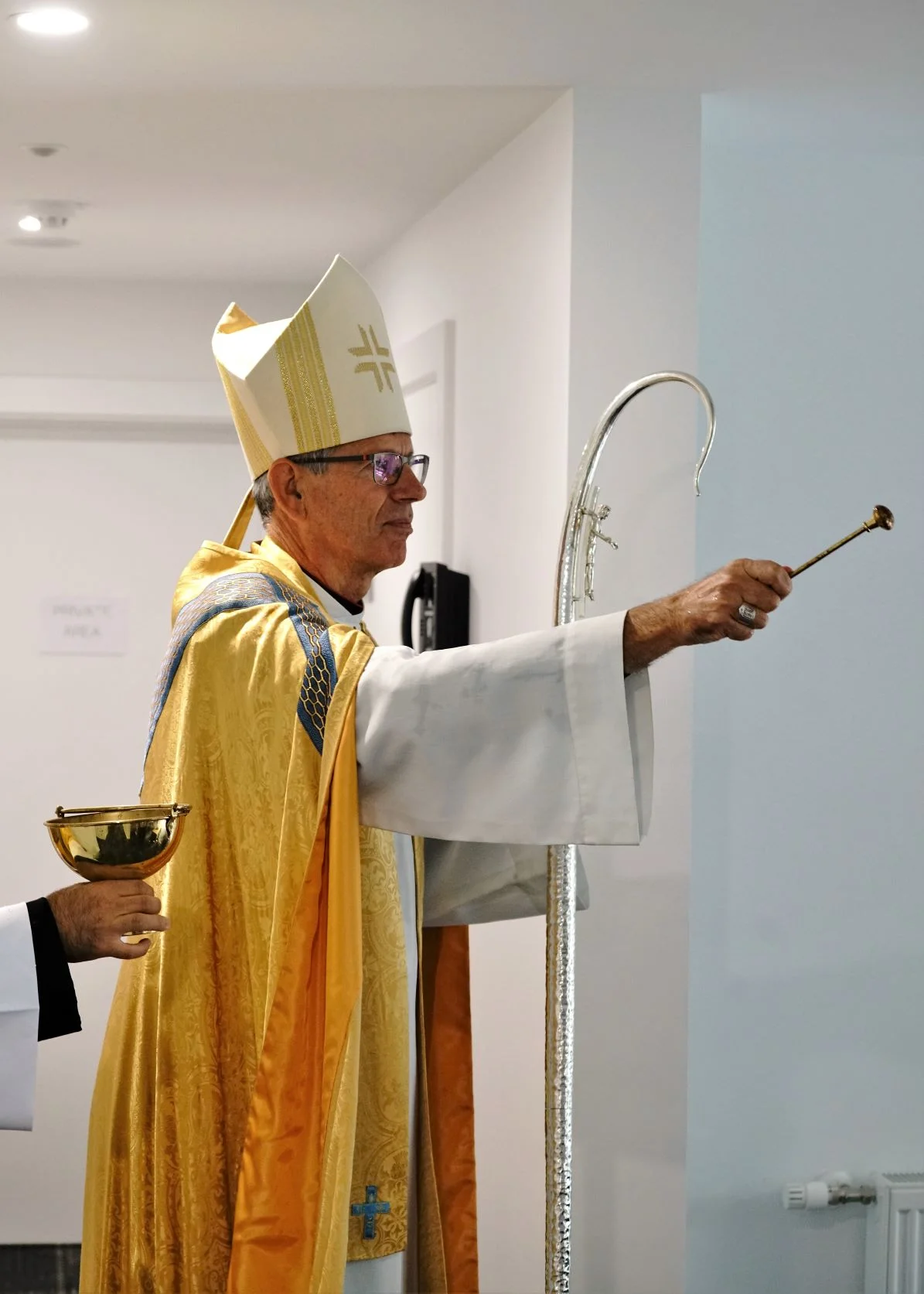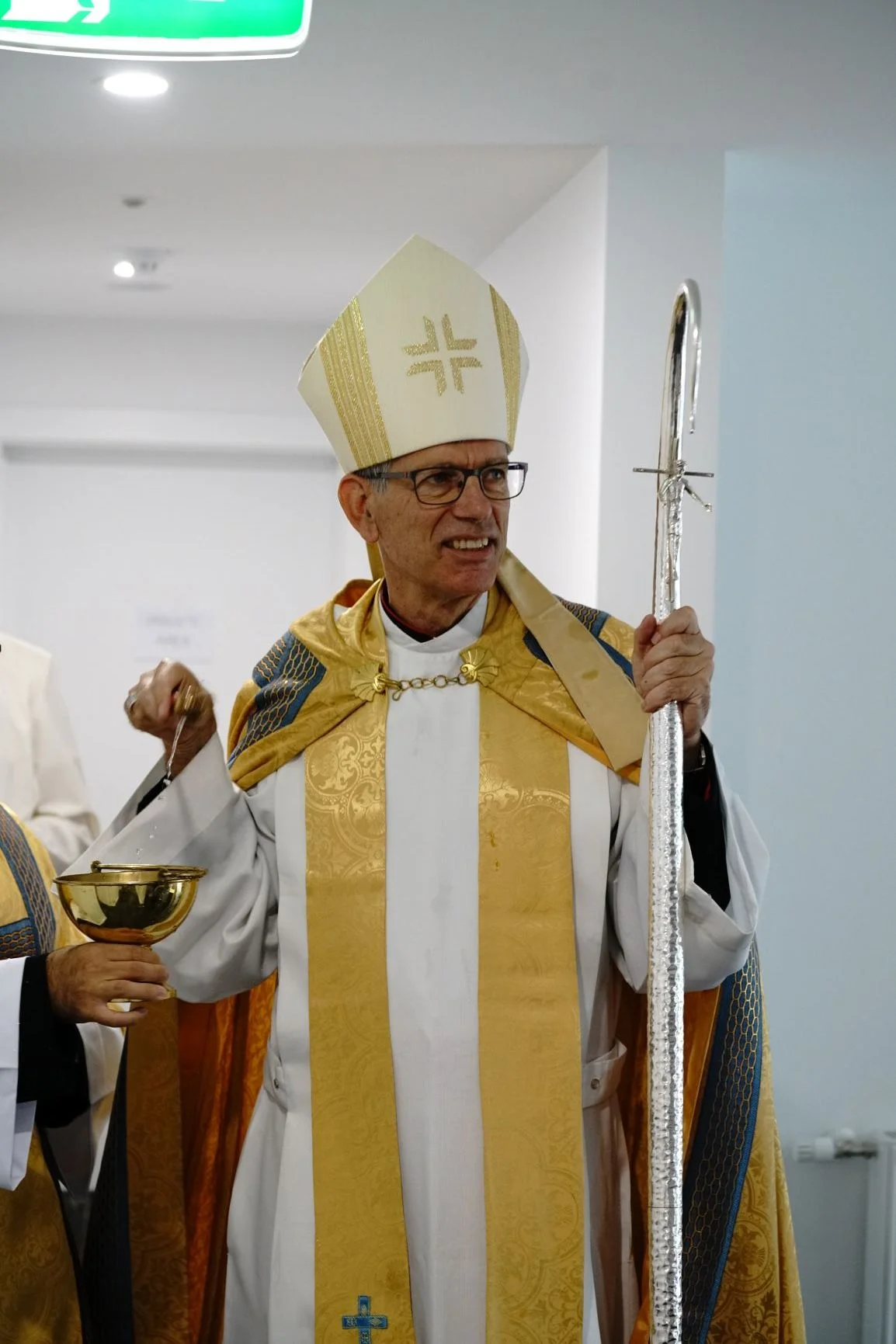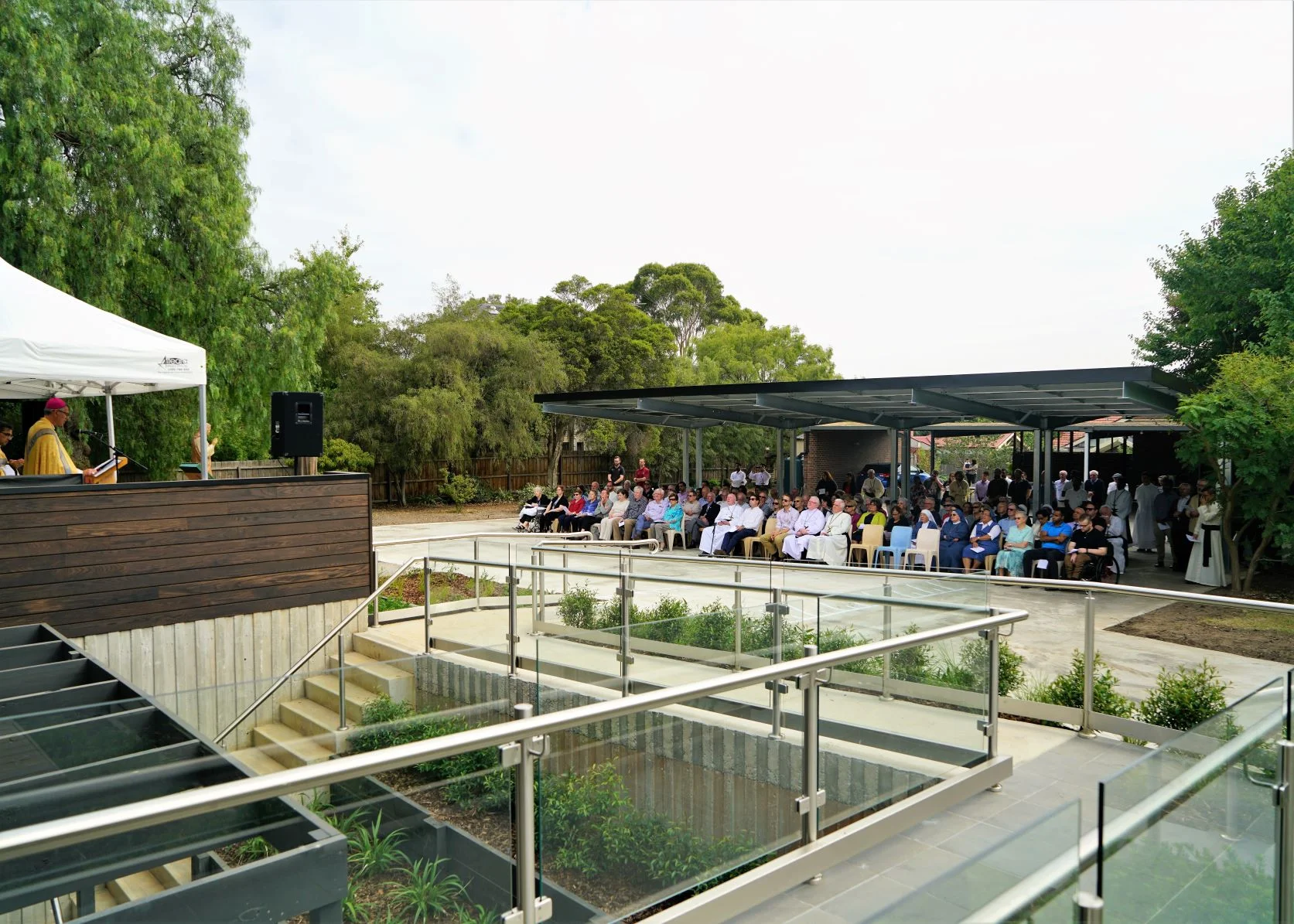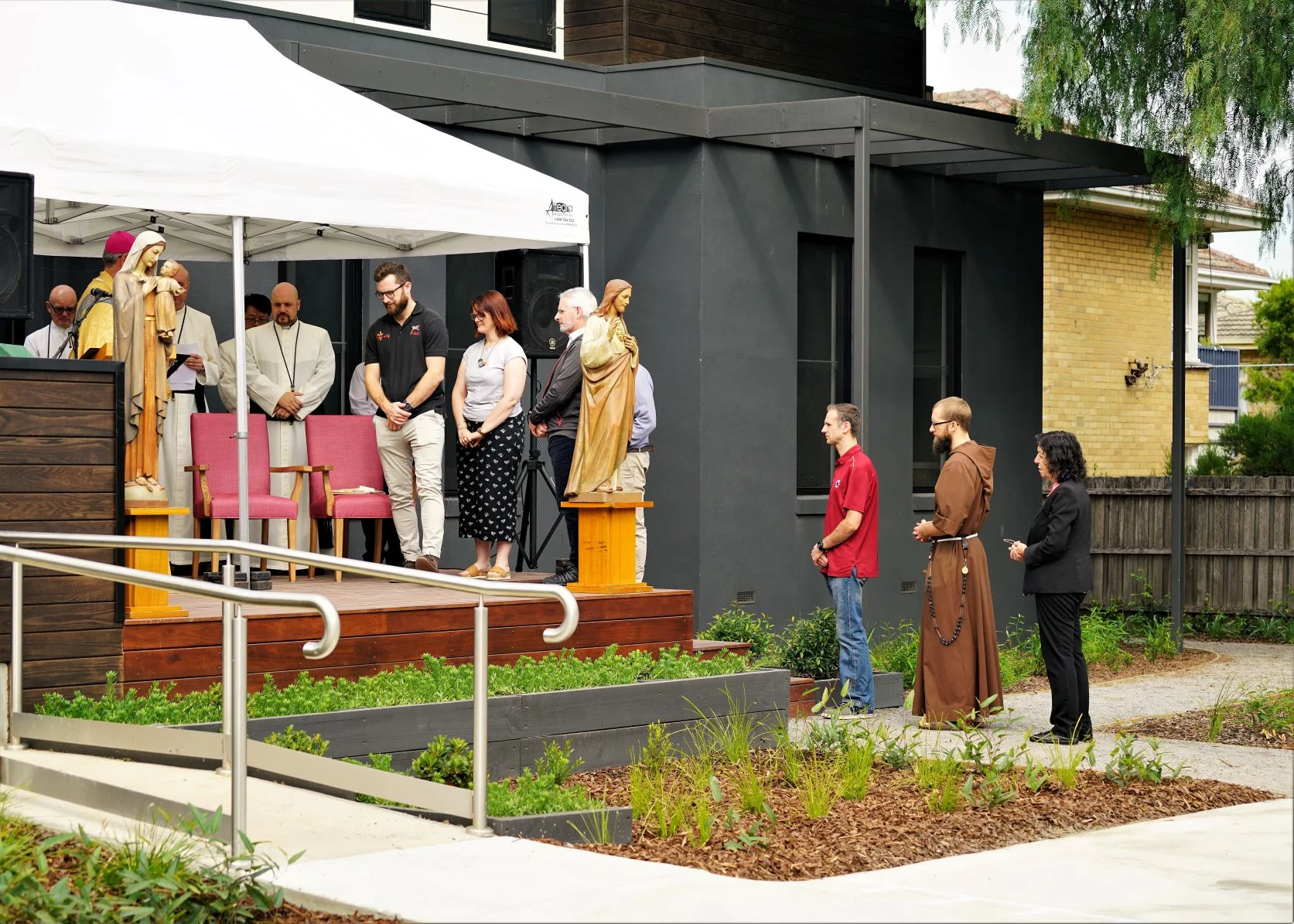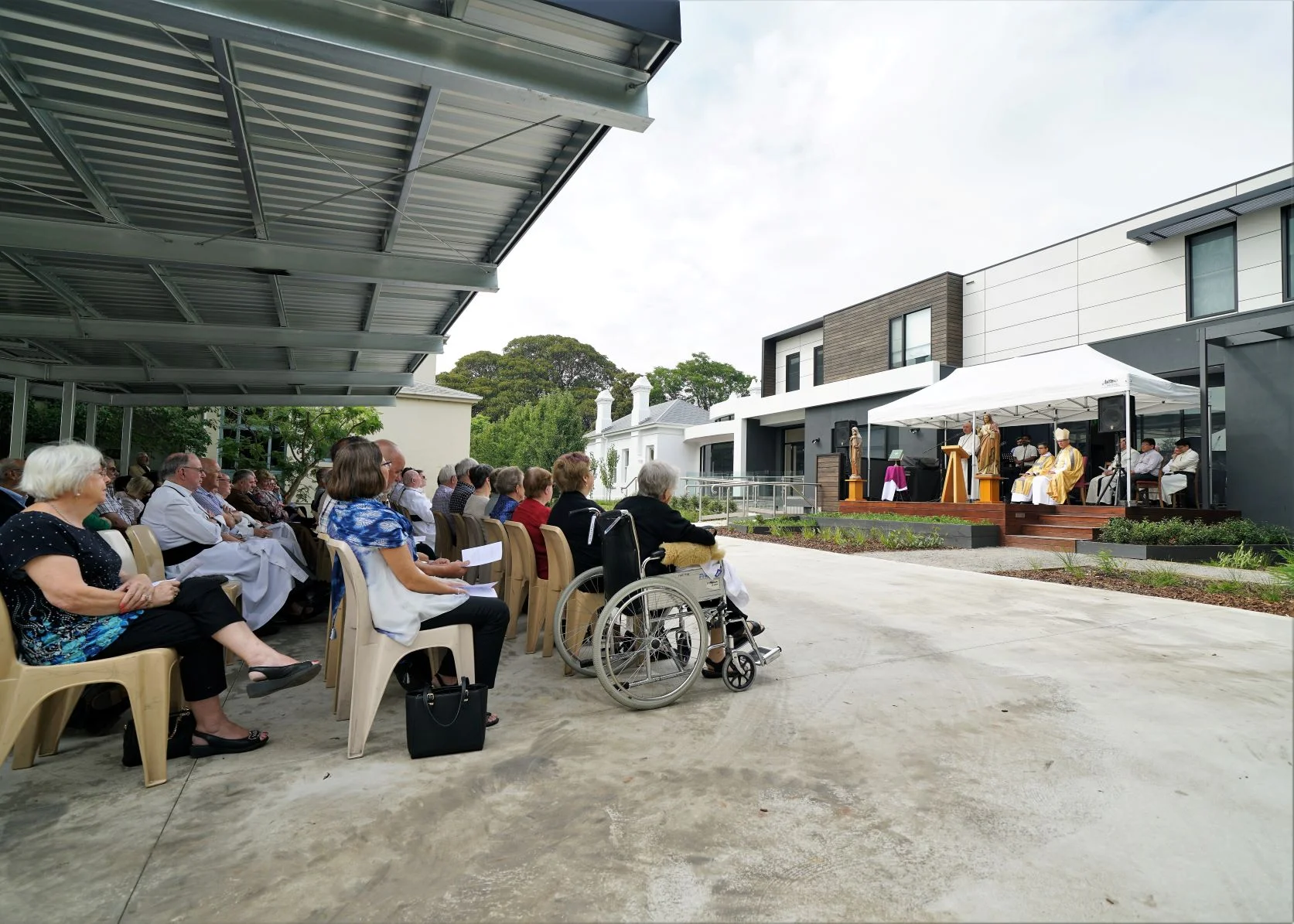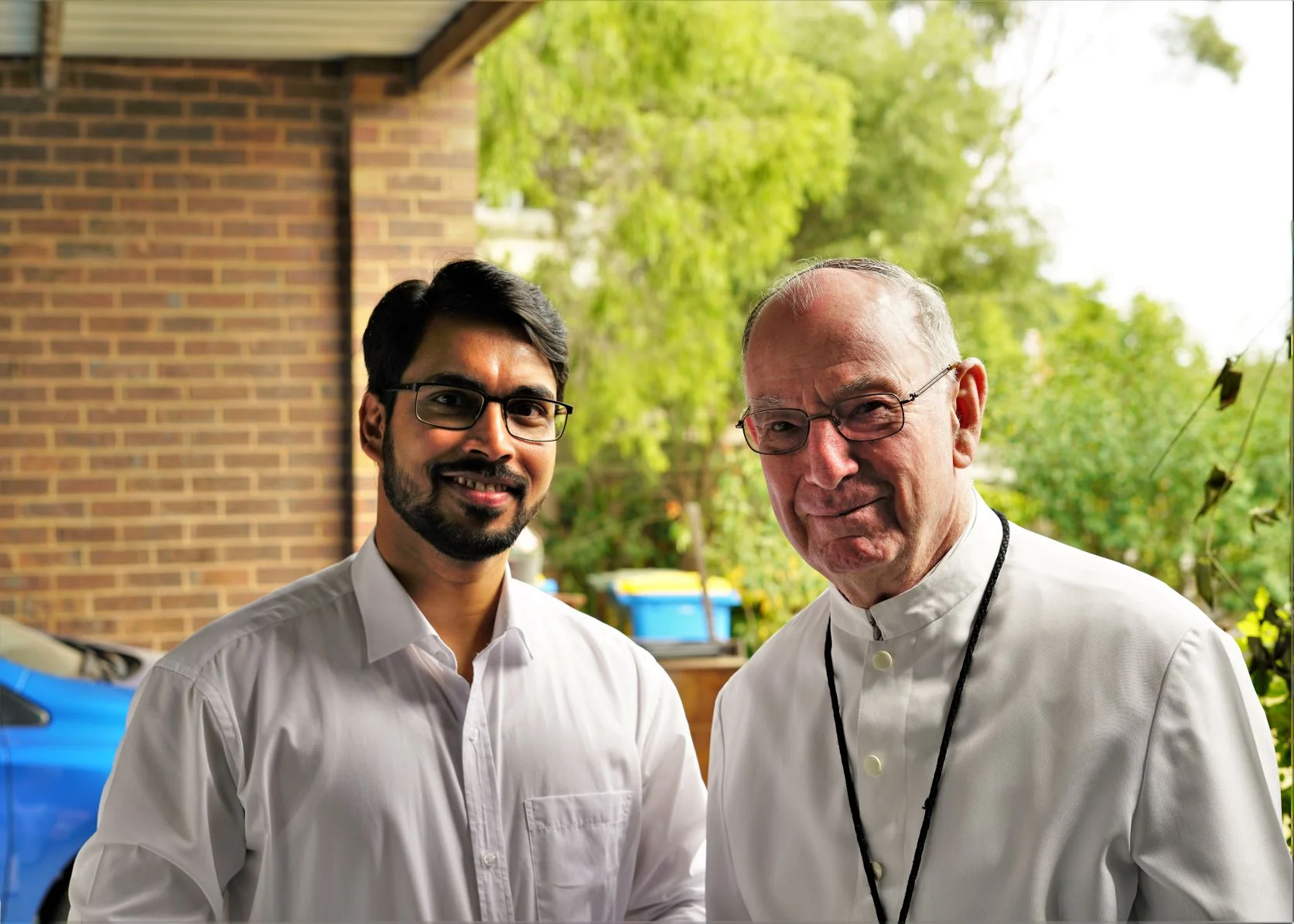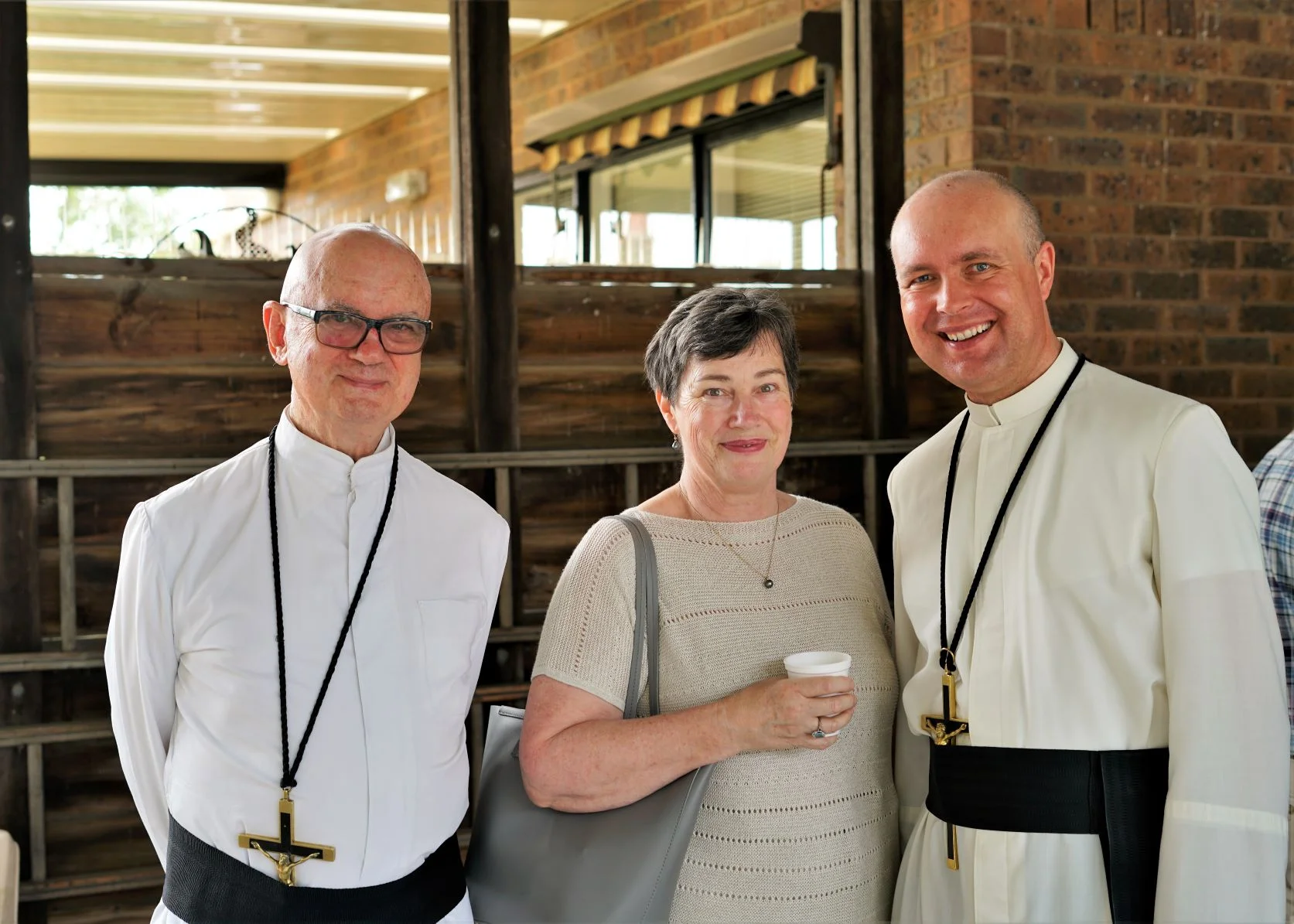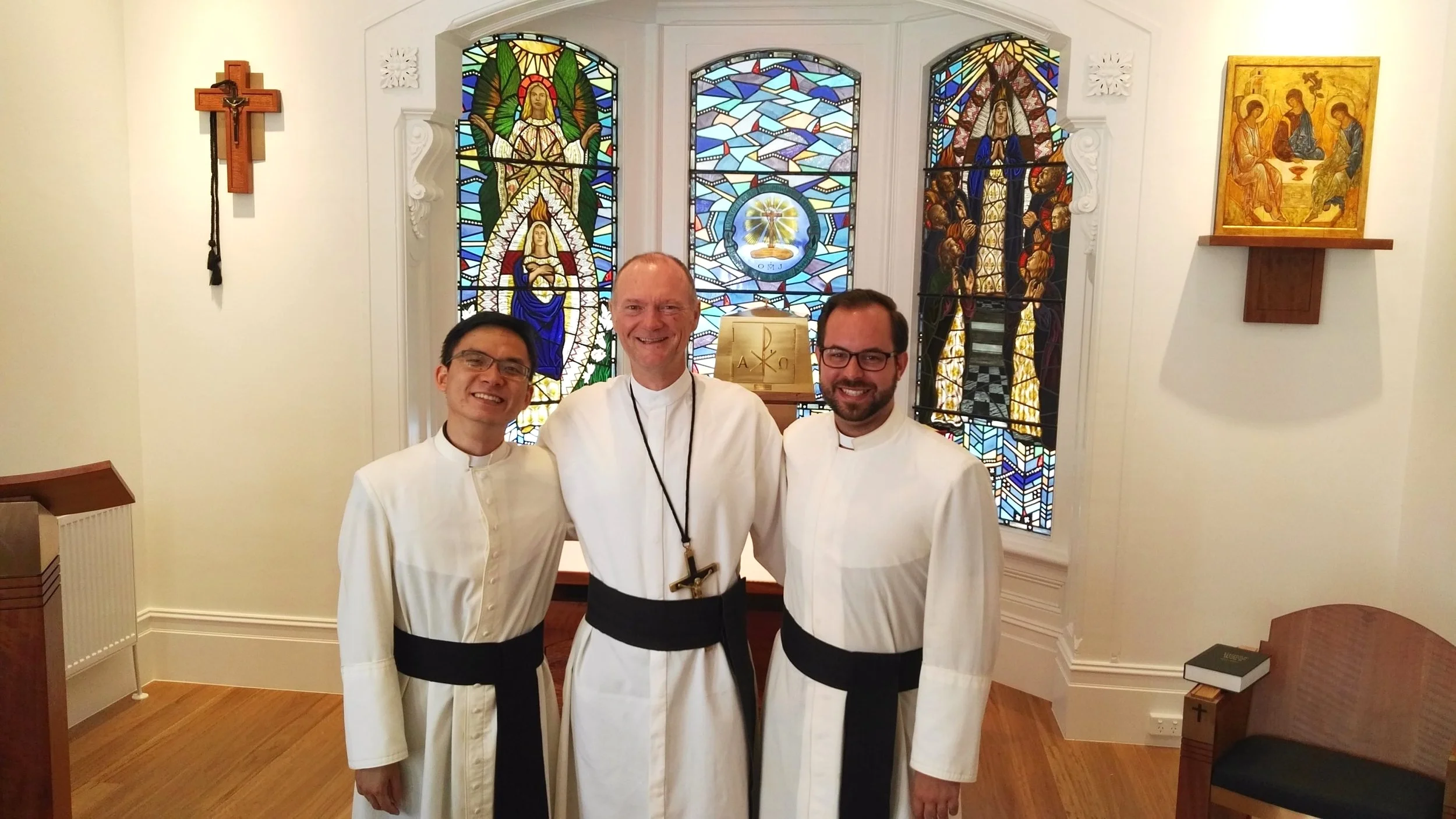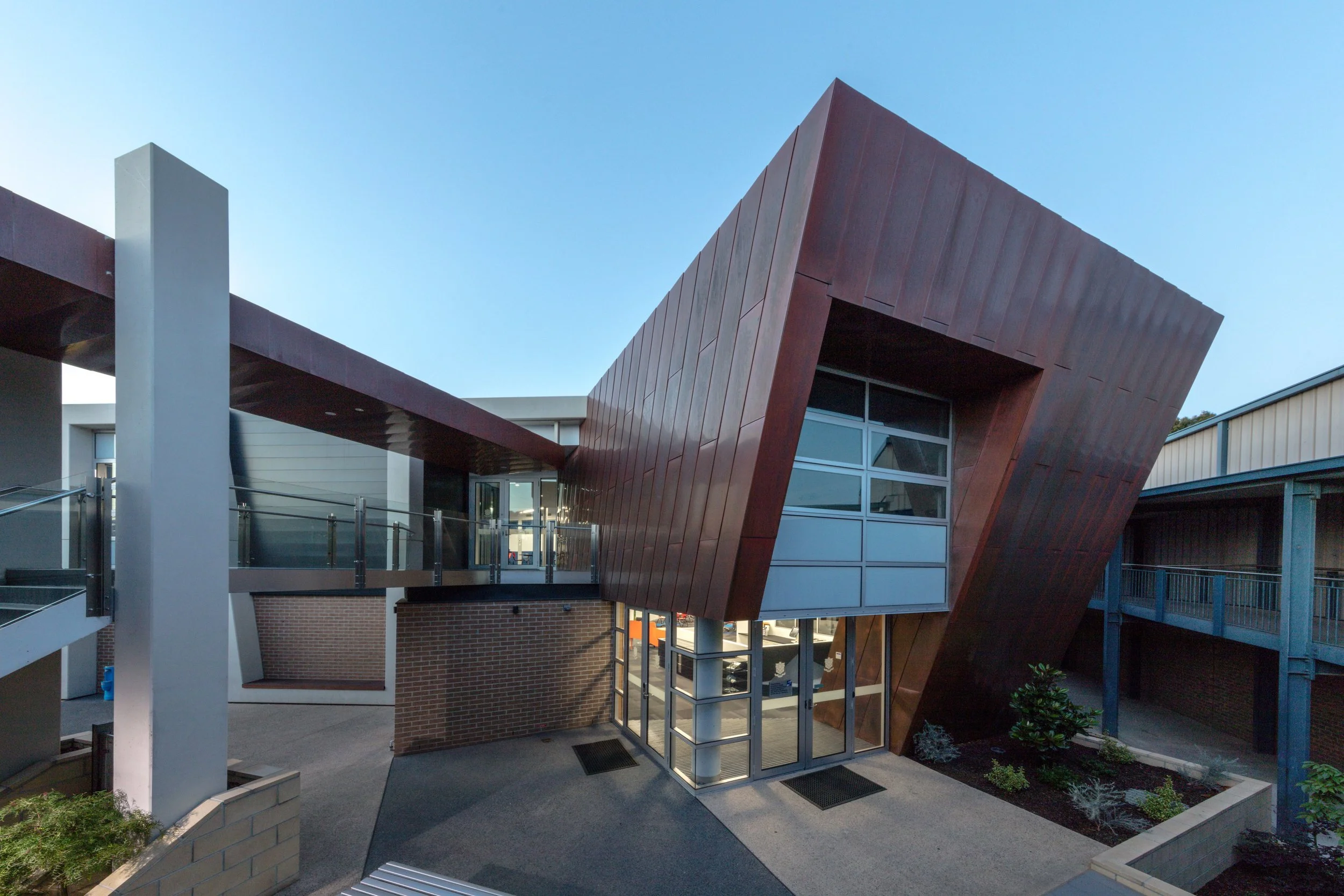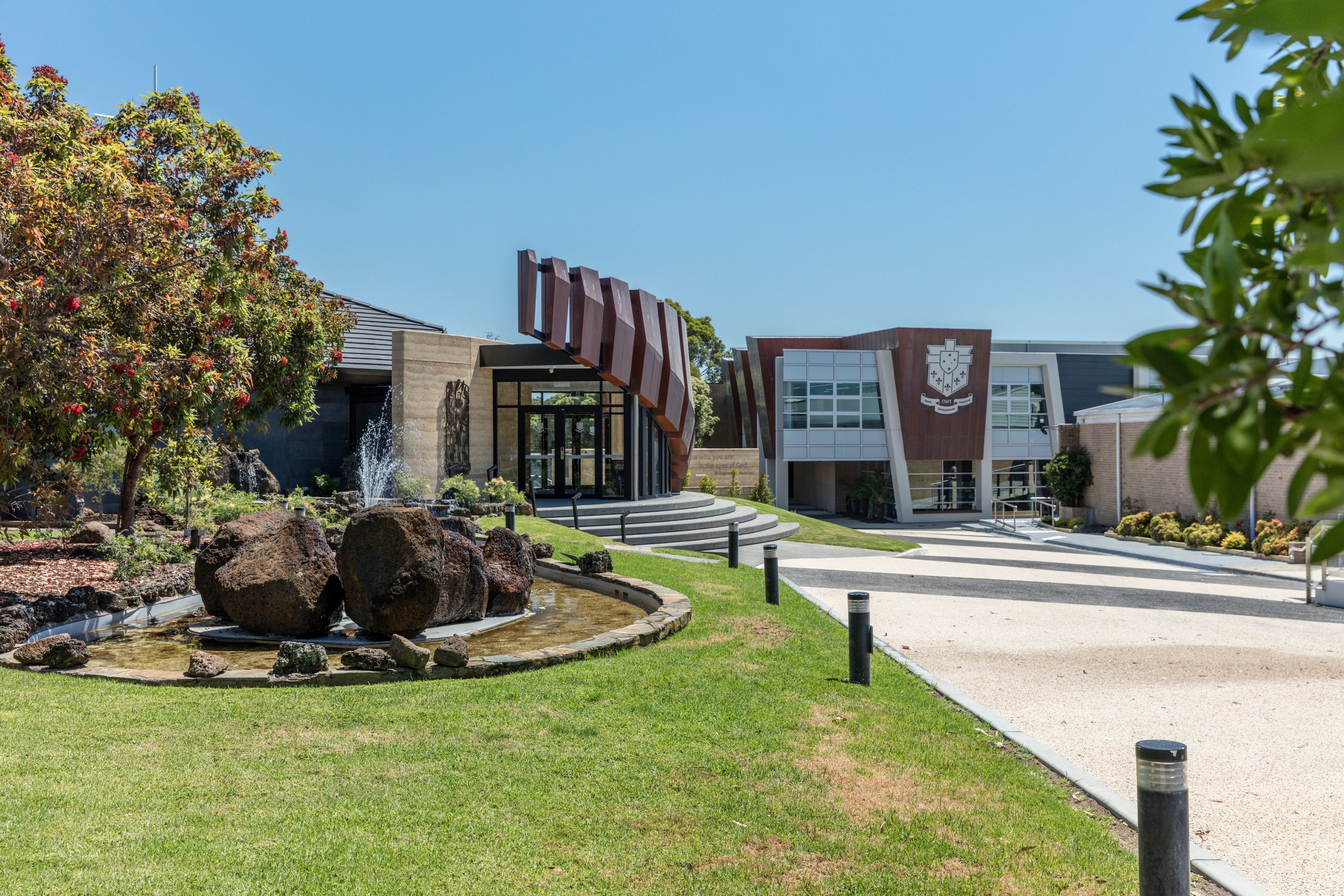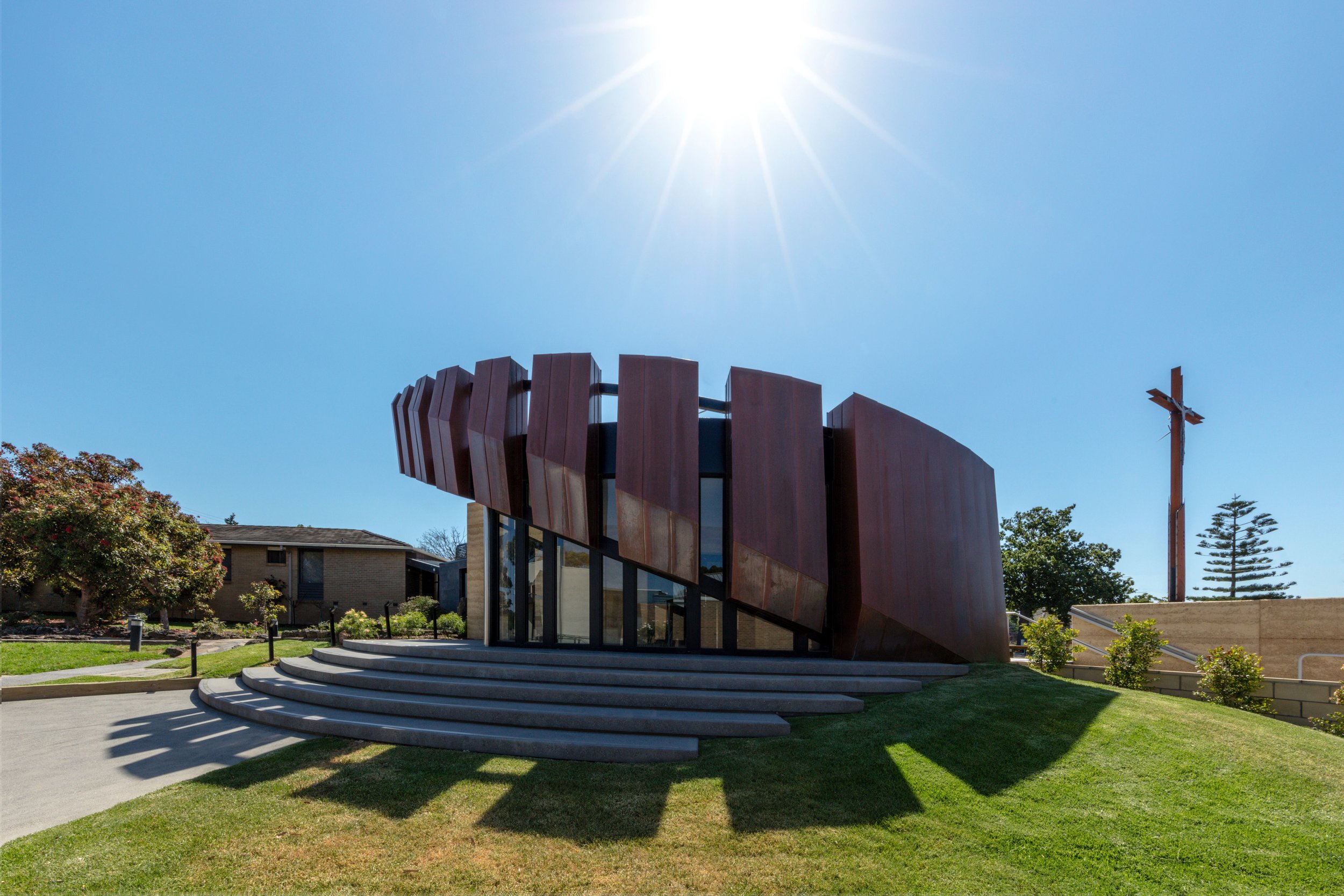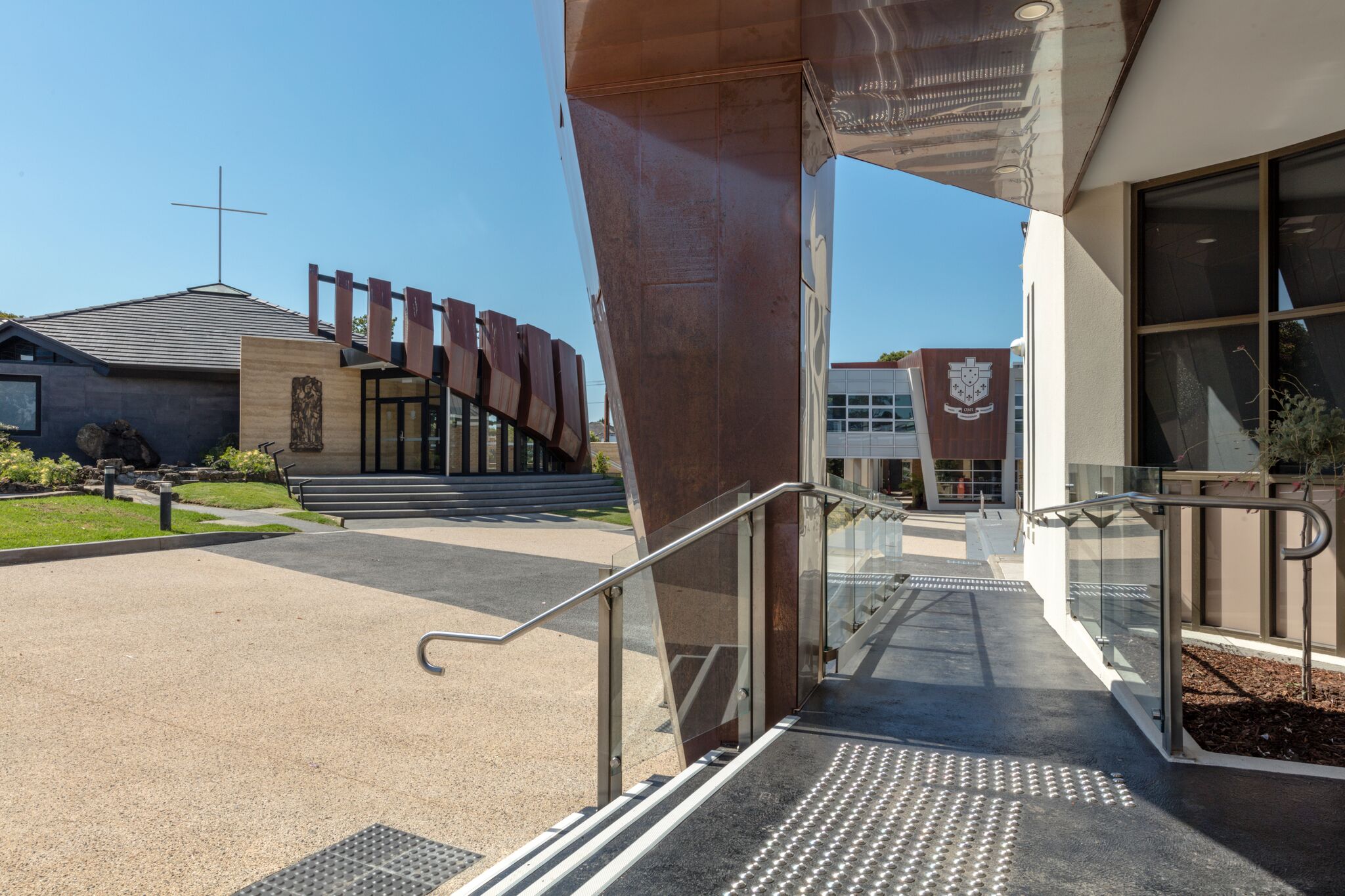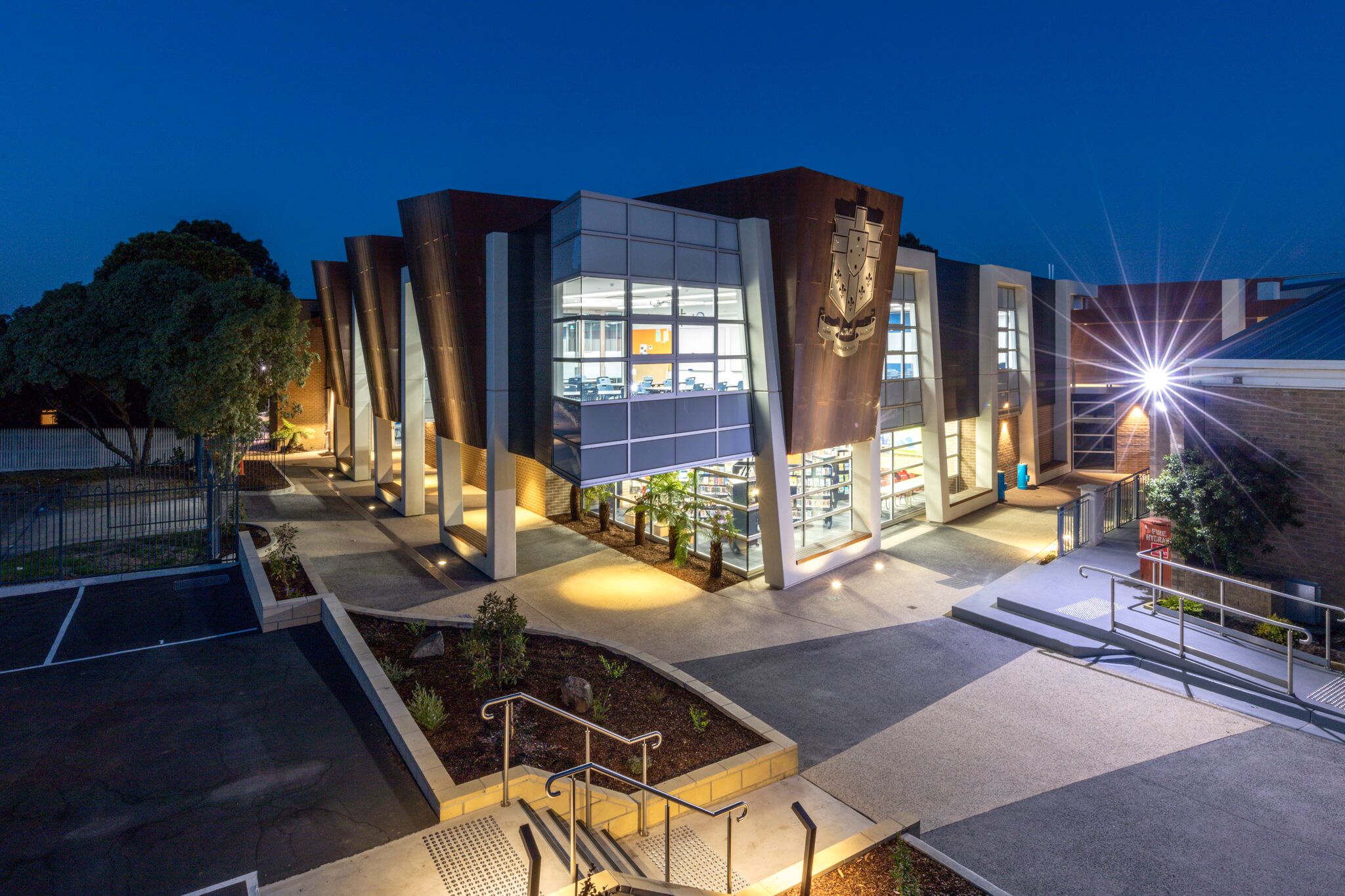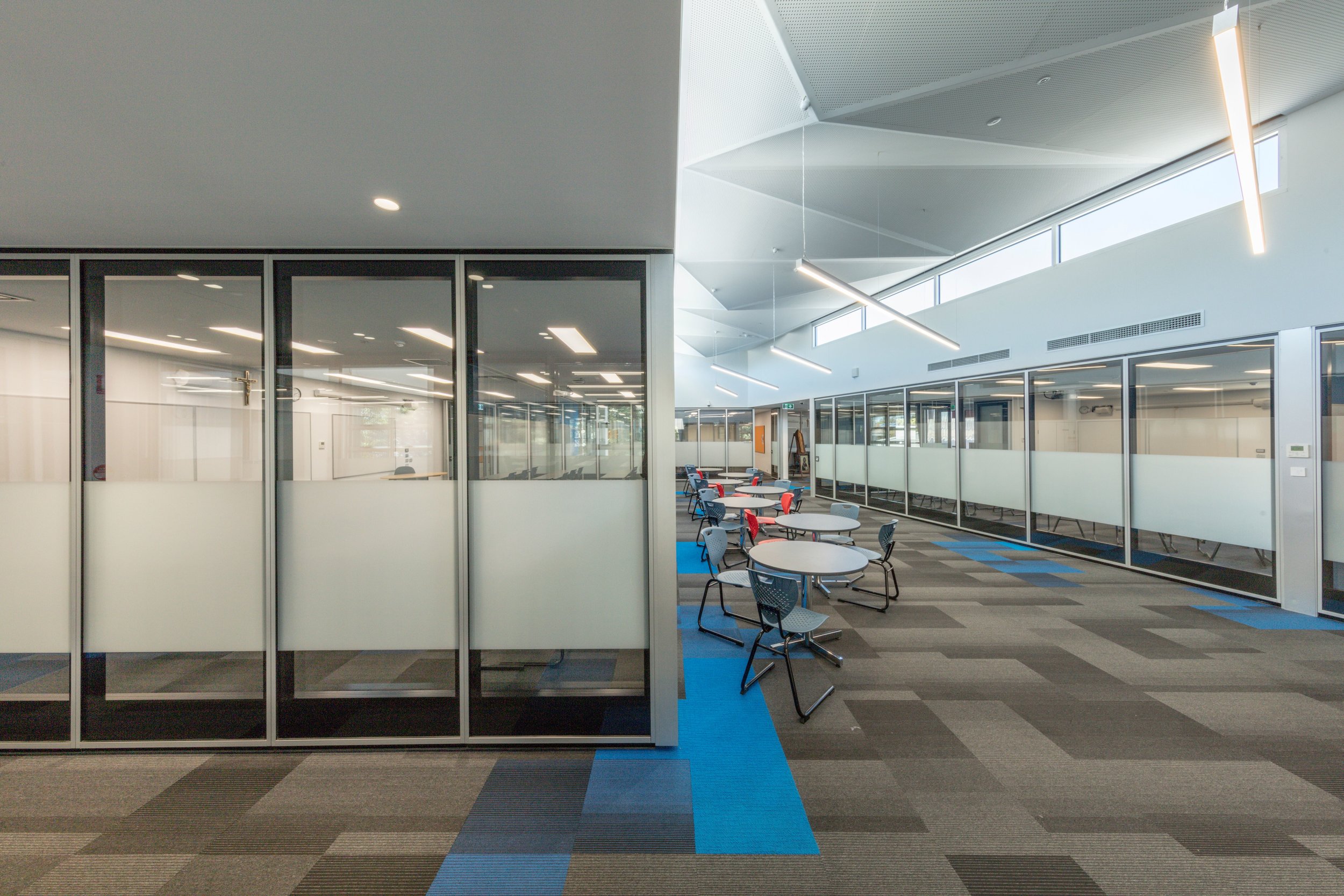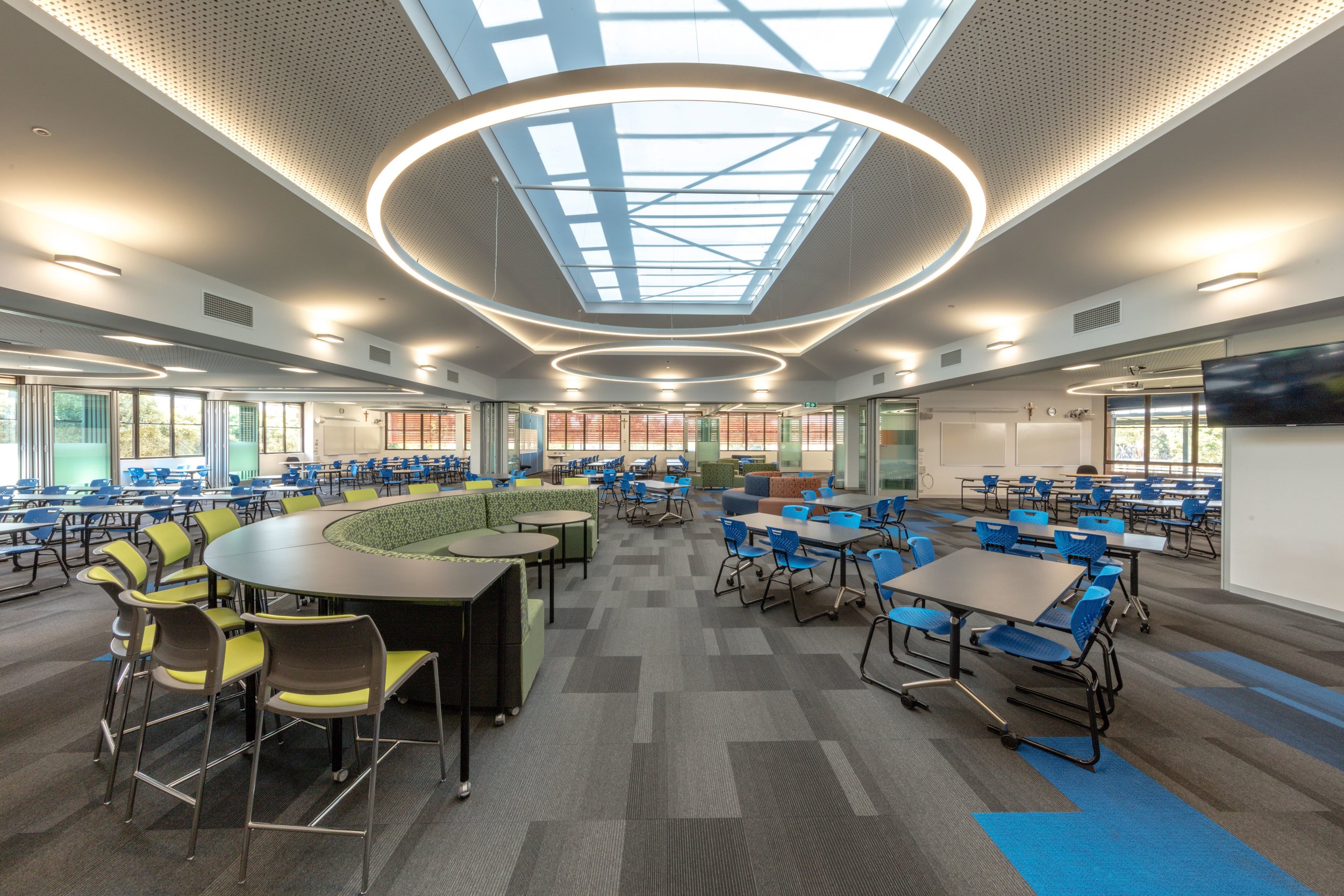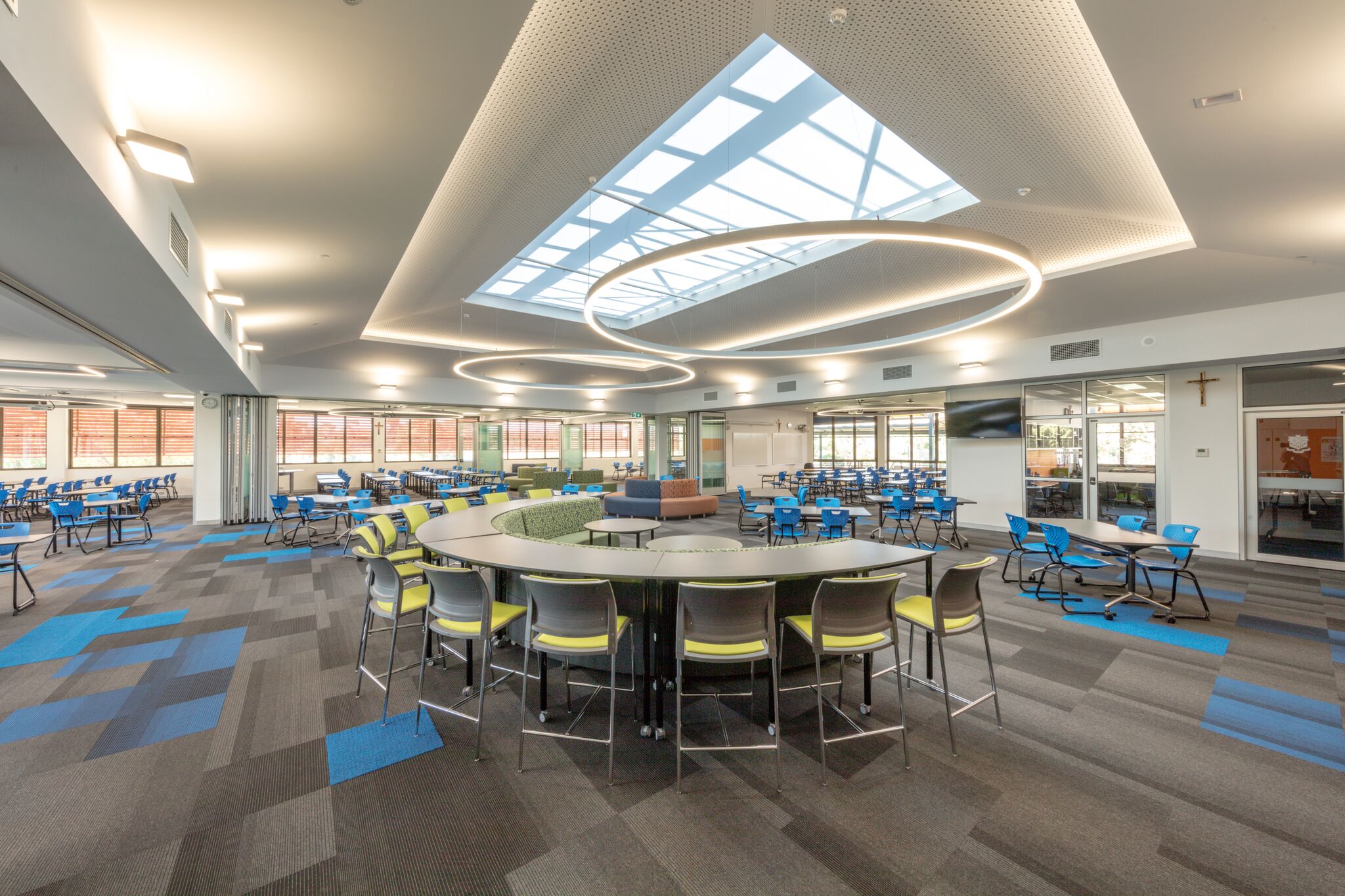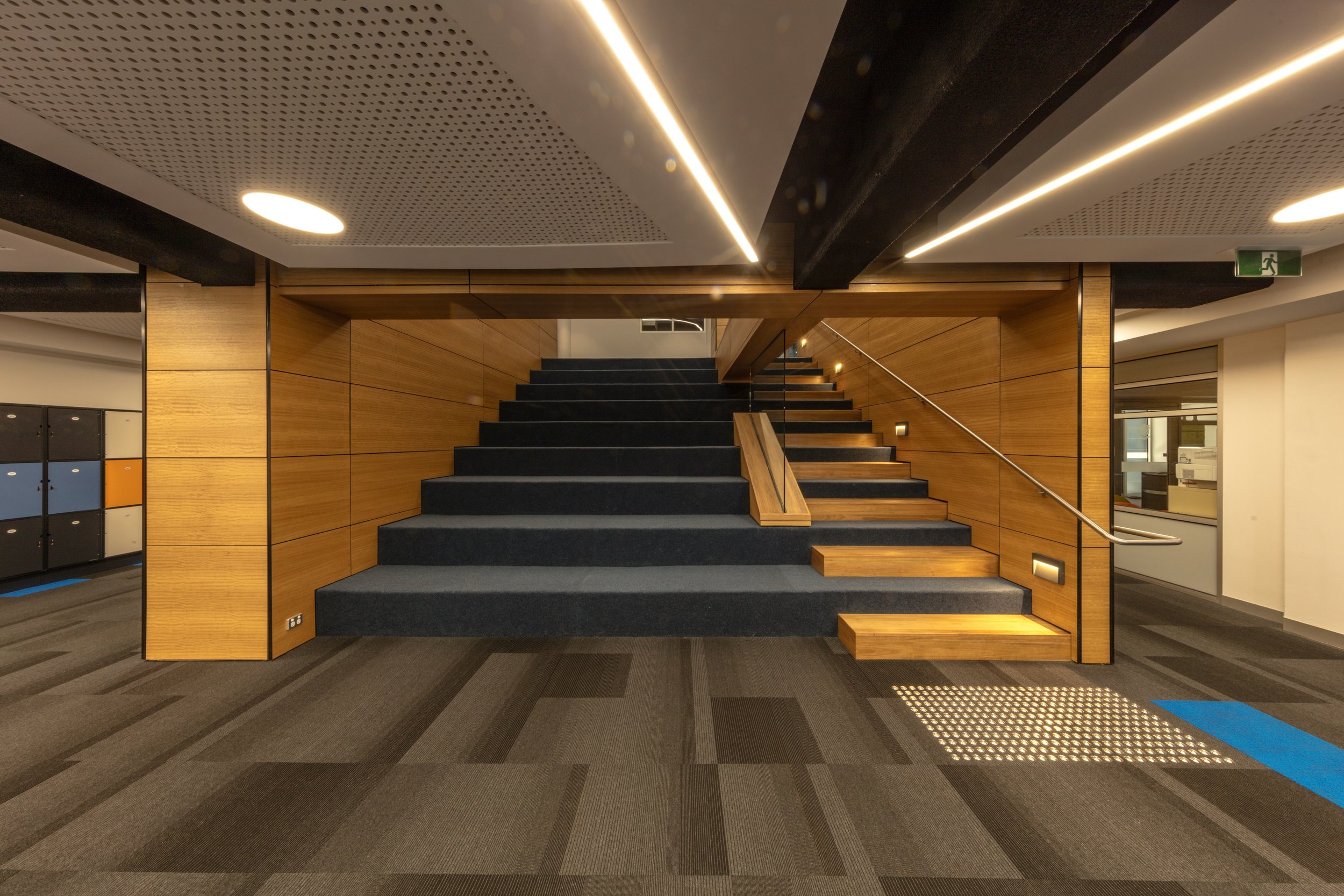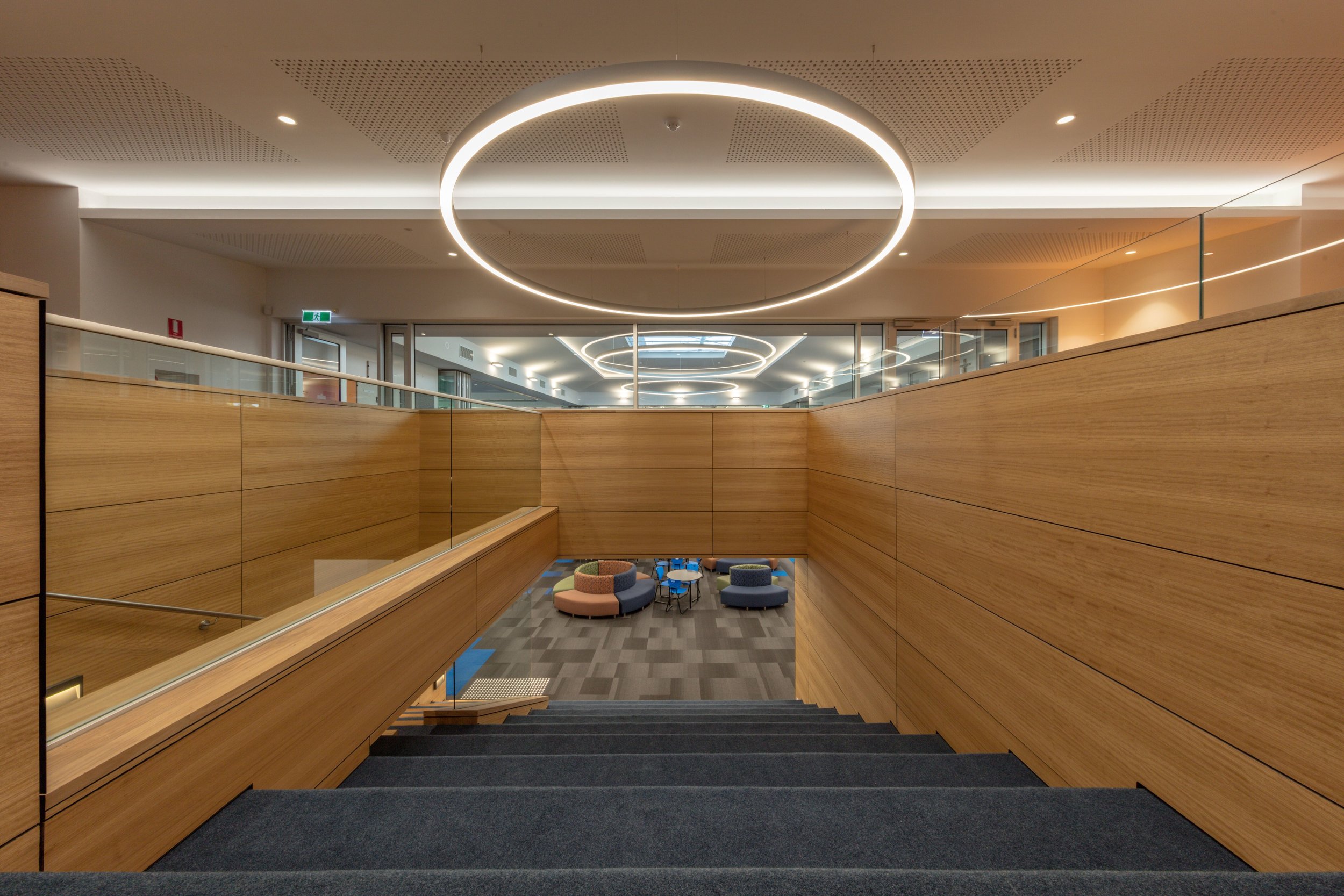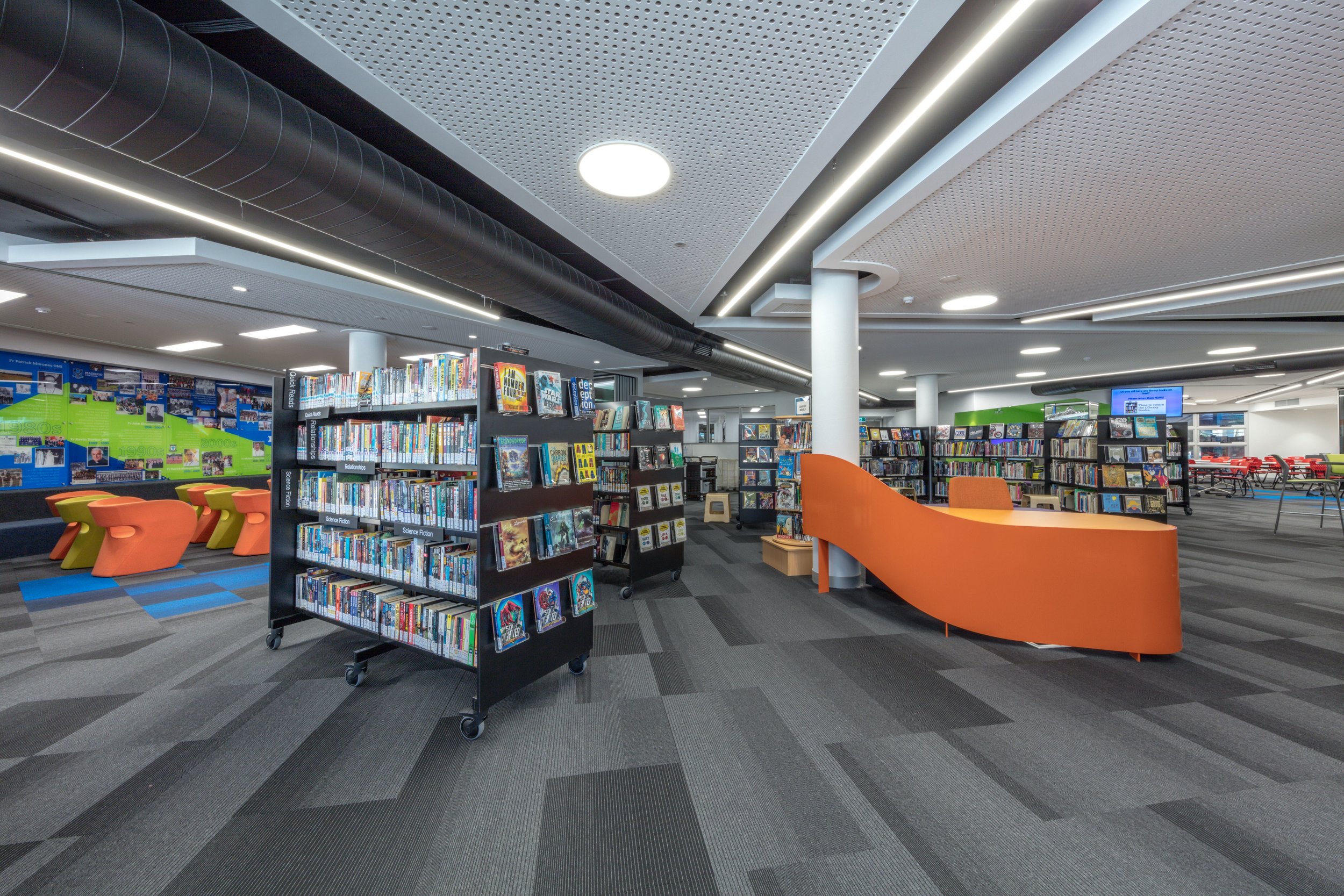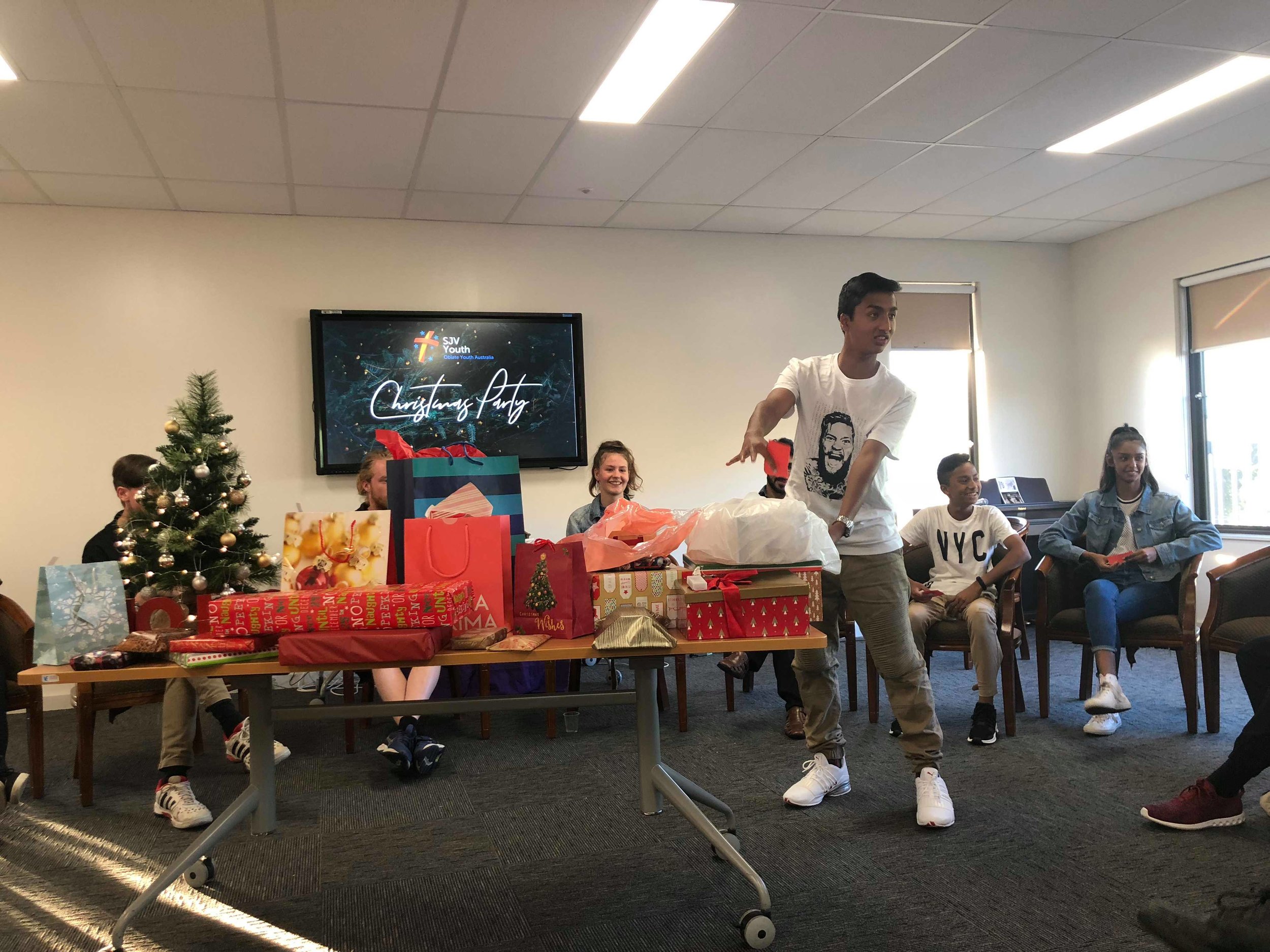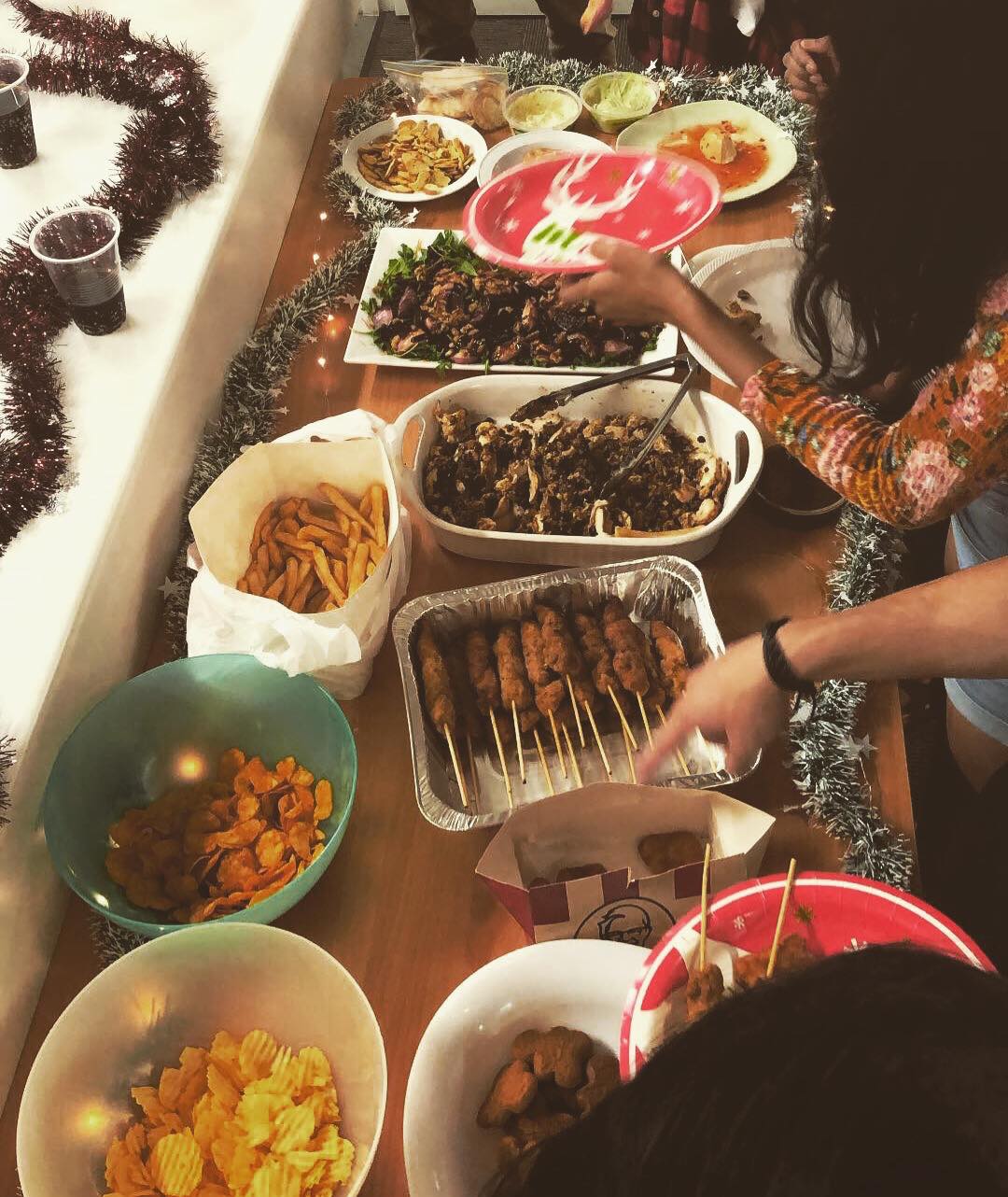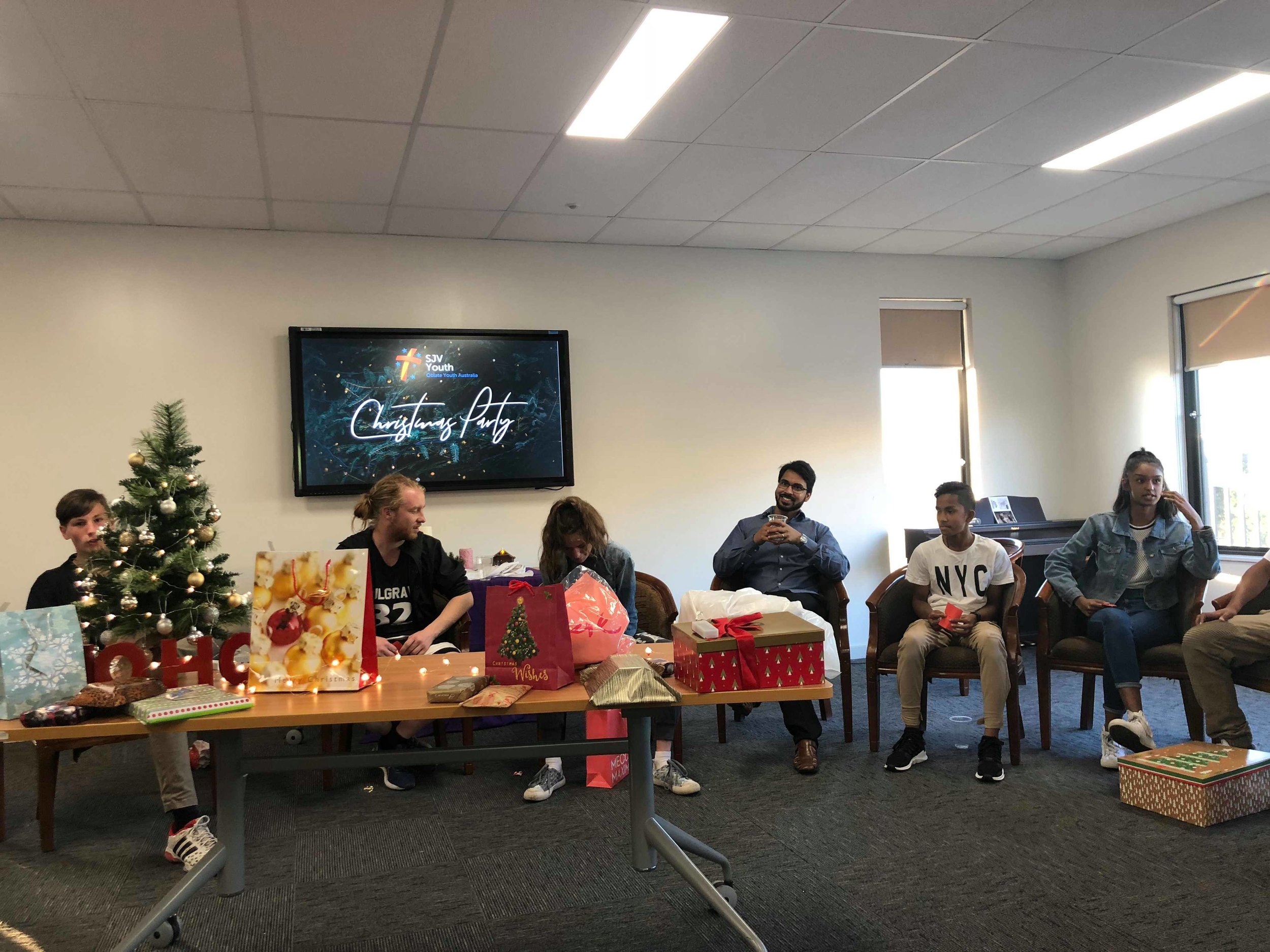125th Anniversary Reflection - Part 5
Reflection
The Oblates of Mary Immaculate are celebrating 125 years of serving the Church in Australia. It is an opportunity to give thanks for the past, to acknowledge the many blessings in our Province today and to prepare for another 125 years of service in Australia. The De Mazenod Family Gathering is an opportunity to build and strengthen connections between the Oblate ministries and explore structures for a Lay Association. Please keep the De Mazenod Family Gathering (14-18th August) in your prayers and continue praying for Vocations to the Priesthood and Religious life.
The following reflection is part of this journey, a series of reflections on our history written by Fr Austin Cooper OMI.
Oblates in Australia:
While Fremantle Oblates faithfully provided the round of services expected, changes were taking place. The church continued to grow as a popular venue for marriages from far beyond the parish; it also developed further as a centre for reconciliation.
Since 1894 Oblates have served as chaplains to the Prison. In 1991, when the jail was relocated to the new maximum-security Casuarina Prison, Fr. David Shelton continued as chaplain to this and other prisons.
Fremantle Hospital, is another facility serving a wide-ranging area, with Oblates such as Fr Tony Colbert faithfully providing a round-the-clock availability of pastoral care over many years.
Oblates also have a presence in Catholic Education with schools in Vitoria, Brisbane and Western Australia.
In 1989 a quite new venture came to Fremantle further enhancing its development as a centre: Notre Dame University was established in several handsome historic buildings throughout the city. The Oblates at St. Patrick’s were supportive from the first: Fr. John Archbold served as chaplain for some years, a role the Oblates maintained until recently. Since 1994 the Oblates have offered an annual scholarship and close relations continue between the University and St. Patrick’s. Another example of the Church reaching out to the community.
To this end, quietly, in 1971, Brother Ignatius Hannick OMI, assisted by stalwarts like Leo Cooper, began providing emergency sustenance to needy people doing it hard on the streets of Fremantle. Over time, this service spread from the cold, windy presbytery veranda, to secure parish premises, providing services during regular hours and serving meals 365 days of the year.
A governance structure was established and ‘St Patrick’s Community Support Centre’ was created. This has now grown to become the major Oblate Missionary Outreach in Western Australia. The Centre is well recognised for its excellence, with multiple accreditations from Government and welfare sectors.
Housing 125 -150 homeless persons and providing some 25,000 substantial meals each year, the Centre also offers services across physical, mental health, financial counselling and general rehabilitation programs
Constitutionally, the Oblate Parish Priest of Fremantle is the President of the Board of Governance. This ensures the ethos of the Centre remains true to the Oblate and Catholic traditions.
In a similar vein, on the other side of the continent, the intrinsic Oblate Missionary focus was creating other Social Outreach programs to assist the disadvantaged.
In Victoria, in the seaside town of Rosebud, Fr Tom Shortall OMI saw that some holidaying youth had been abandoned by the community. He responded to this need by setting up a coffee shop and drop-in centre in the Parish. Called “Rosie’s”, it ran from 1975 -1984. Other Rosie’s popped up throughout Victoria and in 1987, another Oblate priest, Fr Paul Costelloe OMI, took a van around the Gold Coast during ‘Schoolies” week providing support and friendship to school leavers.
Rosie’s outreach centres can now be found in many areas of Victoria and Queensland as they reach out to those most in need; the lonely, abandoned and marginalised. Just as in 1826 when Eugene De Mazenod first reached out the poor in his local French communities.
Meanwhile at St. Patrick’s Fr John Hannah (PP 1987-1996) petitioned for the Church to be raised to the status of a Minor Basilica. He also had an icon woven in Ireland as a reredos for the Basilica.
This was also the time during which St. Patrick’s developed a fine tradition of church music with a trained choir. Thanks to a generous gift by the Hughes family, in memory of Alice Hughes, between 1988–90 extensive works on the church organ were undertaken. Built by the Bellsham company, it incorporated some elements of the 1895 organ of Bishop Co. of London. Additionally, detailed rebuilding and enlargement was undertaken by the South Island Organ Co. New Zealand. Completed in 1998, it is the largest parish church organ in Australasia. It makes the Basilica a fitting venue for concerts provided by the resident organist Dominic Perissinotto and visiting artists.
All these developments revive the vision of Fr. Thomas Ryan: “The Catholic faith is a thing of beauty, our tradition of architecture, art, music and liturgy are all manifestations of this”.
This tradition is alive and well at St. Patrick’s and is being guided and developed by the present Rector and Parish Priest, Fr. John Sebastian. Hailing from the Province of India, he provides another instance of the continuing contribution of the wider Oblate world to the life and ministry of St. Patrick’s.
125th Anniversary Reflection - Part 4
Reflection
The Oblates of Mary Immaculate are celebrating 125 years of serving the Church in Australia. It is an opportunity to give thanks for the past, to acknowledge the many blessings in our Province today and to prepare for another 125 years of service in Australia. The De Mazenod Family Gathering is an opportunity to build and strengthen connections between the Oblate ministries and explore structures for a Lay Association. Please keep the De Mazenod Family Gathering (14-18th August) in your prayers and continue praying for Vocations to the Priesthood and Religious life.
The following reflection is part of this journey, a series of reflections on our history written by Fr Austin Cooper OMI.
Continuing “Fremantle and the Oblates”:
Some local autonomy, and an expanding mission, gave the Oblates renewed confidence. The first section of the new Church was opened in June 1900. On Sundays some 1,960 people attended Mass and a total of 692 at four other centres: the Convent, Prison, North Fremantle and Cottesloe.
From 1910 Frs Smyth and Neville lived at North Fremantle. But these apparently prosperous years gave way to challenging times: in the 1919 influenza epidemic an Oblate served in Quarantine leaving only two serving the large scattered parish. Glendalough was soon to close and North Fremantle to be taken over by the Archdiocese thus reducing the Oblate Vicariate to one house. This led to some soul searching among Oblates. Did they have a viable future in Australia? The Vicariate Superior, Fr. Eugene Callan hoped a move to the East would help. The opening of Sorrento (Victoria) in 1926 did not prove an instant solution. Sorrento was not the holiday mecca of today but a quiet, remote village. Depression and the Second World War were further challenges. It is a great credit to the Fremantle Oblates that despite a contracted mission they battled on: they did not surrender, displaying the Oblate commitment to the virtue of Perseverance. Meanwhile local vocations were few: Andrew McCusker, (a Scottish migrant educated in WA) was the first to enter the Oblates in Australia and he had to travel to Ireland for his novitiate and seminary training. In the 1930s and 1940s the new novitiate at Lovely Banks, Geelong, also saw four local novices survive. Three of these were Fremantle contacts: Frank Thornton, Henry McFall and Joseph McCann.
The war years saw further pressures on the Oblates. Two members of the Australian group served as chaplains – Frs. William Byrne and Thomas Purcell, while hostilities prevented obtaining further personnel from the Anglo-Irish Province. However peace brought swift changes. There had long been Italians in the parish, but post-war migration saw their numbers escalate. Fr. Pietro Abrano was the first of a succession of Italian chaplains, the long serving Fr. Gaetano Nanni being the last. Some nine other Italian Oblates served here between 1960 and 1987: an enrichment which an international religious group can provide. At one time there were 1,450 Italians in the Fremantle area.
With the migrants came new styles of devotion such as the high profile annual blessing of the fishing fleet from 1948 and the devotion to the ‘Black Madonna’ (Our Lady of Tindari). Being a port city, seamen were a pastoral care and in 1947 Fr Dan Breslin began specific pastoral care for seamen which evolved into Stella Maris of which Mgr. O’Shea became chaplain in 1962.
Fr. James Sullivan was the parish priest responsible for constructing the new sanctuary of the church in a style dominated more by utility than a sense of beauty, thus fuelling a simmering tension with those who preferred the original plan. But Fremantle was a-changing: many people were moving out to new residential areas. Over time St. Patrick’s would need to re-invent itself.
Inter-Chapter 2019 - POLAND
Rule 128e of our Constitutions and Rules directs that, “Between Chapters, the Superior General in Council, in plenary session, will call at least one meeting of the Provincials with the Central Government. After consulting the Provincials, he will determine the details of the convocation and the agenda of the meeting”.
In keeping with this rule and the practice, on March 1, 2018, Fr. Superior General convoked an “Inter-Chapter” meeting of the Provincials and the Central Government of the Congregation. The Superiors of Delegations and the Superiors of Missions in the Region of Europe were likewise requested to attend this gathering.
The Oblate Scholasticate of the Province of Poland, in Obra, is now ready to host the OMI Inter-Chapter 2019 from July 1-13. It will be an important time for the leaders of our Congregation,
to evaluate the extent to which decisions taken in Chapter have been carried out,
to encourage further implementation of such decisions,
to provide for the remote preparation of the next Chapter” (R 128e).
The preparation for the meeting had begun almost a year ago, as the Provincials, Superiors of Delegations and Missions, their respective Councils as well as the Regional Conferences, responded to a questionnaire sent to them by the Ad hoc Committee for the meeting.
The Inter-Chapter will certainly be a great opportunity for the Congregation in order to achieve greater effectiveness in responding to the directions set by the last General Chapter.
125th Anniversary Reflection - Part 3
Reflection
The Oblates of Mary Immaculate are celebrating 125 years of serving the Church in Australia. It is an opportunity to give thanks for the past, to acknowledge the many blessings in our Province today and to prepare for another 125 years of service in Australia. The De Mazenod Family Gathering is an opportunity to build and strengthen connections between the Oblate ministries and explore structures for a Lay Association. Please keep the De Mazenod Family Gathering (14-18th August) in your prayers and continue praying for Vocations to the Priesthood and Religious life.
The following reflection is part of this journey, a series of reflections on our history written by Fr Austin Cooper OMI.
Continuing Fremantle and the Oblates:
The original agreement with the Bishop involved undertaking an ‘Industrial School’ for delinquent boys, a ministry in which Oblates were involved in Ireland. The demands of Fremantle and personnel restraints left the Oblates less than enthusiastic about this aspect of the plan, but Bishop Gibney was insistent. He reminded the Oblates that ‘I offered 300 acres at Subiaco for this purpose with leave to collect throughout the Diocese to defray expenses . . . . The Government will give an allowance of one shilling per diem for children admitted by their officers.’
The ensuing tension was to throw the Oblate presence in Fremantle into jeopardy. The Council of the British Province was not sure that the proposed industrial school was a binding part of the agreement. While from Fremantle, Fr. Roger Hennessy reported that ‘our position here is anything but agreeable. The subscriptions to our new Church have come to a standstill. The people are displeased by the report of our leaving, and we, on our part, have no encouragement to continue. . . I sincerely hope that we shall not have to abandon Fremantle.’ Obviously, the Oblates had understandable concerns about the availability of personnel and the Bishop had a strong point in his reading of the original agreement. But in the dust of debate clarity of vision was impaired.
Fortunately help was at hand. Two Irish Oblates, Frs Stephen Nicoll and Patrick Brady were visiting WA to preach Missions and were asked to make a submission to the Oblate General Council then resident in Paris. Fr. Nicoll made a very balanced submission: the choice was between abandoning the mission and returning home or maintaining an Oblate presence in the Australian Church which necessitated accepting the industrial school. He was very much in favour of the latter as he saw the Oblate presence as ‘full of hope for the future.’ His wisdom saved the day. The contract was signed in 26th December 1896 and the foundation stone laid on the following March 17th, Fr. Daniel O’Ryan from Fremantle was appointed Superior and he was joined by three Oblate Brothers experienced in this ministry in Ireland: George Nolan (aged 26), Daniel Howard (aged 38) and Michael Boland (aged 39). Conditions were tough. Added to this was a paucity of numbers: in 1911 there were only 10 boys committed by government agencies and another 21 sent by parents (and for these there was no government subsidy). By the time the venture closed in 1921 some 219 boys had been sent from courts and 22 as private boarders.
One encouraging by-product of the establishment of Glendalough was the decision to give a measure of ‘self-government’ to the Oblate mission: the Oblate Vicariate of WA was established with two houses: six priests at Fremantle and one priest and five brothers at Glendalough. This appeared an encouraging sign, yet with the small population in WA there was little hope for future local recruitment. The Oblate presence was still (and long remained) very dependent on personnel from afar.
Feast of St Eugene de Mazenod
Read the Letter of Fr General to the Oblate Congregation on the Feast of St Eugene de Mazenod
On the 21st May 1861, Bishop Eugene de Mazenod left this life to be united with his heavenly Father. He was surrounded by his fellow brother Oblates and said to them, “Among yourselves practice charity, charity, charity; and outside, zeal for the salvation of souls.” These were his parting words to us and we continue to strive by his command. Today, we celebrate the great feast day of our founder and we give thanks for all that has been the Oblate congregation and we look forward, in hope, for all that is to come. We pray particularly for vocations, that the spirit and charism of St Eugene may inspire many young men to consecrate themselves as Oblate missionaries and that the same charism will be shared by many lay people in the one and same mission of God; to bring the Good News to the poor and most abandoned.
The following article is the Annual Letter for the Feast of St Eugene de Mazenod, written to the whole Oblate family by our Superior General, Fr Louis Lougen OMI.
Dear Brother Oblates and all our Brothers and Sisters living the Oblate Charism,
The feast of St. Eugene de Mazenod always brings us the renewed desire to live more faithfully as he insisted: with charity among us and zeal for the salvation of souls. May this day be a special day of prayer, communion and joyful celebration!
Very shortly, in July, the Major Superiors of the Congregation will be meeting for the Interchapter in Obra, Poland. We will be evaluating how the decisions taken in the 2016 General Chapter have been carried out and how to further implement them; the remote preparation for the next Chapter will also begin at the Interchapter. Please pray to the Holy Spirit so that we may achieve greater effectiveness in responding to the Chapter directions.
In January of this year, the members of the Central Government spent several days in Palermo, Sicily, following the footsteps of Eugene de Mazenod. It was in Palermo that he spent the last stage of his exile, from 1799 to 1802, before finally returning to France. He would have been there from the age of 17 to 20 years. We were guided on this pilgrimage by a member of MAMI, Enzo David, and by the president of the secular Institute, Oblate Missionary Cooperators of the Immaculate ((COMI), Ileana Chinnici.
We spent hours in the streets of Palermo, seeing the places where Eugene lived, the palazzi of important families whose circles he frequented and the churches he attended. We accompanied his life as a young noble, stopping at various sites to read excerpts from his letters and memoirs. We came in touch with different aspects of Eugene’s personality and we recognized experiences from his sojourn in Palermo that surely left marks on his personality, his future and the Oblate charism.
We visited what had been a working-class neighborhood of the leather-tanners where he dwelled for a short period. He lived among these laborers, met them in the streets, saw them washing the animal hides in the river and working in their shops. He was aware of their hard toil and their plight.
Also, his close attachment to the Cannizzaro family and, especially to the Duchess, whom he loved as a mother, was an important influence on him. Not only was her maternal presence and love deeply significant in these youthful years when his own mother had returned already to France, but the Duchess was a woman of faith and engaged Eugene in the responsibility for much of her charitable work for the poor. This ministry brought him directly in touch with the difficulties experienced by the most impoverished inhabitants of Palermo and must have increased his own compassion and concern for the poor.
Looking back over two hundred years ago to this period, it certainly contributed to the formation of a man whose first sermon at the Madeleine fills us with pride and expresses our way of seeing the faces of the poor.
“Come now and learn from us what you are in the eyes of faith. You, the poor of Jesus Christ, the afflicted and wretched, the sick and suffering and covered with sores, etc., whom misery overwhelms, my brethren, my dear brethren, my dear respectable brethren, listen to me. You are the children of God, the brothers and sisters of Jesus Christ, the co-heirs of his eternal Kingdom, the cherished portion of his inheritance; you are, in the words of Saint Peter, the holy nation, you are kings, you are priests, you are, in some way, gods: ‘Dii estis et filii Excelsi omnes’.”
Eugene’s life in Sicily increased his closeness to the poor, his awareness of the challenges they faced each day, his love for them and his respect for their dignity as beloved sons and daughters of God.
Along with visiting places connected to Eugene, mentioned in his letters from this period, we also accompanied present-day Oblates and members of the Missionary Association of Mary Immaculate (MAMI) and COMI as they live the Oblate charism today. It was striking to see the new place of Oblate ministry in the heart of old Palermo, Saint Nicholas of Tolentino Parish, recently taken on by the Mediterranean Province. An international community of Oblates has been established in this parish with a missionary outreach.
Two Oblates have been ministering to the migrants and refugees for many years, while living with other Oblates at Madonna delle Grazie Parish on the outskirts of Palermo. They have been commuting back and forth each day to the old part of Palermo for ministry where the immigrants and refugees are clustered. The Oblates emphasized that the new place of ministry at St. Nicholas is innovative in two ways.
First of all, the ministry with immigrants and refugees will be the common ministry of all the members of the Oblate apostolic community, with the parish as their base. They are actively integrating in various ways, lay associates, young people living the Oblate charism and members of COMI in the mission. The other new dimension to this apostolic community is that the Oblates are living at the parish house, right in the midst of the poor, among the many immigrants and refugees coming from around the world to Sicily.
On January 27th, the members of the Central Government celebrated the Eucharist with the local Oblates at St. Nicholas Church. It was packed with people of every shade of human flesh, celebrating in many tongues the Eucharist, each contributing something beautiful from his or her local culture in prayers, songs and dances. We saw the new faces of the poor. We encountered Christ the migrant, the refugee. It was a beautiful celebration of communion.
In order to take on responsibility for this parish in the heart of Palermo, the Mediterranean Province had to decide to withdraw from the parish on the outskirts of Palermo, Madonna delle Grazie. Some 15 years before, the Oblates had taken the responsibility for this parish and gradually it had become a very life-filled parish community with strong lay leadership and many ministries. The Central Government had an evening social with the leadership of this parish, and in speaking with them, I found it both truly surprising and refreshing that they, the parish leadership, were not complaining and lamenting that the Oblates were withdrawing from the parish!
The leadership, very conscious of the Oblate charism, have understood that the Oblates have accomplished our mission at their parish and, called to be faithful to our charism, we must now move on to new missionary territory. They wish us success in this new project so that we continue to respond to the urgent needs of the poor. Congratulations to the Mediterranean Province, responding to the call of recent General Chapters to welcome new missionary challenges and to seek the new faces of the poor, even if this means having to give up very good ministry!
Being in Palermo was a time of grace for the members of the Central Government. Those days brought us a deep awareness of the last period of exile of young Eugene de Mazenod. It also showed us many Missionary Oblates, MAMI members and COMI, living the Oblate charism today, not only in Palermo, but also in strong apostolic communities, diverse ministries and collaboration with laity and youth in Misilmeri and Messina, in a beautiful communion of life and mission. An added touch to this rich experience was that during these days, while being warmly welcomed by the Oblates and the Sicilian people, we were also invited to enjoy the delicious food and wine of this enchanting island!
In communion with our first brother Oblates, who chanted the Salve Regina around their beloved Father as he lay dying, we invoke the Mother of Mercy with tender devotion as one Oblate family. Let us ask Mary to help us be creatively faithful and audacious in living the missionary charism bequeathed to us by our Founder. Saint Eugene, pray for us!
Happy feast day!
Father Louis Lougen, OMI
Superior General
May 21, 2019
125th Anniversary Reflection - Part 2
Reflection
The Oblates of Mary Immaculate are celebrating 125 years of serving the Church in Australia. It is an opportunity to give thanks for the past, to acknowledge the many blessings in our Province today and to prepare for another 125 years of service in Australia. The De Mazenod Family Gathering is an opportunity to build and strengthen connections between the Oblate ministries and explore structures for a Lay Association. Please keep the De Mazenod Family Gathering (14-18th August) in your prayers and continue praying for Vocations to the Priesthood and Religious life.
The following reflection is part of this journey, a series of reflections on our history written by Fr Austin Cooper OMI.
The Fremantle Story:
From 1850 until 1867 the Benedictines provided pastoral care for Fremantle Catholics. They were then replaced by diocesan clergy. The local Baptismal Register from 1852 indicates that sacraments were administered in ‘St. Patrick’s Church’, evidently a make-shift edifice. It was not until 1860 that the Catholics, now numbering about 250, erected a lime-stone Church dedicated to St. Patrick. By this time, they had also built a presbytery and in 1855 welcomed the Sisters of St. Joseph of the Apparition.
In 1893 Fr William Ring OMI, a friend of Bishop Mathew Gibney of Perth, arranged for the Oblates to come to Western Australia and in 1894, the Provincial of the British Province, Matthew Gaughren accompanied two younger priests, Roger Hennessy and Daniel O’Ryan, both aged 27, to Fremantle. The Provincial remained as Parish Priest of Fremantle for the first year, a clear indication of the Oblate commitment
Daniel O’Ryan’s surviving letters offer glimpses of the scene: Catholics were ‘for the most part poor working people’ and their Church was ‘liable to be blown away during any storm’. He pictures small scattered clusters of Catholics in Coogee, Hope Valley and Rottnest Island. Closer to the centre, North Fremantle and Beaconsfield needed Churches.
The mission was challenging enough for the three Oblates, yet it also had its limitations: it was described in the Founder’s Journal as being to ‘attend to the spiritual wants of the Catholics between Fremantle and Claremont.’ There was no mention of evangelization of the whole colony or any outreach to the Aborigines. It was to remain a distant appendage to the home province and for many a 19th century Oblate it did not seem especially ‘missionary’ like their brothers labouring among Eskimos or Zulus.
Yet every pastoral care has a ‘missionary’ quality about it. Fremantle was no exception. Not only was the church in a sad state, but their (apparently handsome) residence needed urgent repairs and was barely furnished. We are fortunate to have a long letter from a parishioner, Mrs J. Townsend, giving a warm appreciation of the three Oblates: they were ‘young men – all Irishmen – good preachers – strong active men – who have made things boom here.. …..Fr Gaughren delivered a course of sermons on Catholic Doctrine. I had a summary made of these and had them published in the Daily Times.’ These Oblates were certainly not lacking in missionary zeal.
When the Provincial returned home his place was taken by Fr Thomas Ryan, then aged 37. Fr Ryan is to be credited with the vision and energy to commence the present Church, though circumstances prevented its completion. Designed by Michael Cavanagh, it is a fine local example of the revival of gothic architecture so popular in the nineteenth century. The beauty of a Church and its furnishings has always been a means of imparting a sense of the beauty of the Catholic faith and the beauty of the unseen God.
Year 12 Mazenod Leaders visit Seminary
Five Year 12 Prefects join the St Mary’s Seminary community for “Come and See” Evening.
On 3rd May 2019, five of the Year 12 school leaders and prefects from Mazenod College VIC, visited St Mary’s Seminary, Camberwell as a part of an opportunity to “Come & See” the life and mission of the Oblates and in particular, the life of our seminarians.
The Mazenod School Captain, Elvis Tran, accompanied by four of his peers and Mrs Pier Bourne, Year 12 Coordinator, joined Frs John Sherman, Daniel Szewc, Andrew Chen and Brs Joshua Nash and Thuan Bui in the new St Mary’s Seminary. They began with a tour of the new Camberwell premises and were all thoroughly impressed. The school leaders and Mrs Bourne joined the community for their evening prayers and adoration of the Blessed Sacrament, before sharing pizza for dinner and lively conversation. It was a great opportunity for these young men to have an inside look into an Oblate community and specifically the formation community. They had many questions and were able to discuss these with our Oblates over dinner. These young men are coming to a crucial point in their lives where they are discerning what to do after school and this evening provided them with an insight into one great possibility, whether they are called to be Missionary Oblates of Mary Immaculate.
Please keep these young men in your prayers as they continue through Year 12 and into their futures. Please continue to pray for Oblate vocations and if you are interested in joining in a “Come and See” you can find information here about the next one on 24-25 May.
Moe's Easter celebrations catch media attention
See the Channel Nine news coverage of Moe’s Good Friday celebrations.
WIN News Gippsland interviews Fr Harry Dyer OMI about the Good Friday and Easter celebrations taking place at St Kieran’s, Moe and St Mary’s, Newborough. The news crew attended the whole stations of the cross ceremony on Good Friday and interviewed Fr Harry about the significance of Good Friday and Easter for Christians. See the news clip below:
125th Anniversary Reflection - Part 1
Reflection
The Oblates of Mary Immaculate are celebrating 125 years of serving the Church in Australia. It is an opportunity to give thanks for the past, to acknowledge the many blessings in our Province today and to prepare for another 125 years of service in Australia. The De Mazenod Family Gathering is an opportunity to build and strengthen connections between the Oblate ministries and explore structures for a Lay Association. Please keep the De Mazenod Family Gathering (14-18th August) in your prayers and continue praying for Vocations to the Priesthood and Religious life.
The following reflection is part of this journey, a series of reflections on our history written by Fr Austin Cooper OMI.
Charles Joseph Eugene De Mazenod, who founded the Missionary Oblates of Mary Immaculate, OMI, was born in 1782 in Southern France. Although his family was wealthy, they were forced to flee France during the French revolution, leaving all their possessions behind. It was 1790 and Eugene was just 8 years old.
Eugene’s father had been a politician but was forced to become a tradesman in Italy, making it difficult for Eugene to have a good education other than that provided by a Priest in Venice.
Eugene returned to France in 1802 when he was 20 and saw that the Catholic Church in his native country had suffered a great deal during the Revolution. The education he had received in Italy had included religious instruction and Eugene was drawn to the beauty of the religious life he had witnessed in Venice.
Assisted by a mystical experience, he entered a Seminary in Paris and was ordained a Priest in 1811, aged 29. Rather than work in a Parish, Eugene worked among the poor and vulnerable and in 1826 received approval from Pope Leo XII to found a new religious Order. Thus, was born the Missionary Oblates of Mary Immaculate OMI.
Check Out the Latest MAMI Newsletter!
The latest MAMI newsletter is now available to download!
Blessing and Opening of new St Mary's Seminary
The exciting events of last Saturday’s Blessing and Opening of St Mary’s Seminary, Camberwell.
On Saturday 9th March, 150 guests gathered at the new St Mary’s Seminary to celebrate its official Opening and Blessing by Bishop Mark Edwards OMI. The Camberwell community and the Seminary community welcomed guests from the Oblate family, Oblate Youth Australia, neighbouring parishes, fellow religious communities, the Catholic Theological College and many others who have been closely connected with the building of the new seminary. Many even came from interstate to share in our special occasion.
The Oblate community in Camberwell started the day with the celebration of the Eucharist and Bishop Mark blessed the altar and the chapel. After our guests arrived, the liturgy commenced to bless the whole seminary. Music was provided by the wonderfully talented National Coordinators of Oblate Youth Australia. Readings and prayers were contributed by members of our Oblate family and those connected to us in different ways. Deacon Nathan Rawlins proclaimed the Gospel and assisted Bishop Mark in the very speedy blessing of every room in the new seminary. Speeches were made by the Rector, Fr Daniel Szewc OMI, and the Provincial, Fr Christian Fini OMI, who challenged us to have 20 seminarians by 2020. What a feat that will be! You better keep praying for us then.
A beautiful morning tea spread was laid out for our guests whilst Br Josh and Br Thuan escorted our guests on guided tours of the new premises. It was a magnificent occasion and truly a sign of hope for the future of the Church in Australia and for the mission of the Oblates here in this great southern land.
Please continue to pray for our seminarians and for more young people to commit their lives with courage to the Oblate charism and the Oblate works in Australia.
Oblate Day - 17th February
17th February, Oblate Day. Read about the festivities marking the 193rd anniversary of our order.
On Sunday 17th February, Oblates all over the world celebrated our 193rd Anniversary of Papal Approbation, or in other words, we commemorated the day on which Pope Leo XII officially validated the work of Eugene and his Missionaries of Provence and officially approved the order as the Missionary Oblates of Mary Immaculate. It has become a great tradition for Oblate communities to come together and celebrate our history, our present community and the future to come. Oblates traditionally renew their vows on this day and also consecrate themselves to Mary Immaculate, the patroness of our congregation.
It was fortunate that this year the feast fell on Sunday and allowed us to mark the occasion with even more celebration. A mass was held in the Seminary chapel with the two Camberwell communities. We were lucky to have Fr Gerard Conlan OMI with us to celebrate, while he is back from Kenya for a short while. The mass was followed by a lovely, celebratory lunch and of course great Oblate community frivolity.
We continue to pray for our congregation, for all our Oblate priests, brothers, sisters and lay associates that they may continue to live out the charism of St Eugene in our time, proclaiming the love of God to the poor and most abandoned. We pray for vocations and the continuation of our ministries.
To read the Address from the Superior General for the occasion, click here.
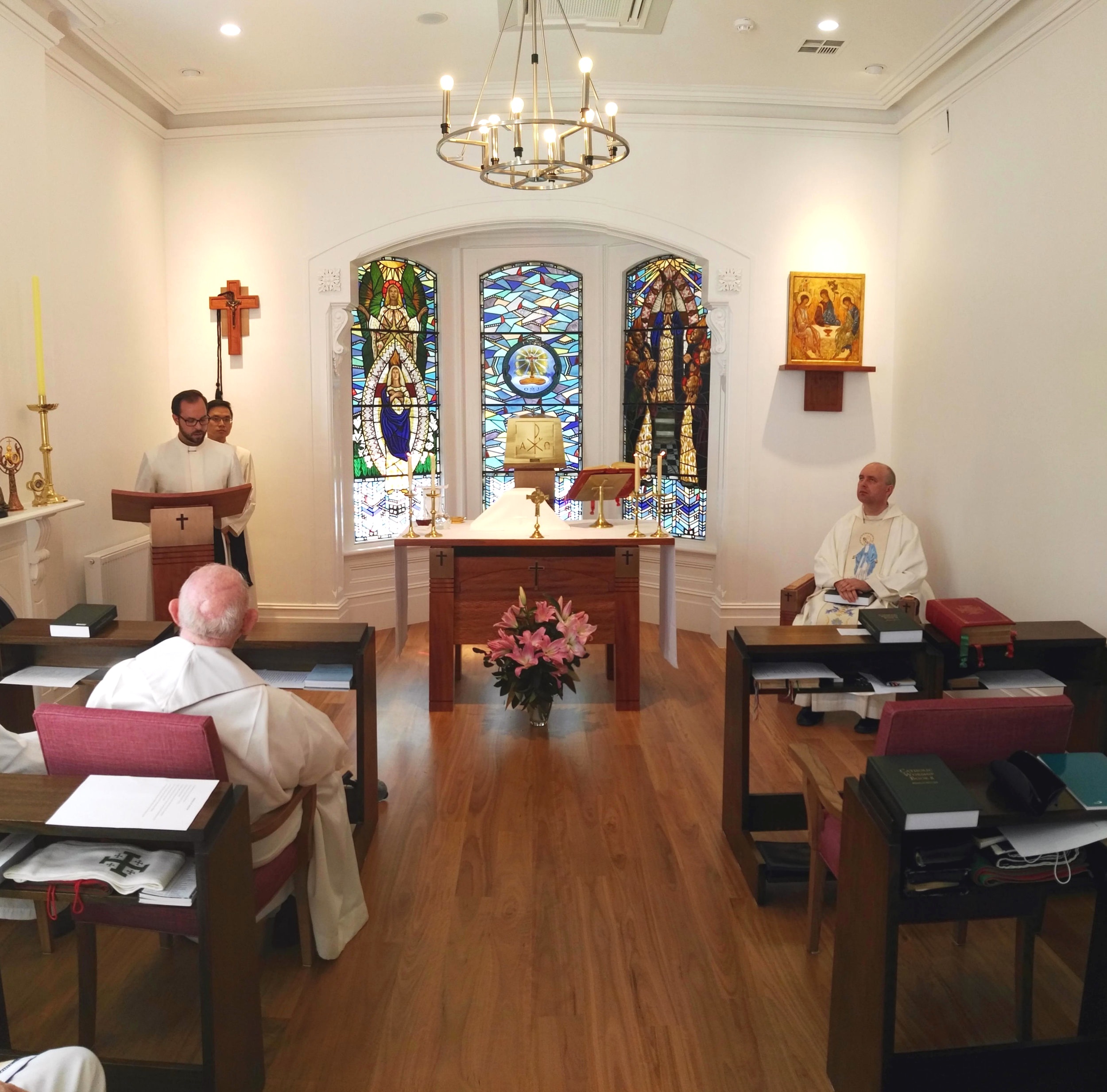
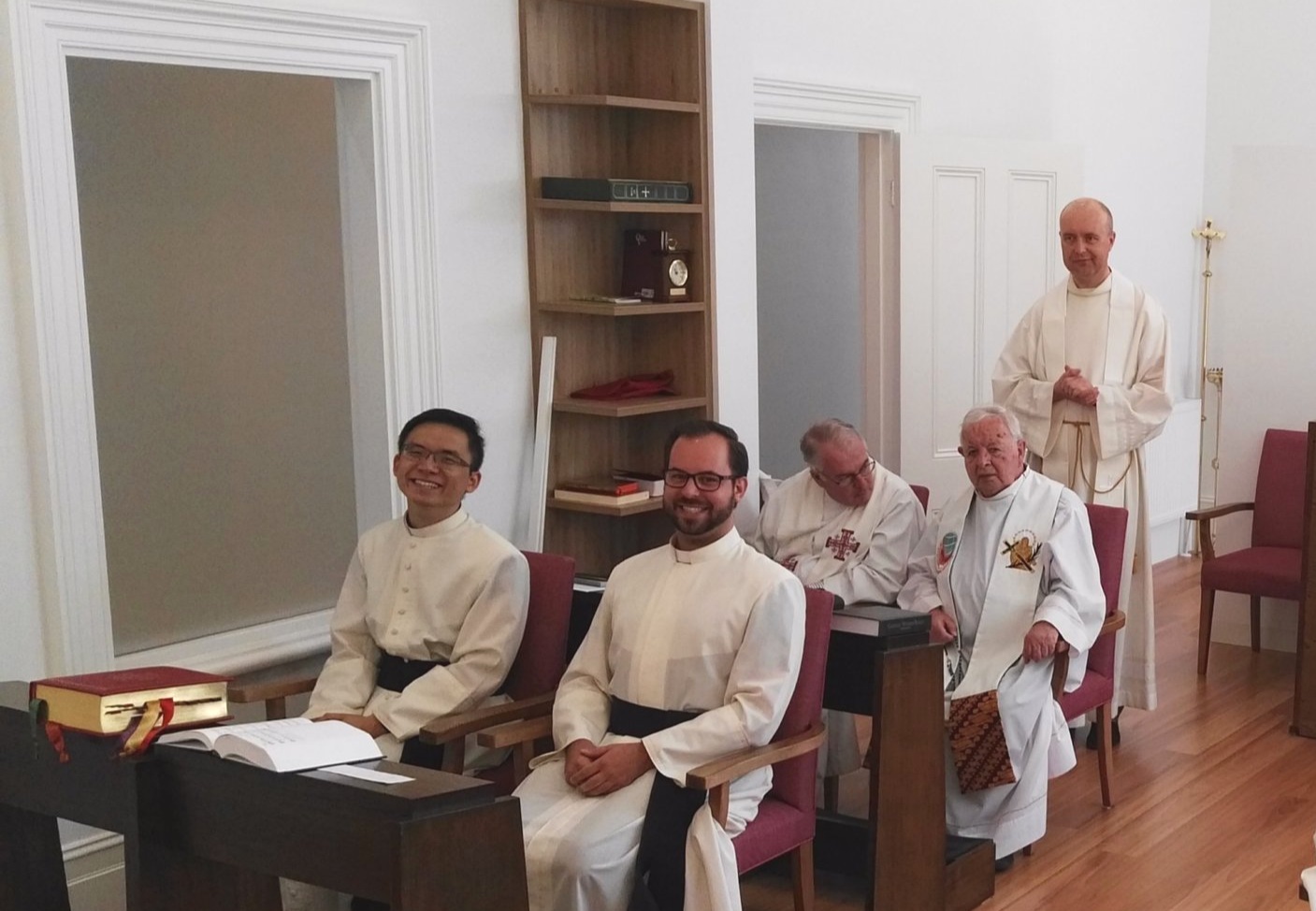
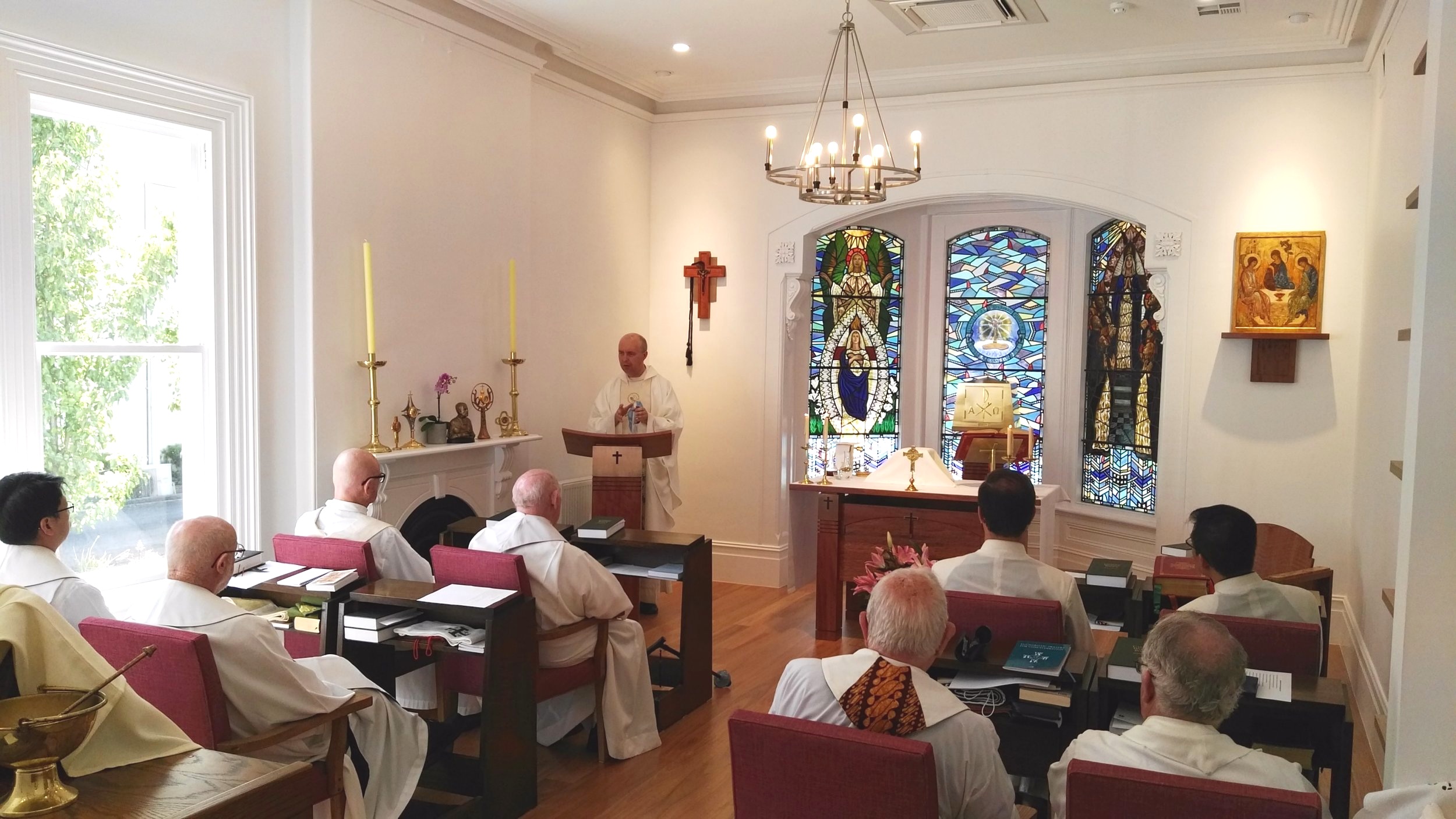
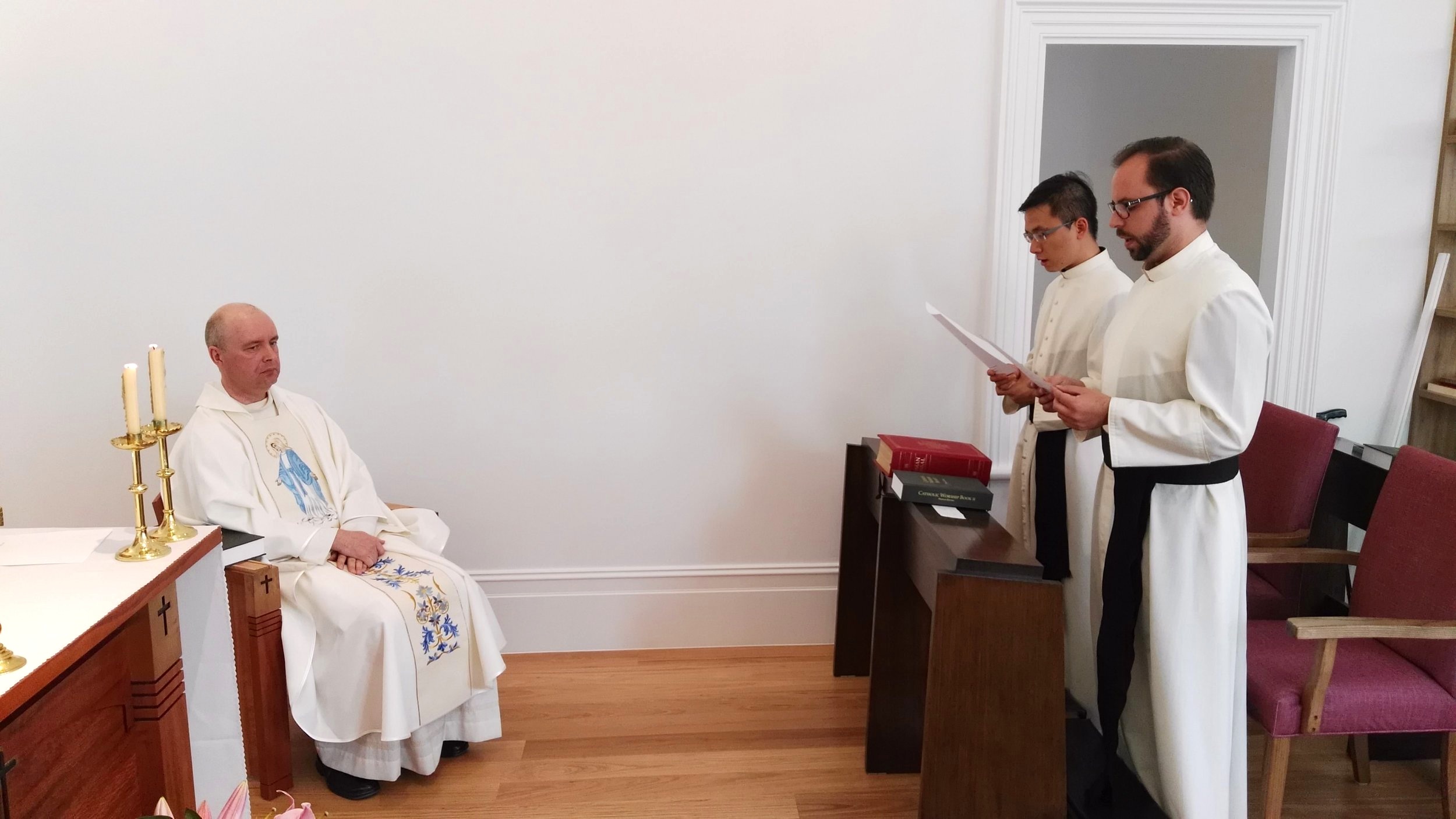
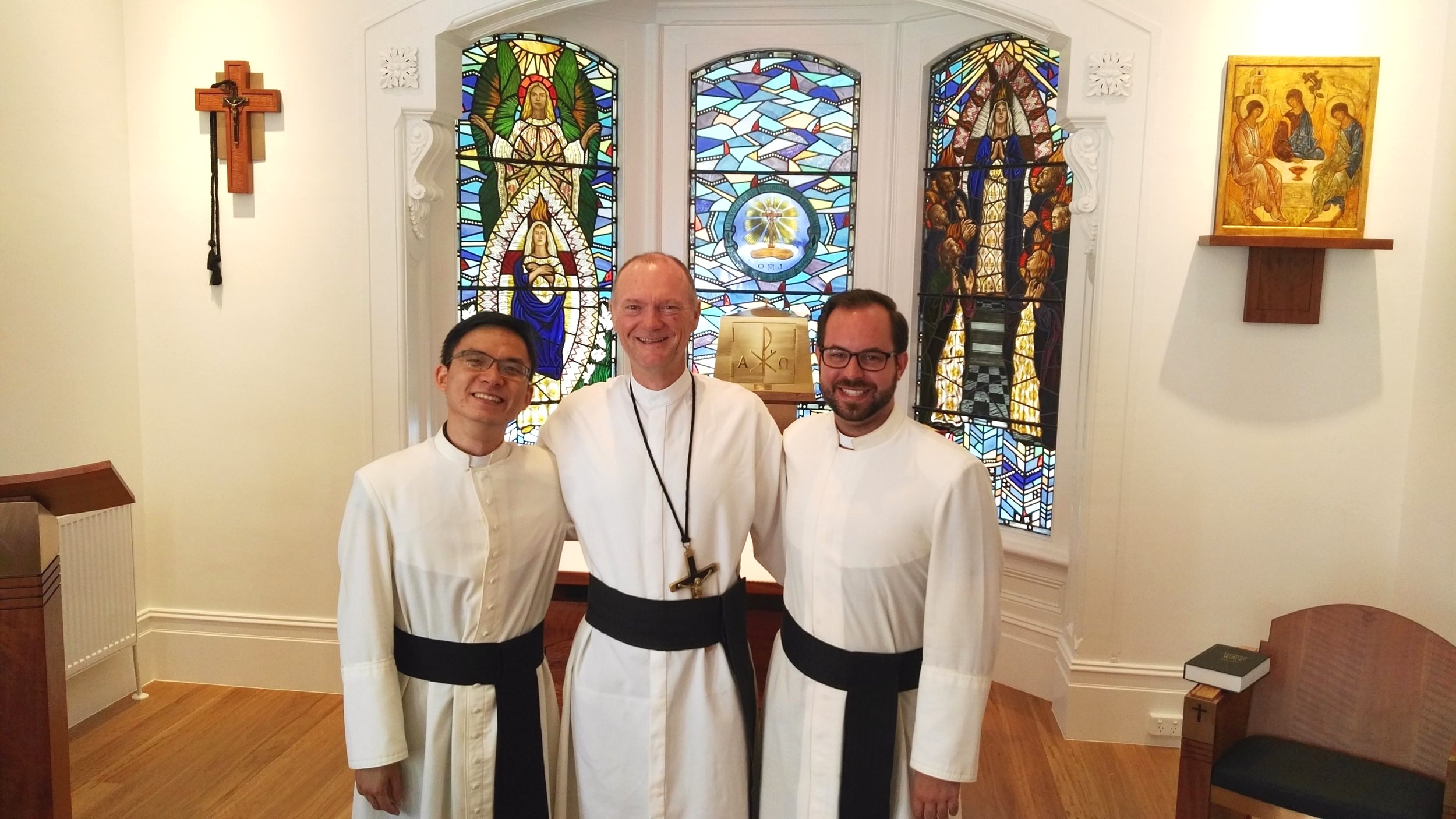
Blessing of New Mazenod Building
Blessing of new Mazenod College Building
On Saturday, Mazenod College VIC welcomed guests to the college to celebrate the blessing of the new buildings. Guests were invited to join the blessing ceremony, led by Bishop Mark Edwards OMI, which was then followed by a tour of the new building and lunch.
Congratulations to Mazenod College on the completion of the build, the impressive new facilities will no doubt have the students excited about their education.
Installation of our new provincial
Fr. Christian Fini OMI installed as Provincial.
On Friday 1st February, the province officially installed Fr. Christian Fini OMI as the new provincial. The community gathered at Camberwell for a small ceremony.
We once again congratulate Fr. Christian Fini OMI on his new appointment and wish him all the best.
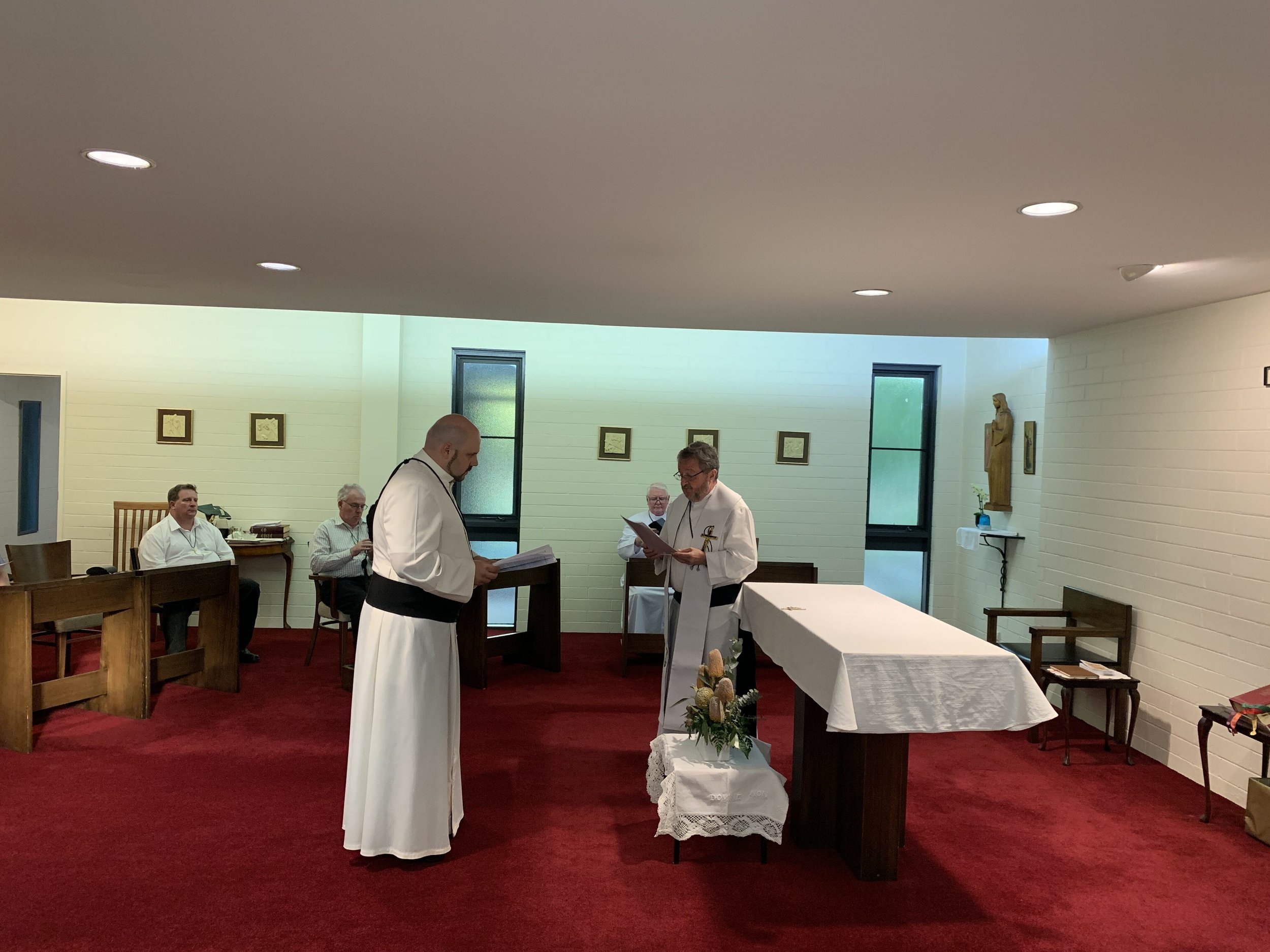
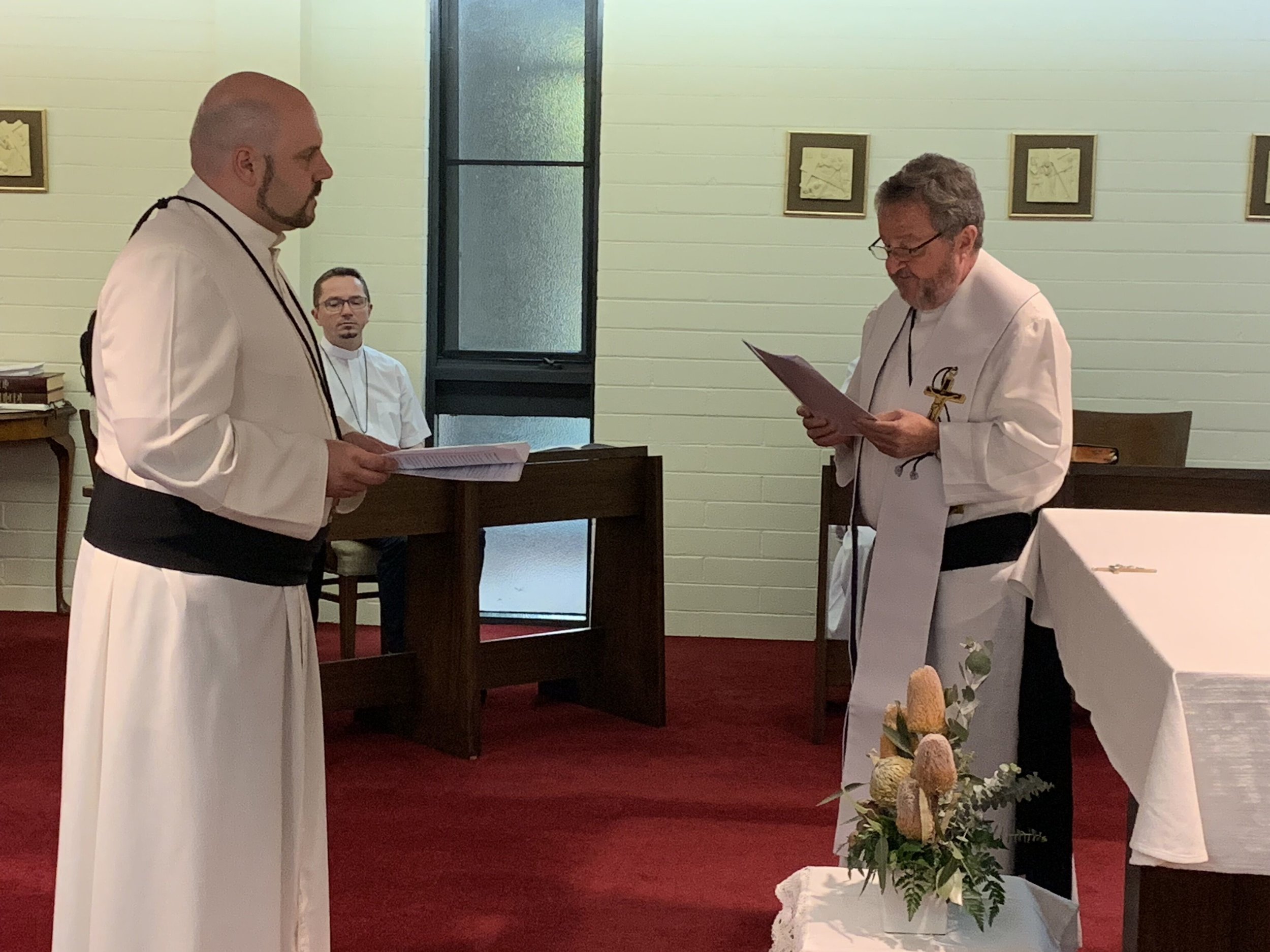
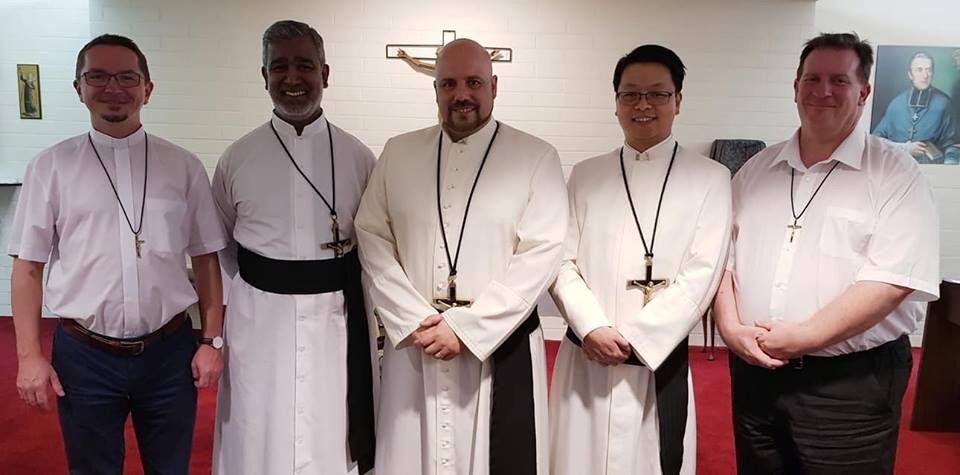
National Oblate Youth Encounter 2019 - Day 3/4
Update for Day 3 and 4 of the National Oblate Youth Encounter 2019
Day 3 of our National Oblate Youth Encounter saw the spirits of our young people rise to new heights as they continued to bond together and discover the beauty of their shared faith. The morning started with the third talk in our series, focusing on achieving sainthood. It was presented by Husharn Duggan and made us all realise that we are called to holiness. In our discussion groups, the youth participated in activities such as painting re-usable bags to take home with them. More workshops were presented by several of our youth leaders, as well as an opportunity for Q&A with our Oblate priests. Following lunch, our participants presented a series of skits, prepared by each discussion group, re-enacting different parts of scripture that focused on our theme, ‘On the Road’. The community time in the afternoon saw our participants play games, get to know each other and they even had the opportunity to write lots of affirmation notes to each other.
Our Saturday evening finished the day off with our closing Mass. Celebrating the vigil of the Feast of the Epiphany, our Oblate youth prepared a beautiful liturgy, which was celebrated by Fr Christian Fini OMI and Bishop Mark Edwards OMI. Fr Christian preached about the gifts which the wise men brought to Jesus and encouraged us to offer our gifts as well. The joy of the Eucharist urged our young people to sing their hearts out in praise of our God and this joy continued on into the night with lots of singing and dancing.
The following morning we started with morning prayer, which included our commissioning. A representative of each Oblate community was called forth to receive an Oblate Youth candle to take back and use in their local communities. Following prayer, Bishop Mark Edwards and Tishan Lokuge led us in a plenary council sharing session, where all the young people were able to share their thoughts on the future of the Church in Australia and these recorded thoughts will be submitted to the Bishops for the Plenary Council in 2020.
Once everyone’s bags were packed, hugs were shared as people wished each other goodbye. It was a quick 4 days, but the Holy Spirit definitely moved amongst the young people here drawing them together as one, big, Oblate family.
A video update from our MCs can be viewed here.
Thank you to those who supported this camp in many ways and especially for your prayers during this time. Keep an eye out for dates for next year’s National Oblate Youth Encounter on our Oblate Youth website.
National Oblate Youth Encounter 2019 - Day 2
Update for Day 2 of National Oblate Youth Encounter 2019
The second day of the National Oblate Youth Encounter started off without a hitch despite the extremely hot weather. One of our groups, led by Husharn Duggan, facilitated our morning prayer focusing on the Resurrection of Christ. It involved each person removing a handful of sand from a large bowl until a crucifix was revealed demonstrating how Christ can be revealed to us in our own lives. The prayer was followed by a stellar talk, given by Roshali Lokuge, focusing on the second part of our theme, becoming Christians. Roshali shared deeply about her own personal journey of faith and demonstrated how each of us can grow in our relationship with Christ and how this makes us Christians.
The rest of the day saw discussion groups being had, candles being painted, a variety of workshops presented and even enough time for a dip in the pool to cool off from the scorching heat. After dinner, the Oblate Youth of Australia gathered for the sacrament of Reconciliation and we were blessed to have seven Oblate priests to help us. Some of the youth helped us prepare for reconciliation through a dramatised examination of conscience and Fr Michael Twigg spoke to us about the beauty of the sacrament and the greatness of God’s mercy. Following a beautiful and reflective session, the youth pulled out their competitive spirits for a games and quiz night.
We are thankful that a cool change come in the early evening and it cooled down for everyone to have a good night’s sleep. We shall see you all tomorrow!
Video update from our MCs can be found here.
You can also follow what we are doing on social media with #noye19
National Oblate Youth Encounter 2019 - Day 1
Update of Day 1 from National Oblate Youth Encounter 2019
The 18th National Oblate Youth Encounter started yesterday on the 3rd January in Healesville, VIC with 75 participants from 10 Oblate communities across Australia. Young students from four Oblate colleges, young adults from Oblate parishes, youth leaders, seminarians, Oblate priests and staff have gathered together for another amazing National Oblate Youth Encounter. The theme for this year is taken from the Oblate rule where St Eugene wrote that the Oblate mission is to help people to become human, then Christian, and finally, saints. On our first day, following the initial welcoming, ice-breakers and group discussion, the participants were given the challenge of an ‘Amazing Race’ where teams had to compete in challenges that involved puzzles, riddles and tricky challenges like fishing out marbles from ice-cold water with only your toes. A lot of fun and team-building was had by all.
Our evening started off with Adoration, which included beautiful music from our musicians, a short reflection from Br Josh and all participants praying reverently before the Blessed Sacrament. Fr Christian finished the prayer with benediction, before we moved into our first talk for the event delivered by Alison Whitten, Campus Minister for St Eugene’s College, Burpengary. Alison focused on what makes us human and how our Catholic teaching helps us to understand that as humans we were made in the image of God; God made us in love and for love. Community time that evening allowed our participants to get know each other better, and hopefully restful sleep was had for another big day tomorrow.
Check out the video updates on the Oblate Youth Australia website here.
Check in tomorrow for more news!
Fr Brian Harris OMI - 25 Years of Faithful Service
Enjoy the celebrations of Fr Brian’s 25th Anniversary of Ordination.
On Saturday 15th December, the Australian province celebrated the 25th Anniversary of Priestly Ordination for Fr Brian Harris OMI. The Australian Province congratulates Fr Brian for celebrating 25 years of faithful service to the Oblates of Mary Immaculate in Australia and the whole Church. Fr Brian is a unique vocation; one of few people who has faithfully lived the vocation of marriage for 23 years before becoming a priest on his ordination day 25 years ago.
The occasion of his anniversary was celebrated at Christ the King, Deception Bay in St Eugene’s parish in Burpengary, Queensland. Fr Brian has been faithfully serving the community here for many years. It was a beautiful evening with 12 Oblates concelebrating mass, a church full of parishioners and a number of Fr Brian’s children and grandchildren attending both the Mass and the wonderful party that followed. We wish Fr Brian many more years ahead of faithful service to the Church and to his Oblate brothers.
End of another Year...but another soon to start.
Hear about the past year for SJV Oblate Youth
On Monday 10th December the Oblate Youth group at St John Vianney’s Parish, Springvale North, celebrated their last youth group for the year with an end of year Christmas party. Both juniors, seniors and old friends from near and far came together to celebrate this advent season and the coming feast of Christmas. Games were played, prayers were said and a lot of food was consumed in celebrating the year that has been and looking forward to the year to come. It has been a strong year for the SJVs Oblate Youth group, with both Juniors and Seniors meeting every Monday night, as well as participating in a variety of ministries in the monthly Youth Mass on every first Sunday of the month. In addition, members also participated in the National Oblate Youth Encounter, Re-Encounter, the Australian Catholic Youth Ministry Convention and the Ignite Conference. All the angels in heaven must truly be rejoicing at the fact that so many young people in this parish are dedicated to their faith and take a lot of time out of their schedules to participate in the life and mission of our faith community. They will, no doubt, be shining symbols to their generation and be the leaders of our Church in the future.
To find out more about the SJV Oblate Youth group visit https://www.oblateyouth.com.au/sjv
To register for the upcoming National Oblate Youth Encounter visit https://www.oblateyouth.com.au/new-events/2019/1/3/noye-2019
70th Annual Blessing of the Fleet in Fremantle
Read about this year’s Blessing of the Fleet at St Patrick’s Basilica, Fremantle.
On 28th October 2018, the Italian communities of St Patrick’s Basilica, Fremantle, WA celebrated their 70th Annual Blessing of the Fleet. The tradition, developed centuries ago in the Mediterranean, was first celebrated in Fremantle in 1948, with the arrival of Italian immigrants, particularly fishermen from the town of Molfetta in Puglia.
The occasion started with an Italian mass being celebrated in St Patrick’s Basilica, by Archbishop Timothy Costelloe SDB and concelebrated by Fr John Sebastian OMI, parish priest; Fr John Archbold OMI, Fr James Jeyachandran OMI, Fr Subash Fernando OMI, Fr Pierangelo Borali CRS, Fr Giovanni and Fr Francesco Maria, both of whom visited from Molfetta, Italy.
Then the statues of Madonna dei Martiri and Madonna del Capo d’Orlando were paraded through the streets of Fremantle, down to the fishing harbour, where aboard the adorned boats, the Archbishop blessed the fleet and called upon Our Lady’s intercession for a good fishing year and safe travel for all seafarers.
Hundreds of people were in attendance and the day culminated with festivities and fireworks at St Patrick’s Basilica. Many congratulations goes to the organising committee and parish staff who would have put in hours of dedicated service to create such a tremendous event. Many blessings on the Italian community in Fremantle and particularly for those at sea this year.
Click here for the full story from The Record, Catholic Newspaper for the Archdiocese of Perth.
